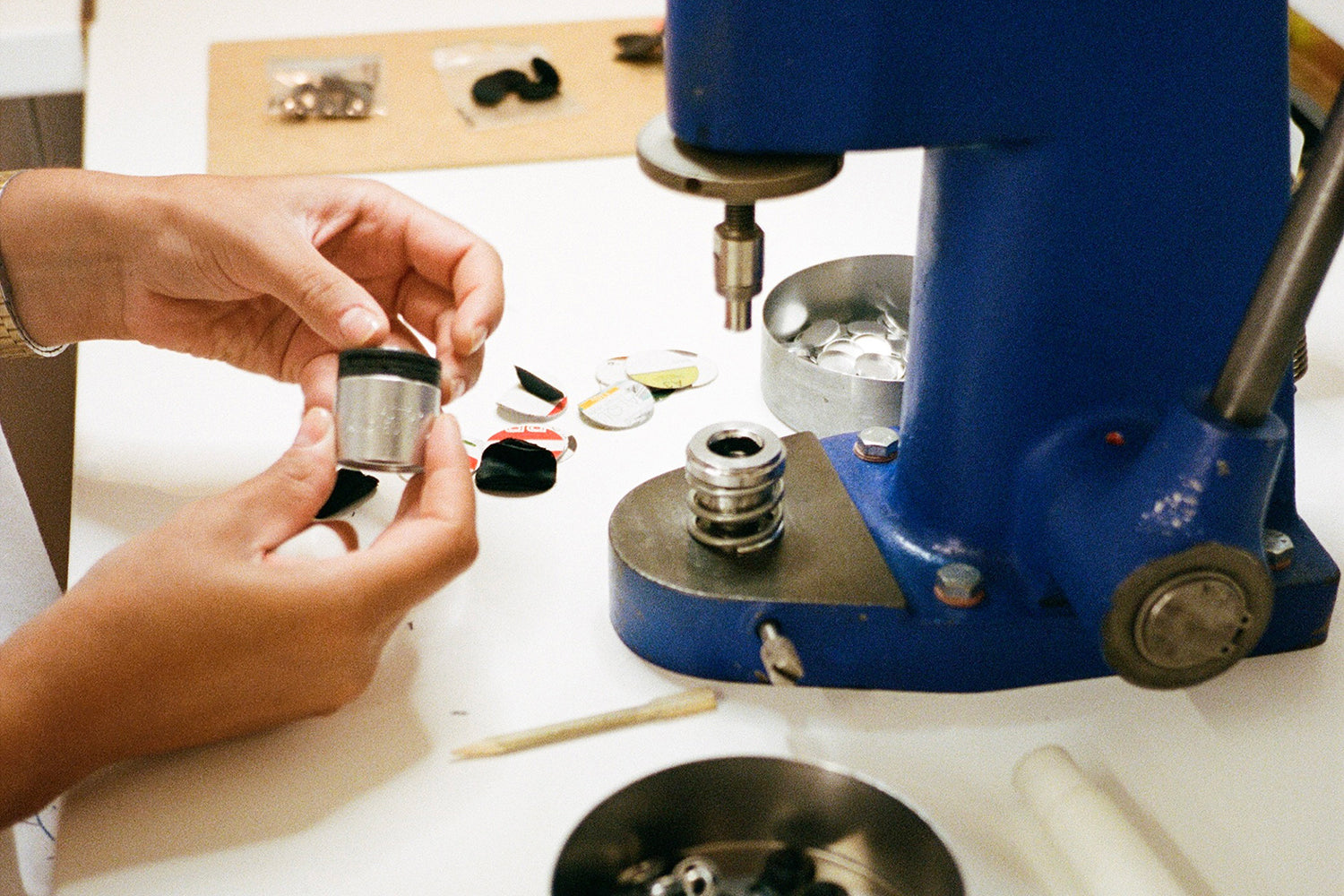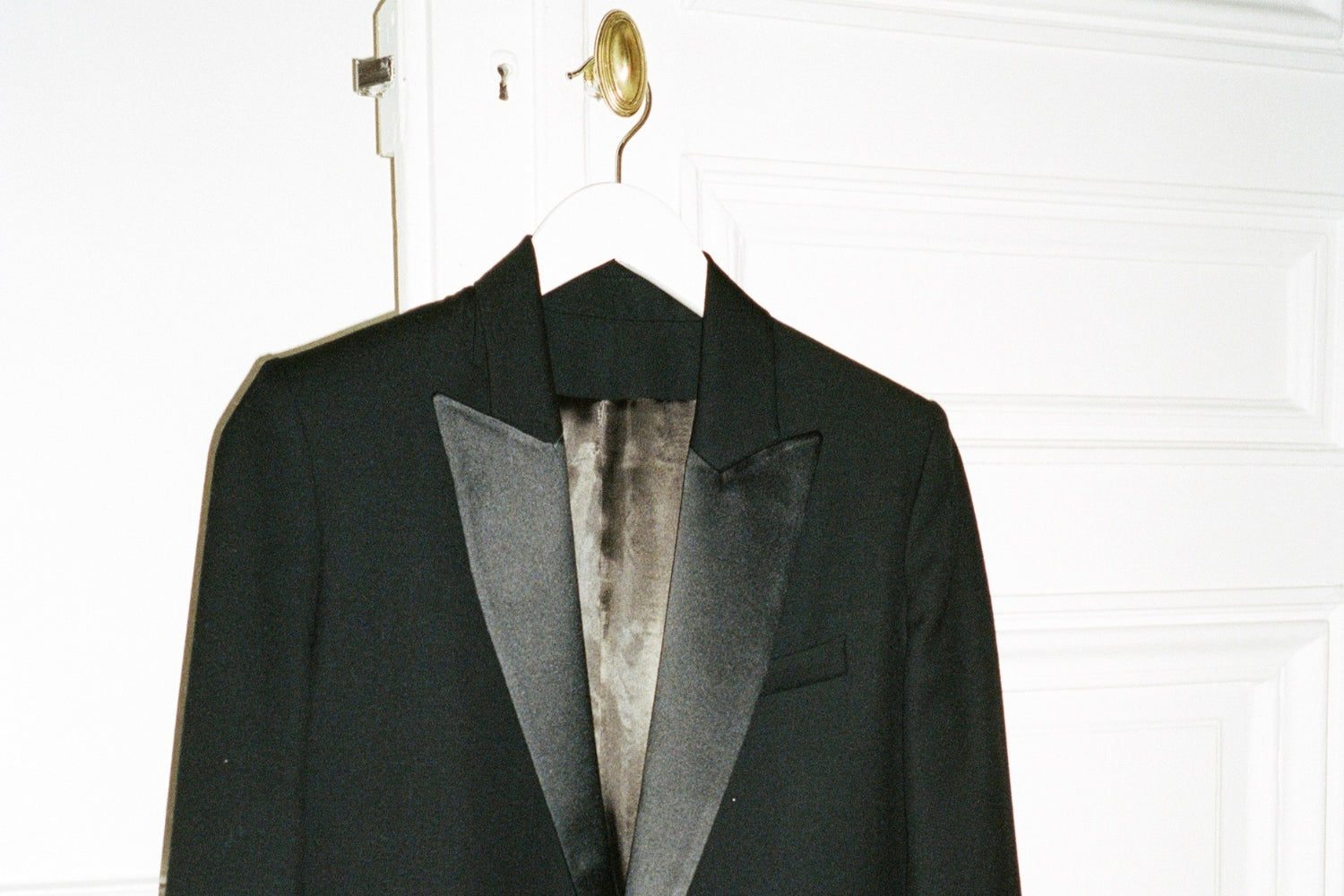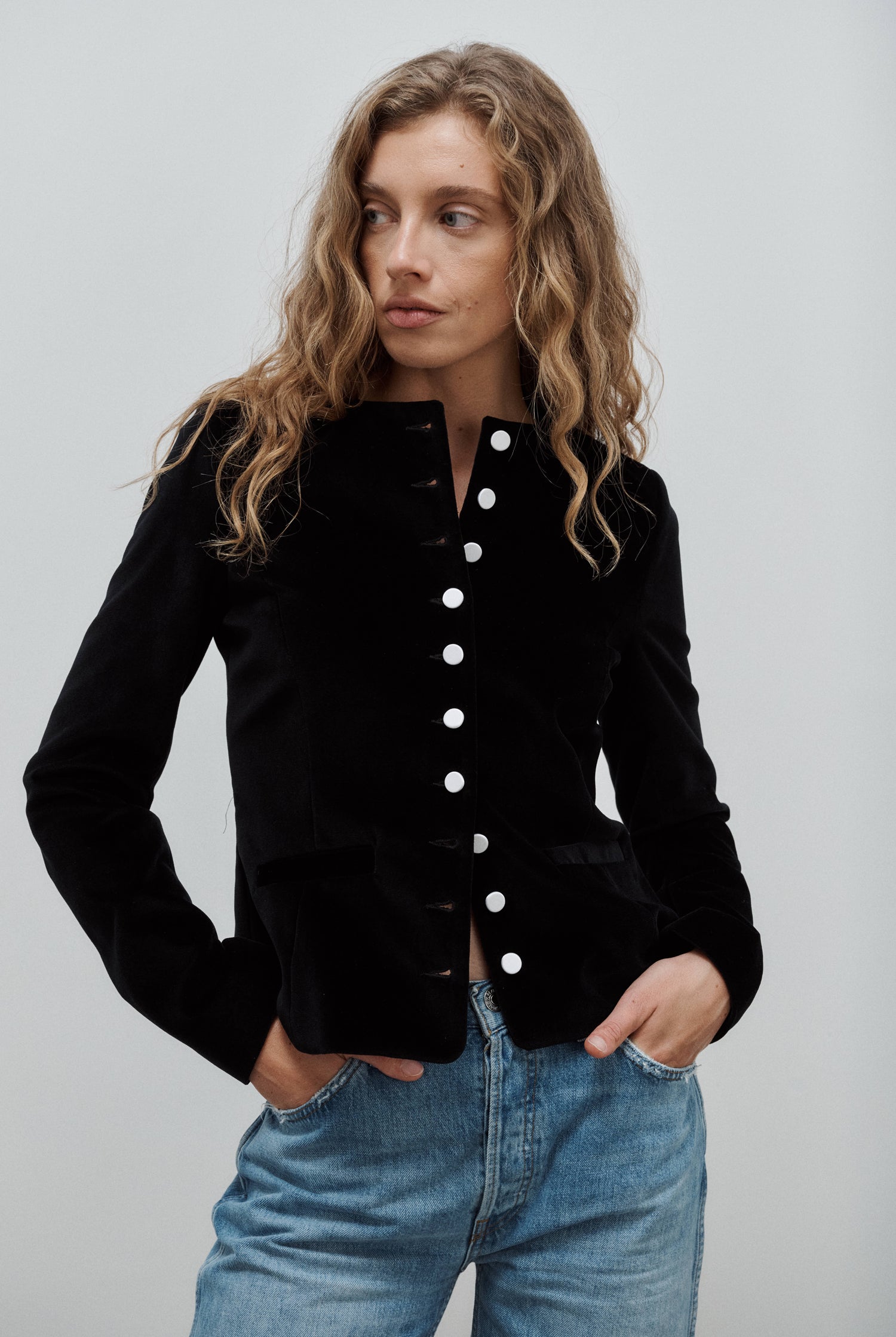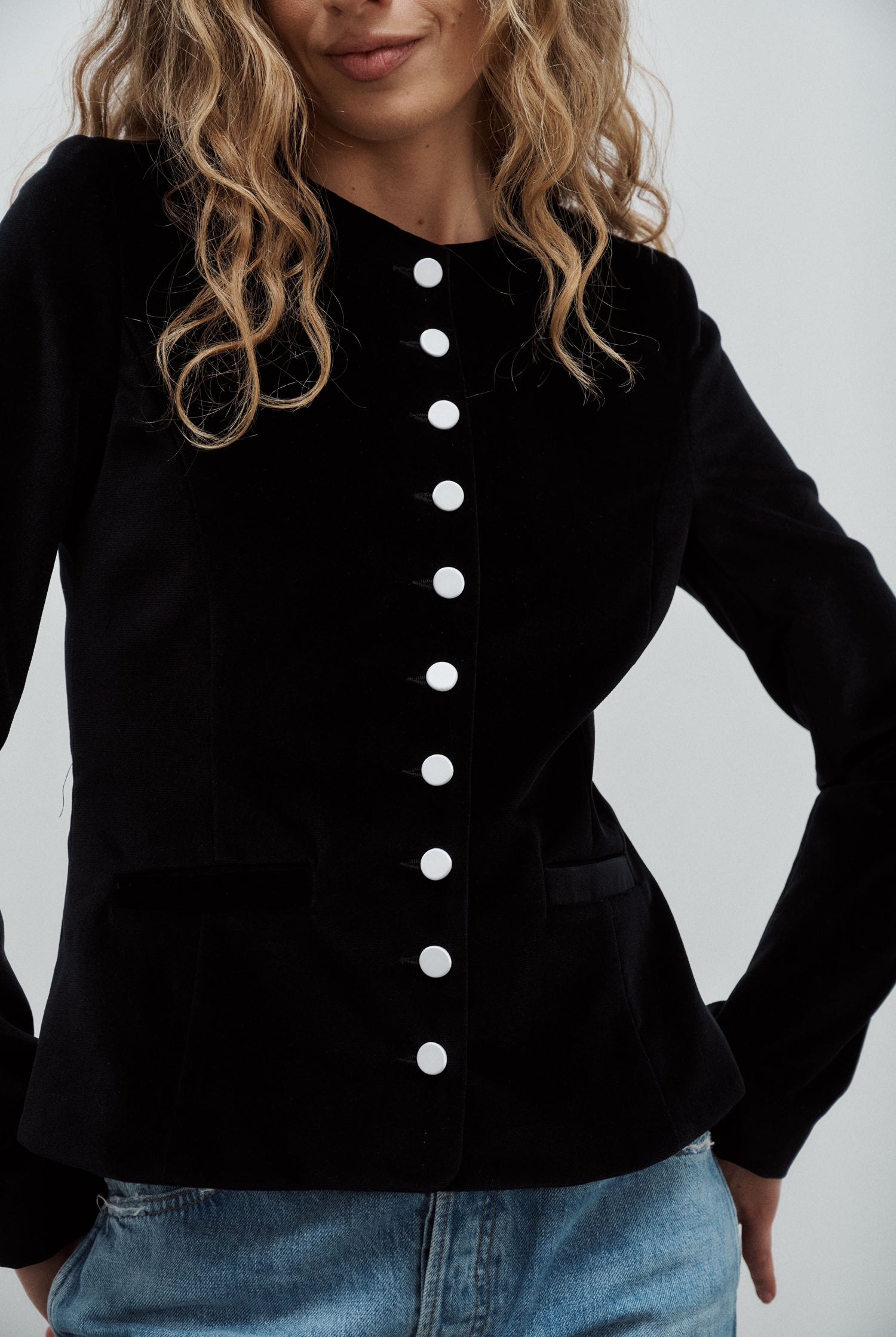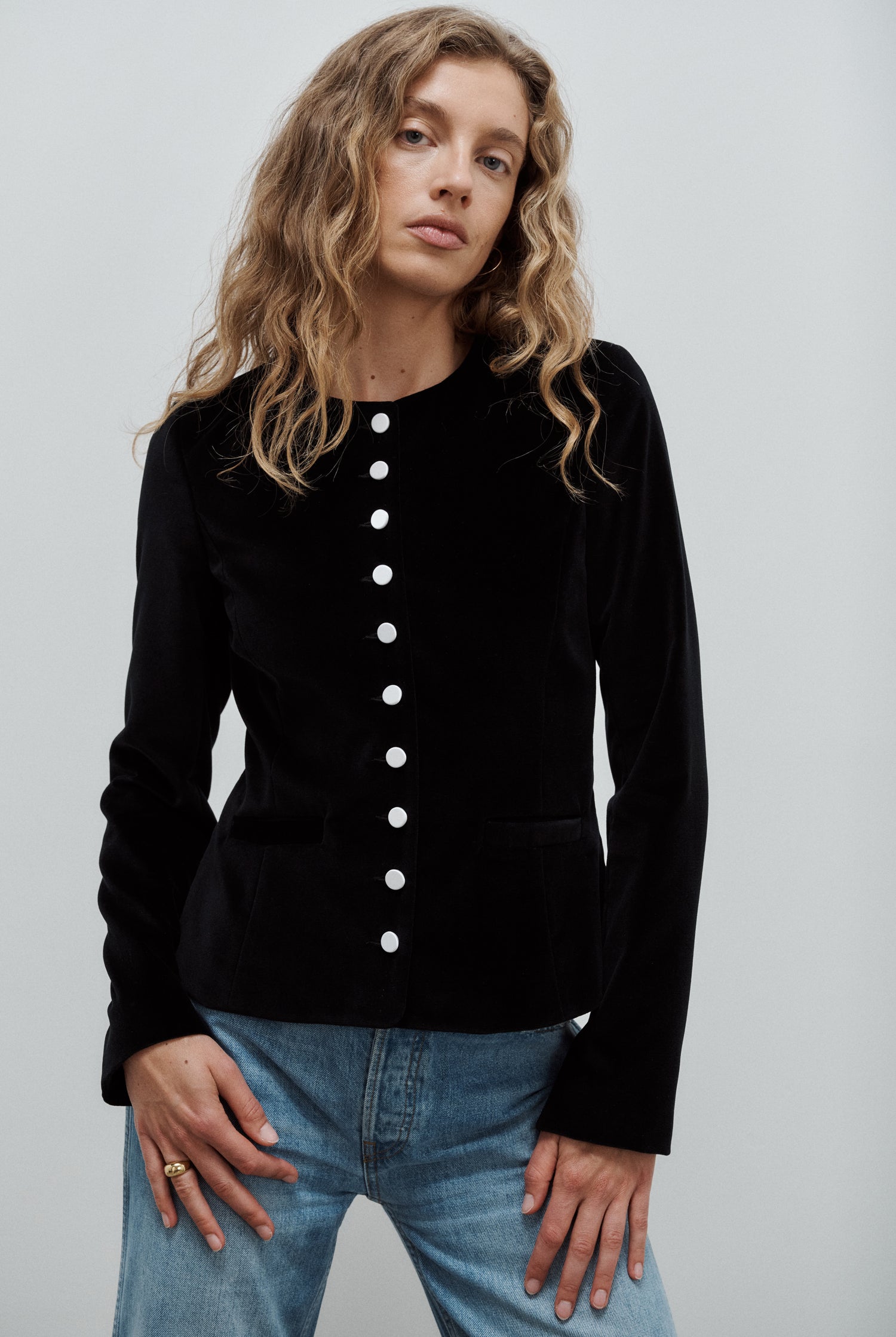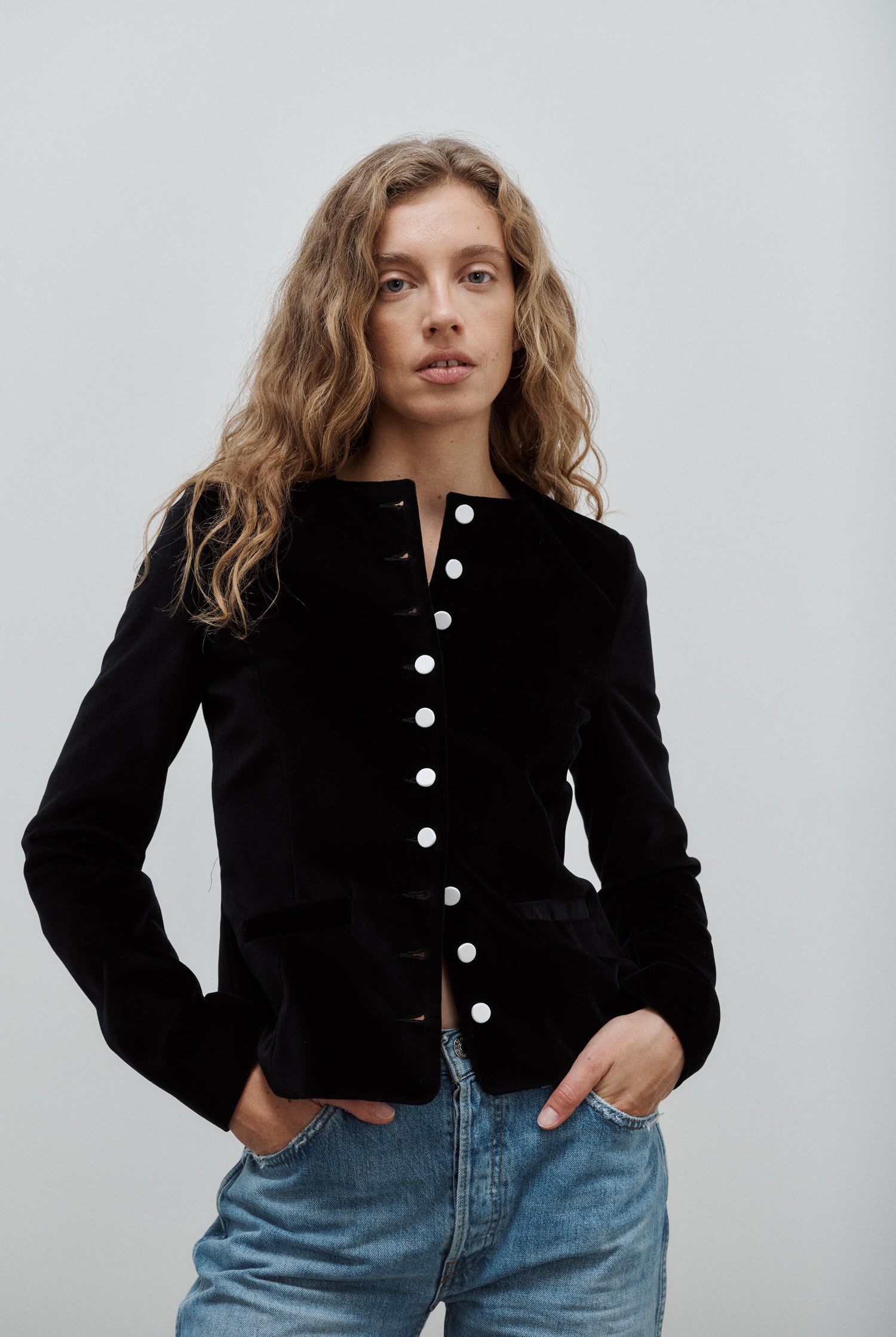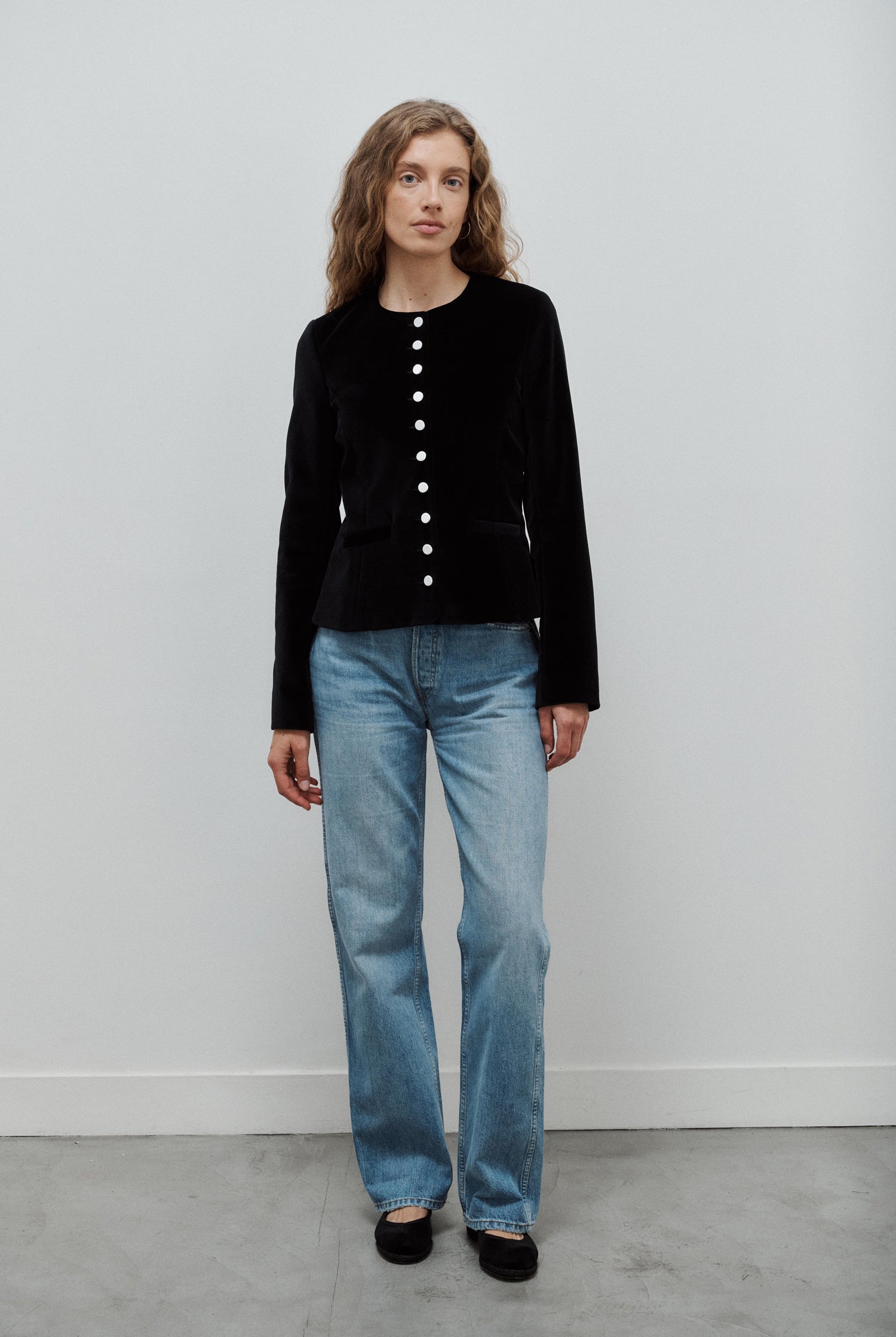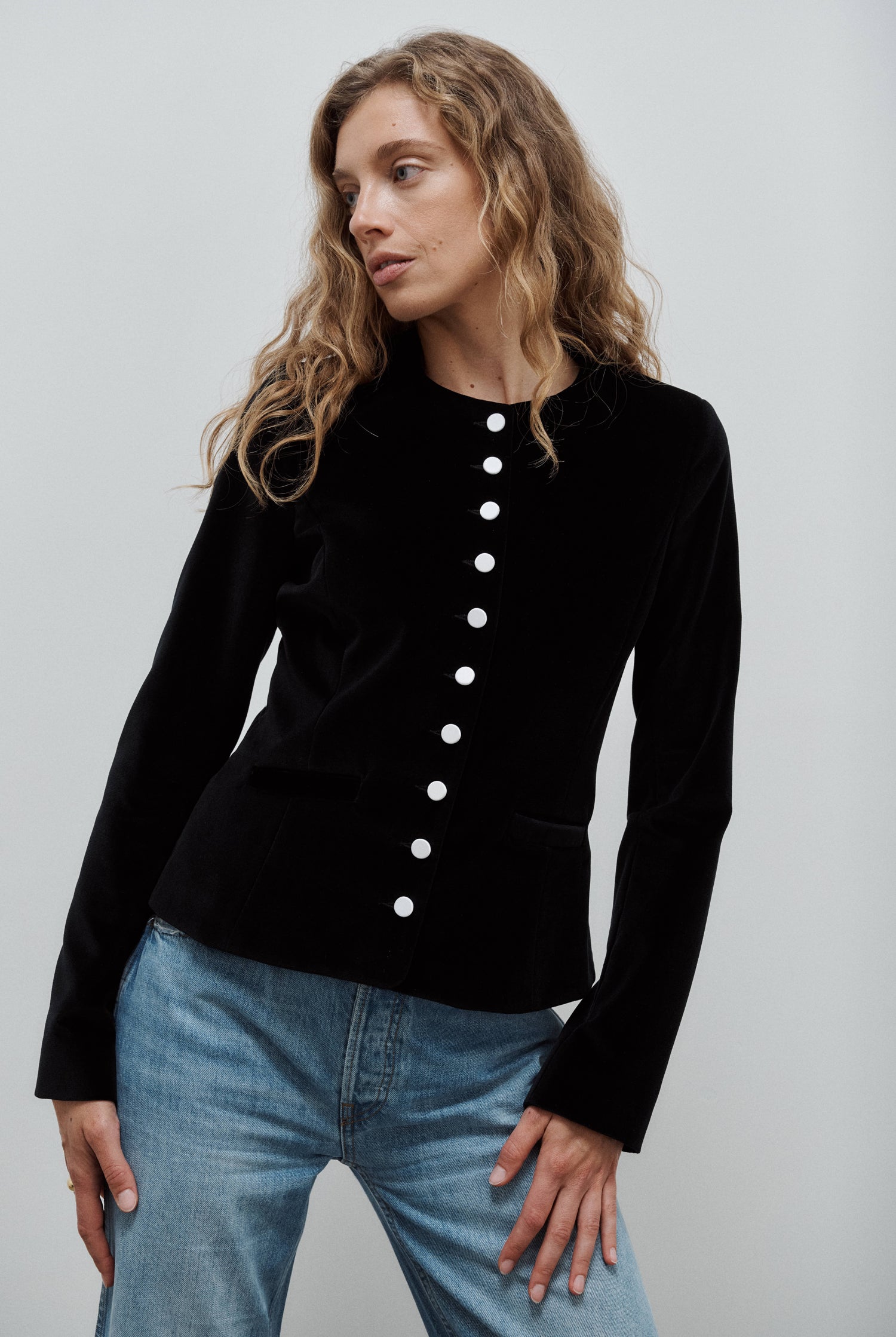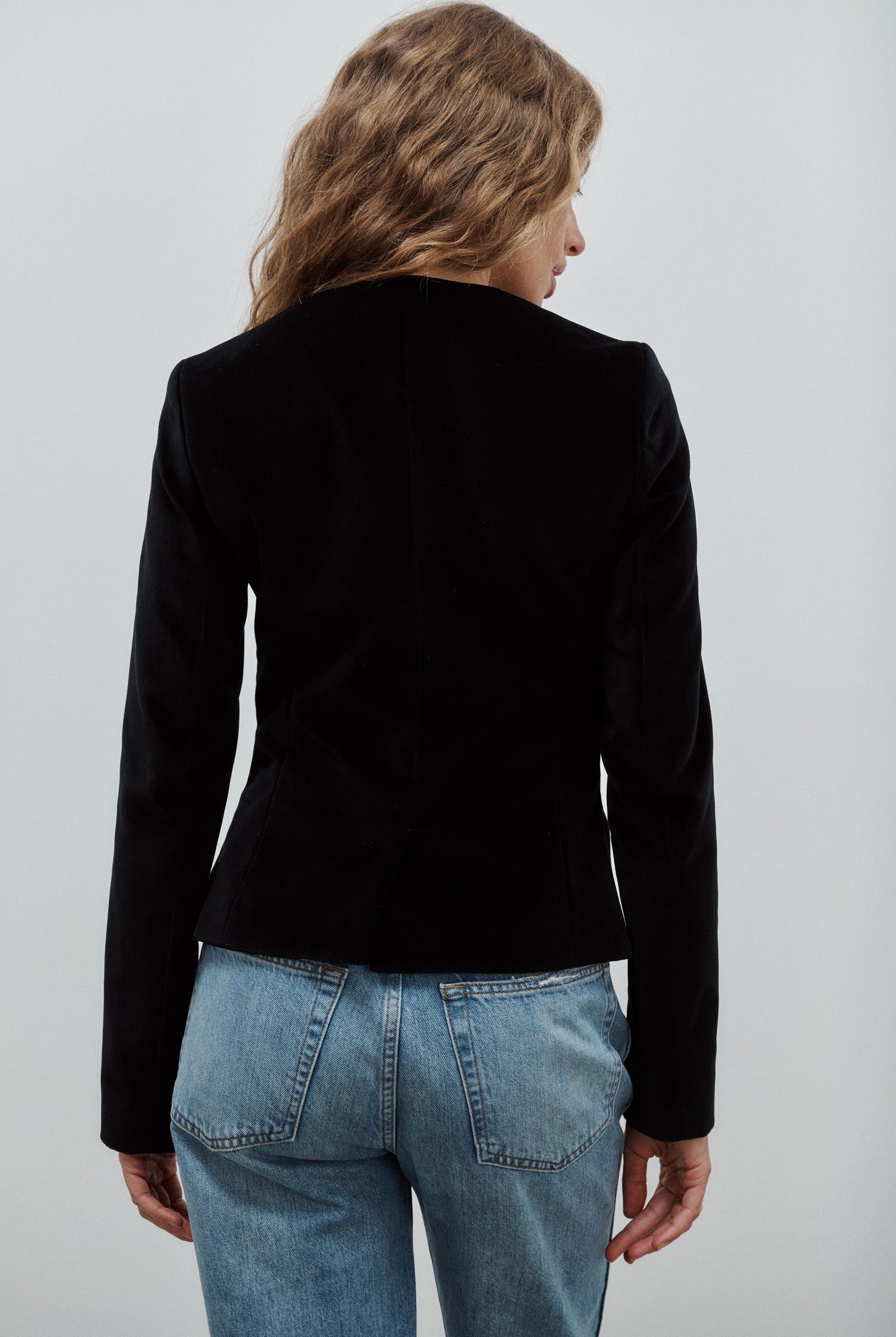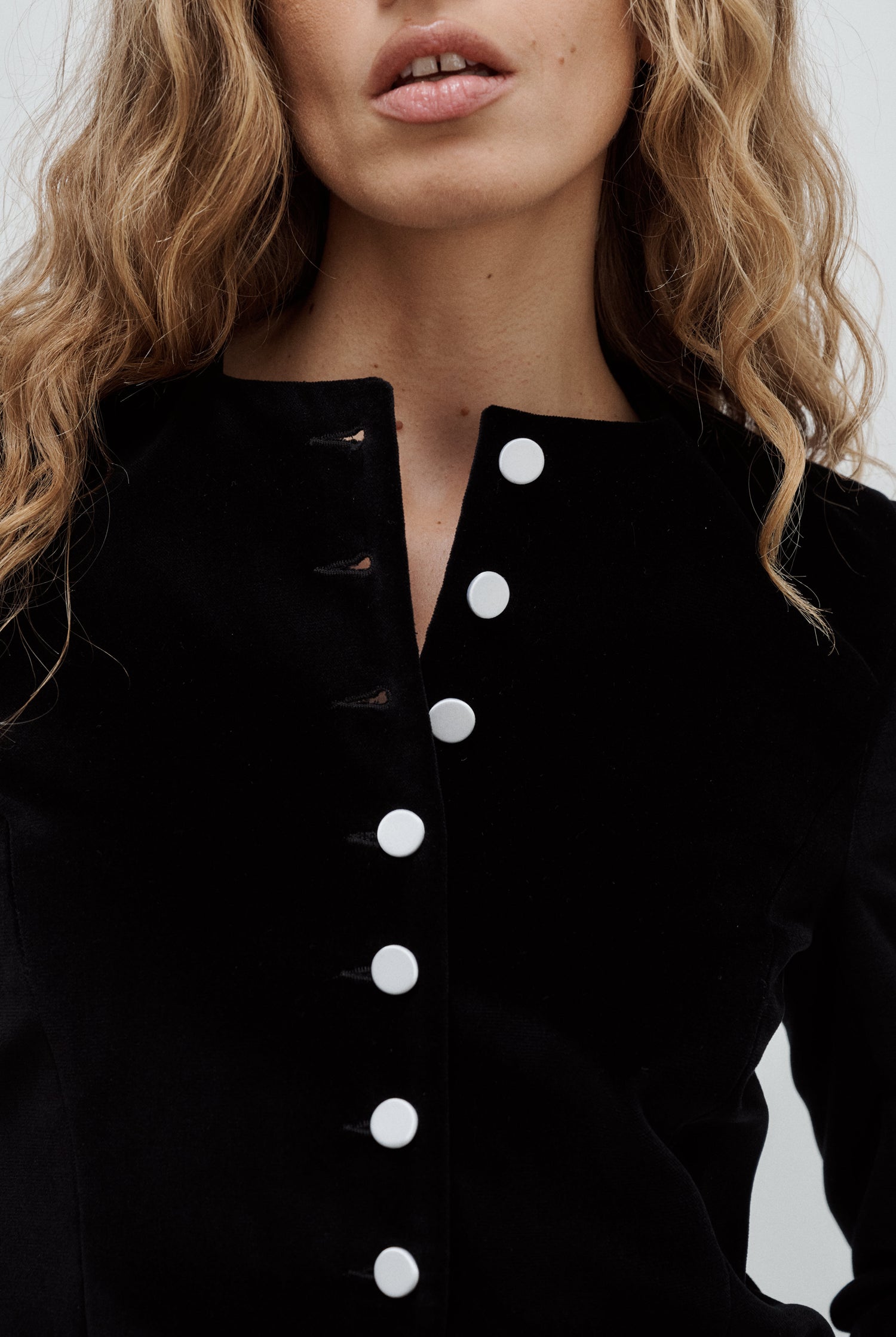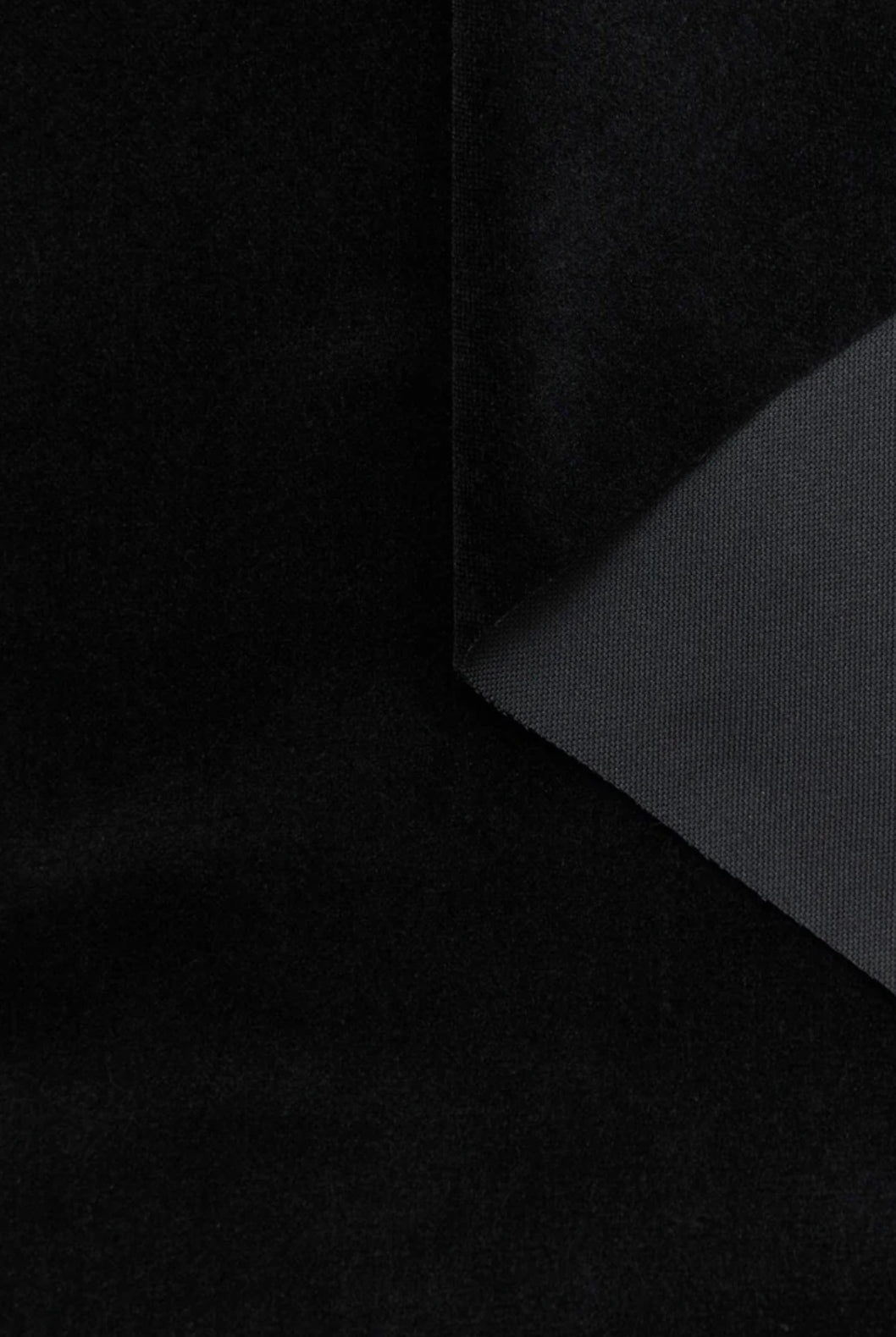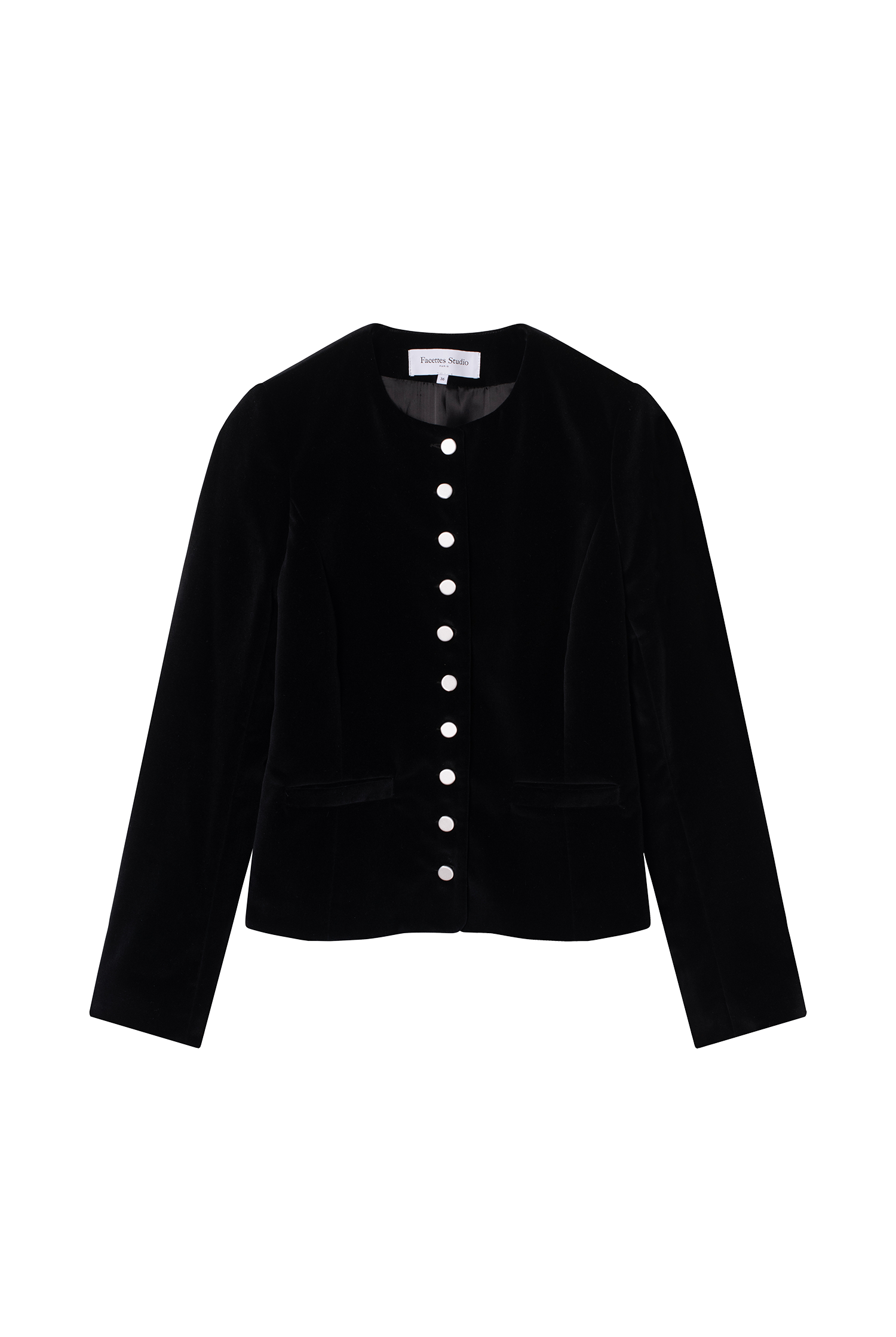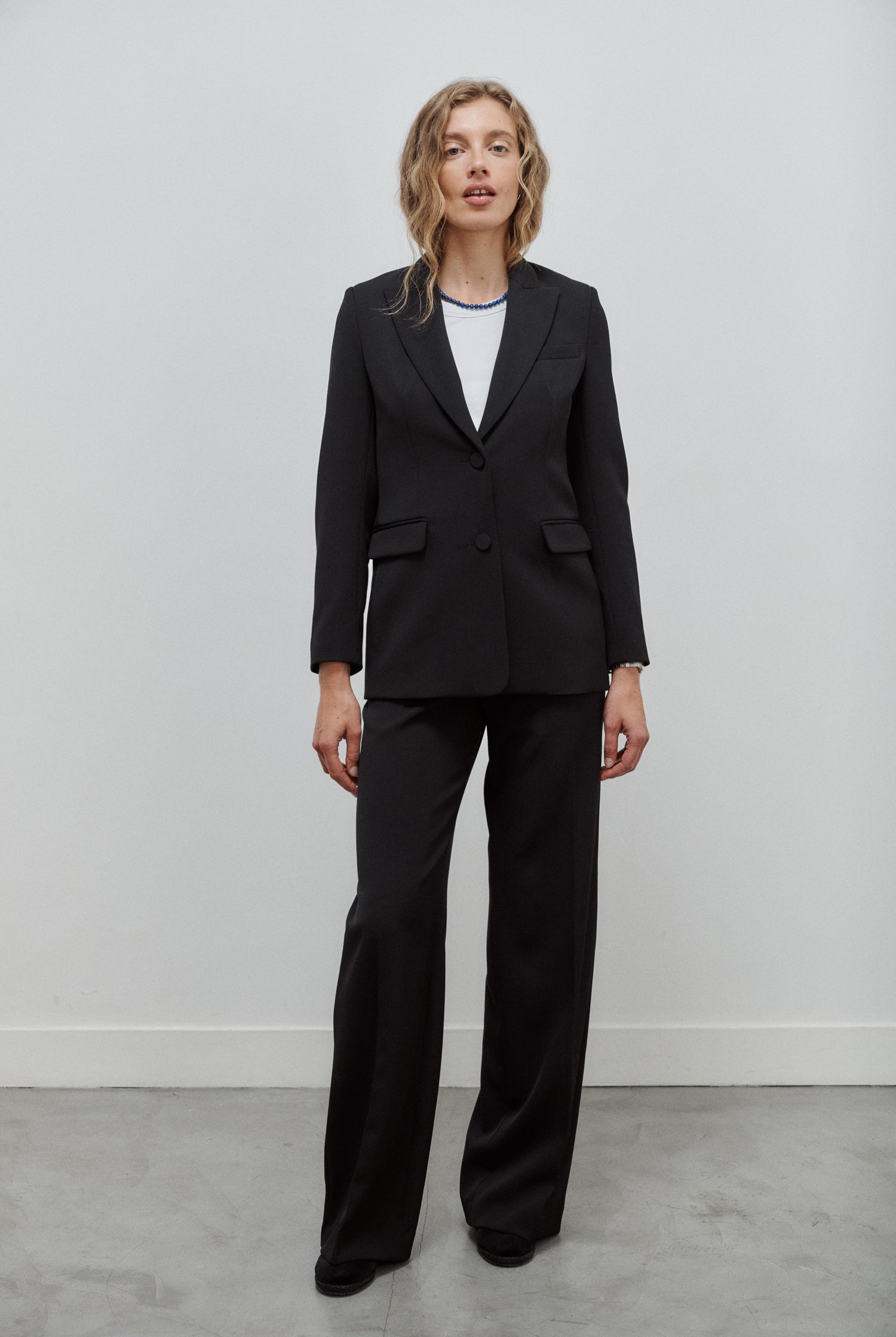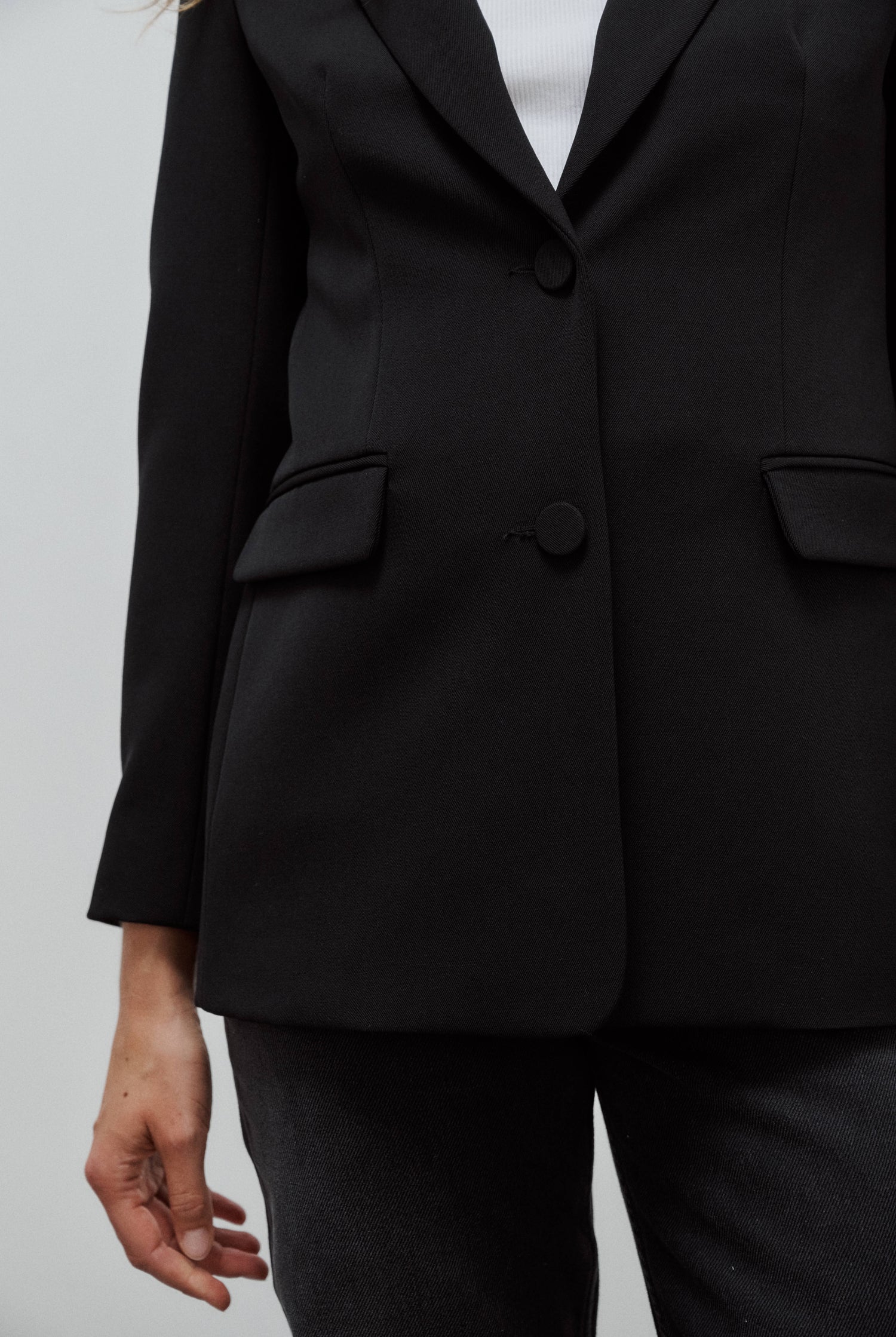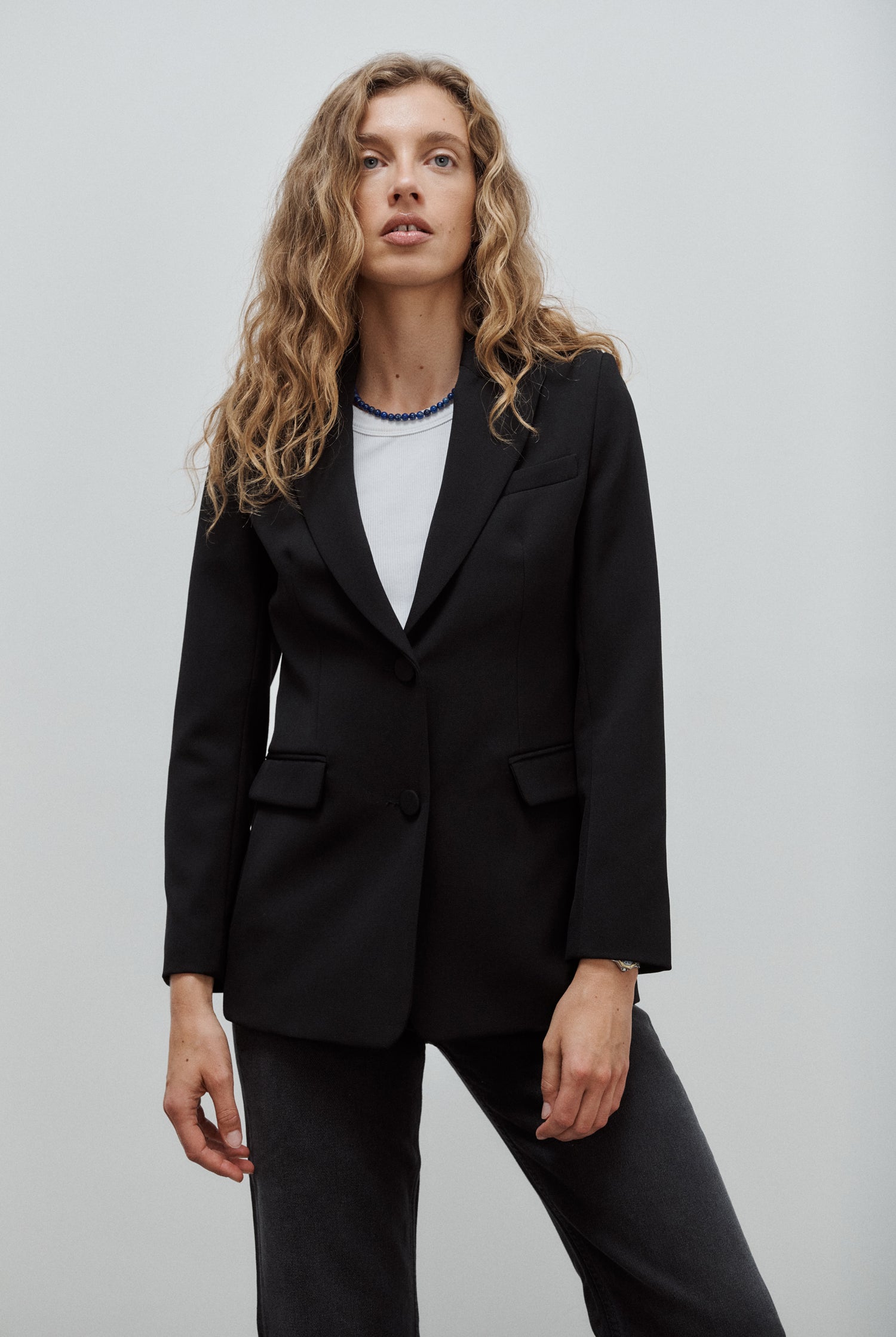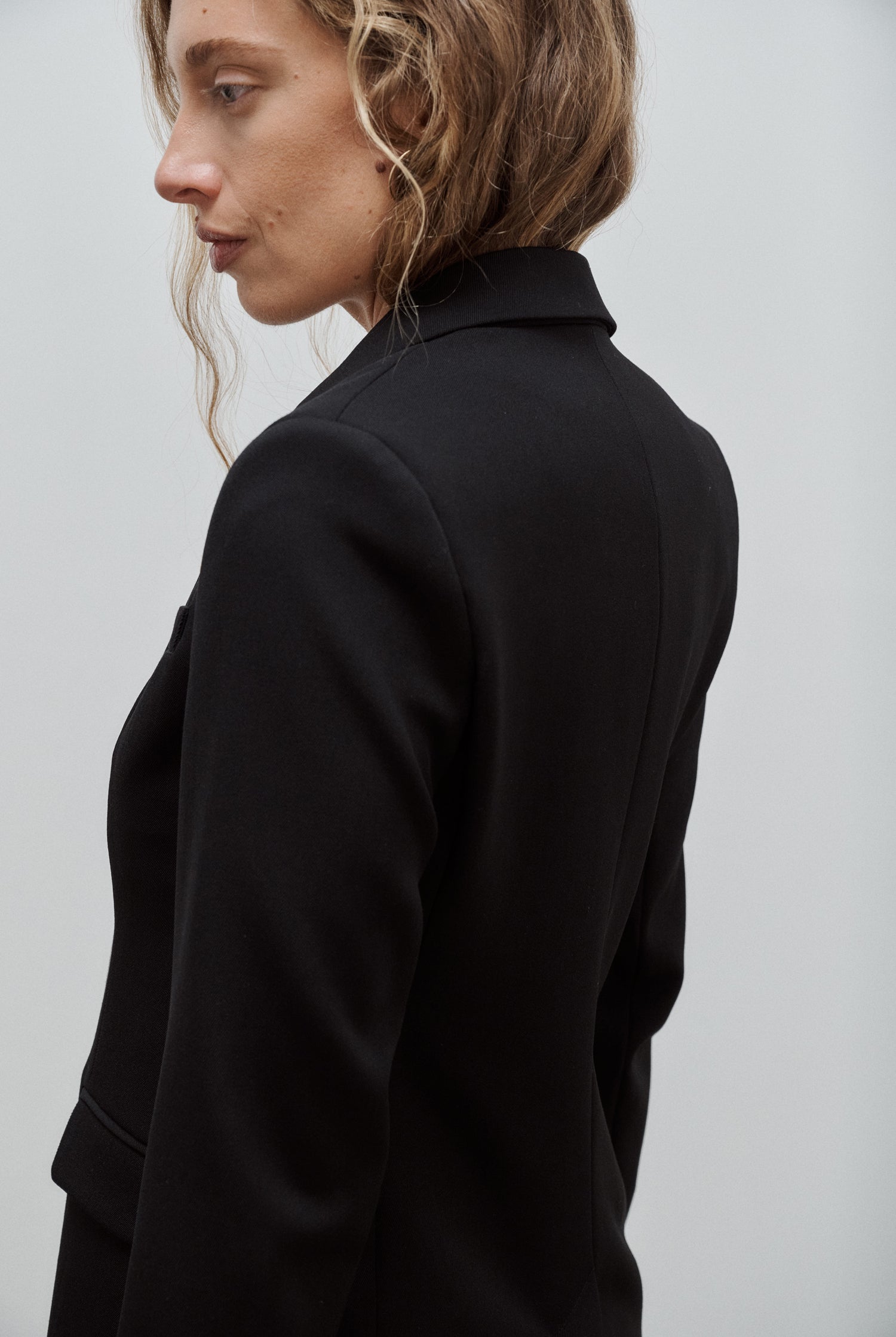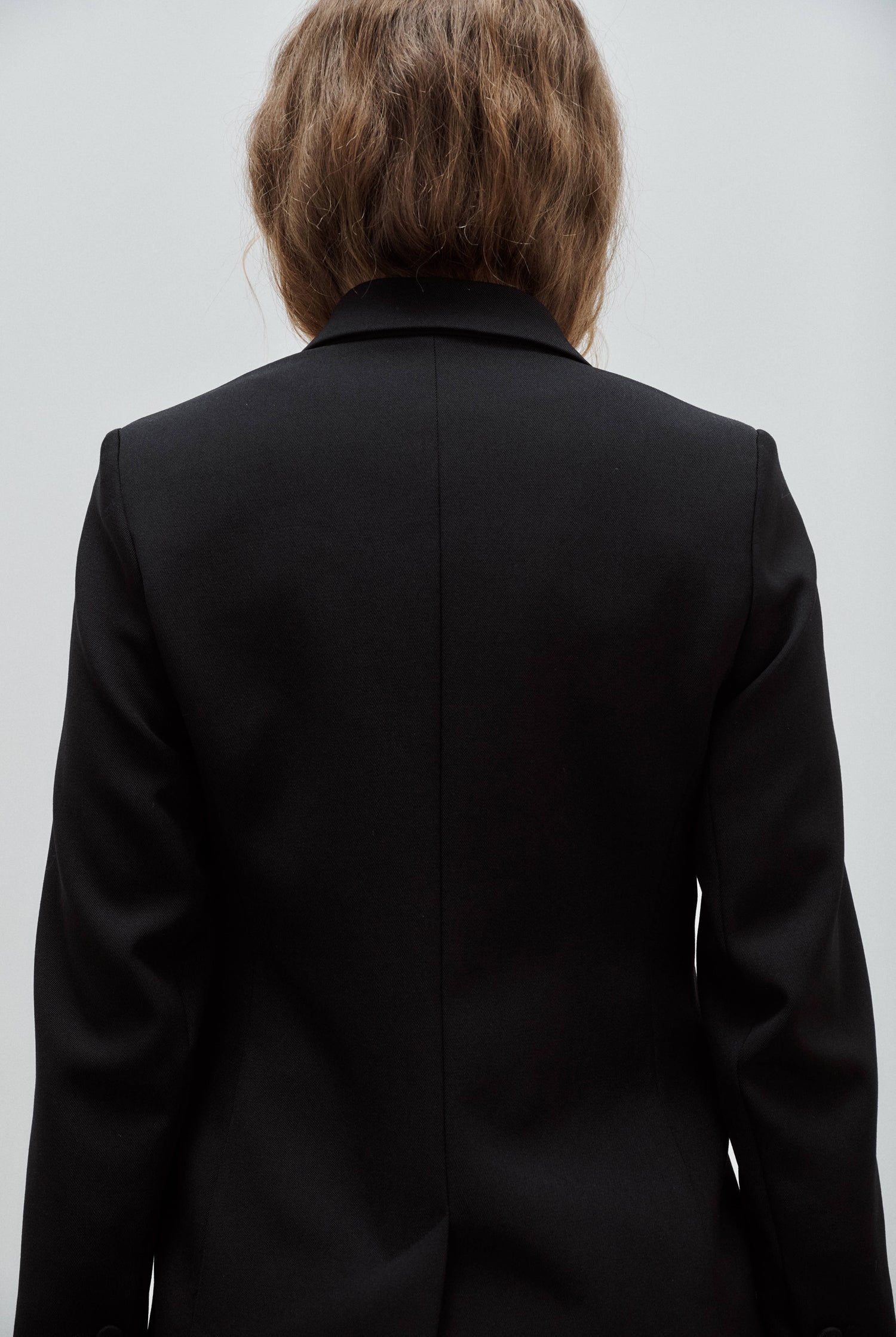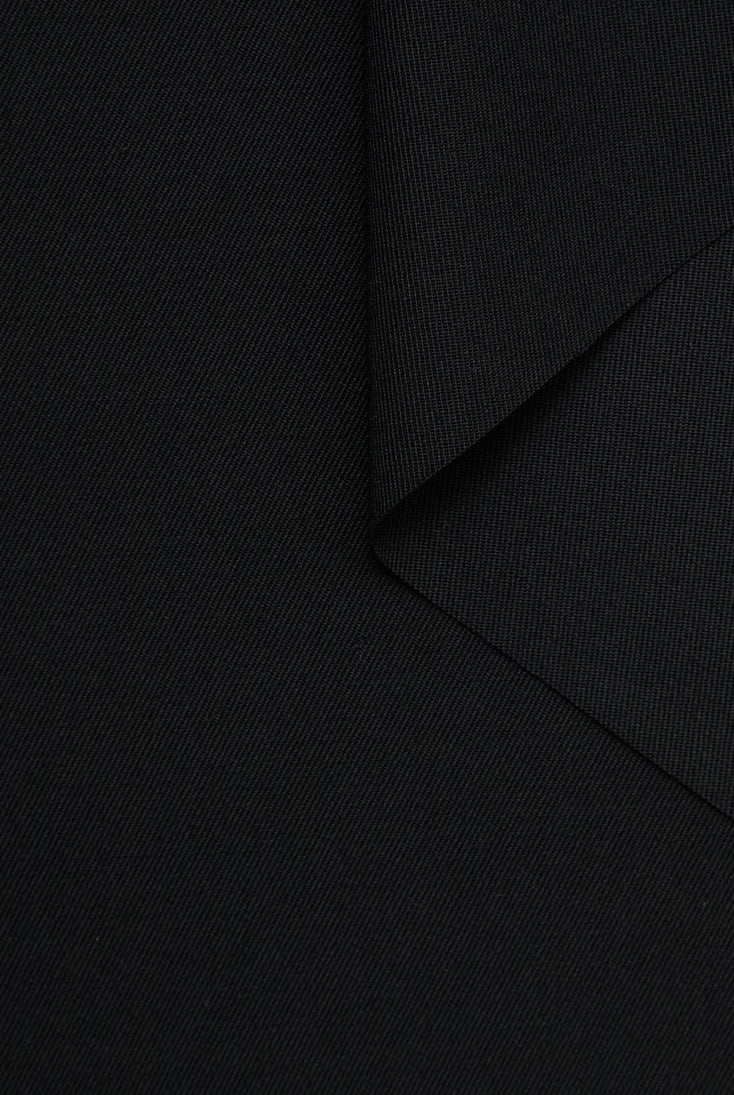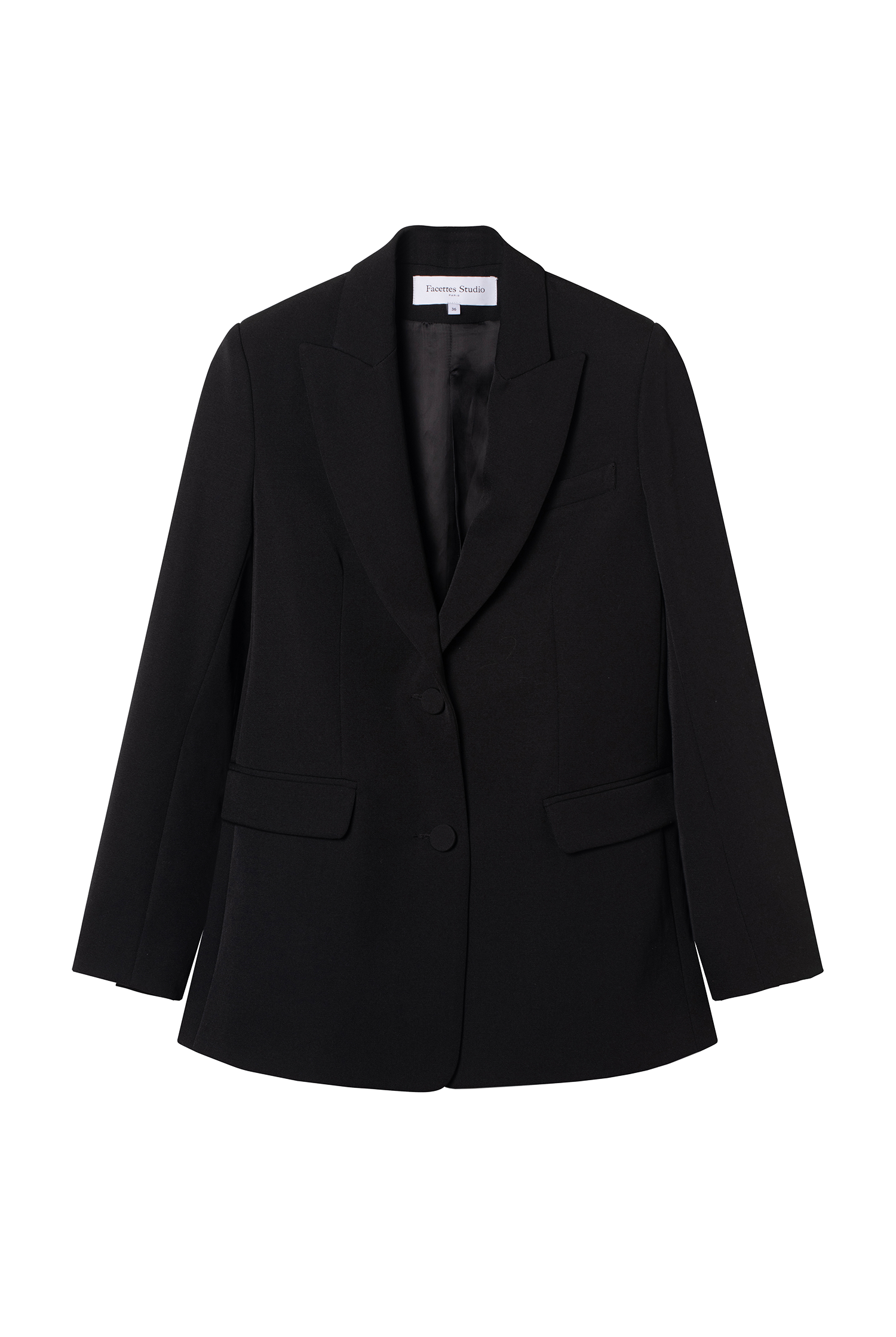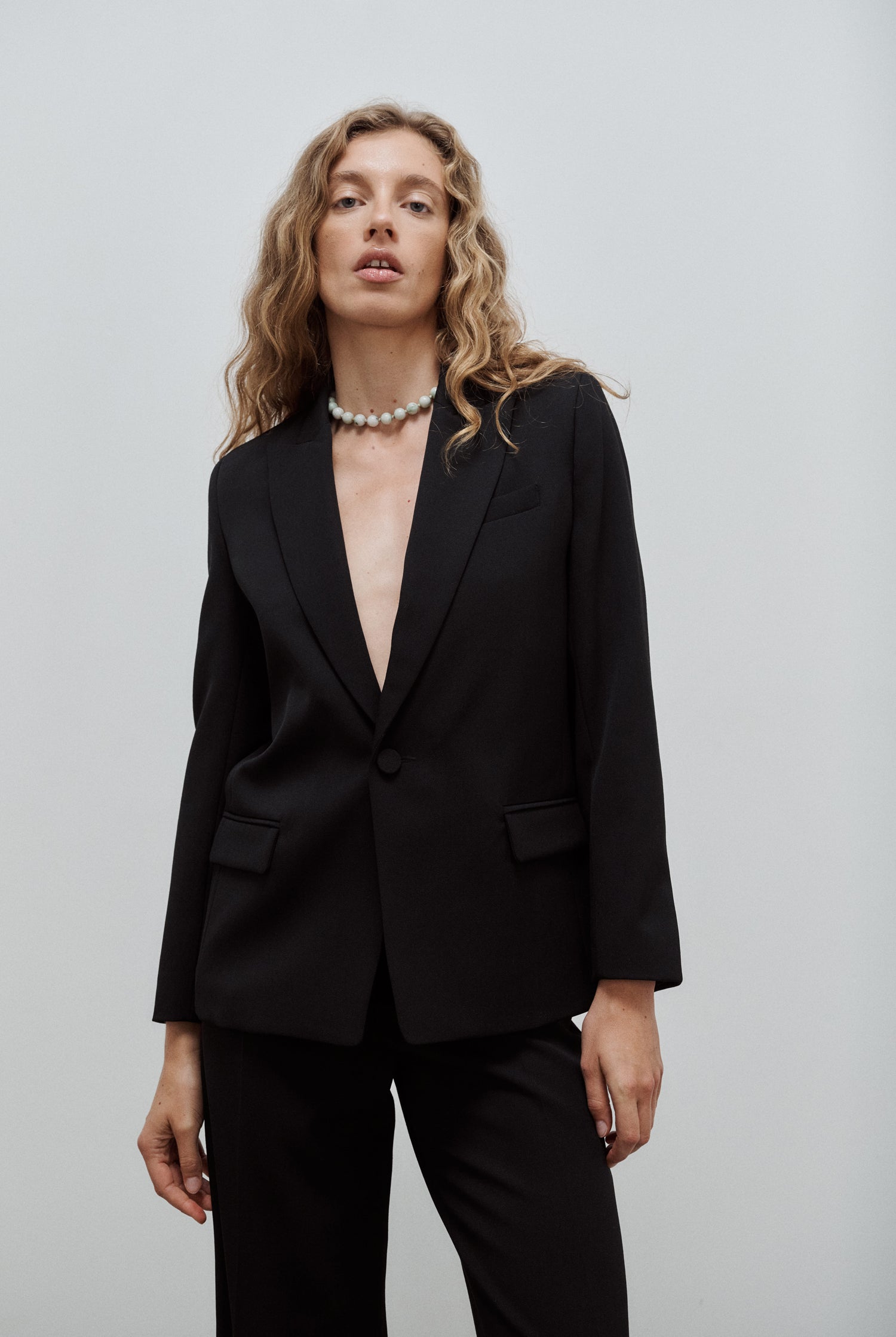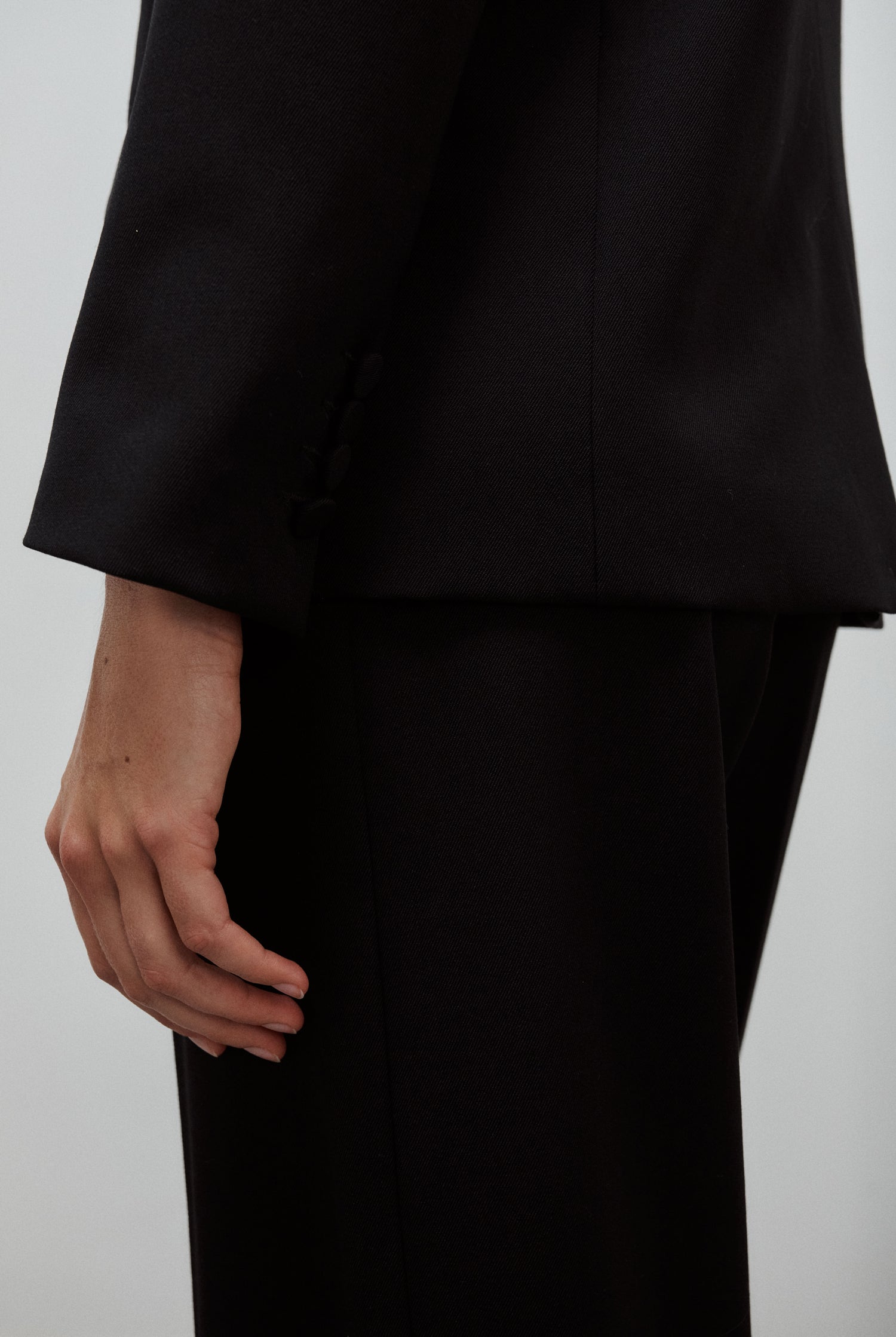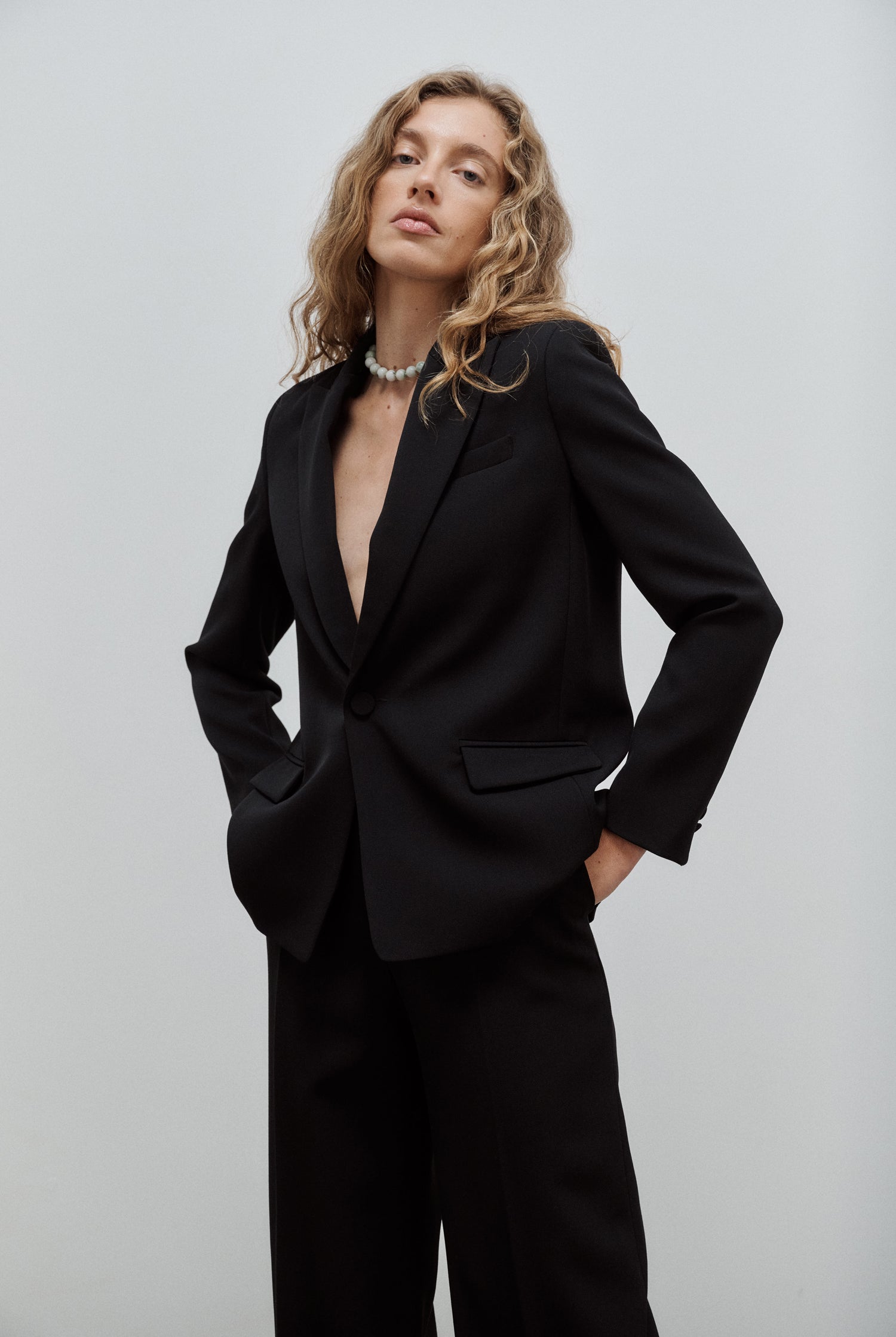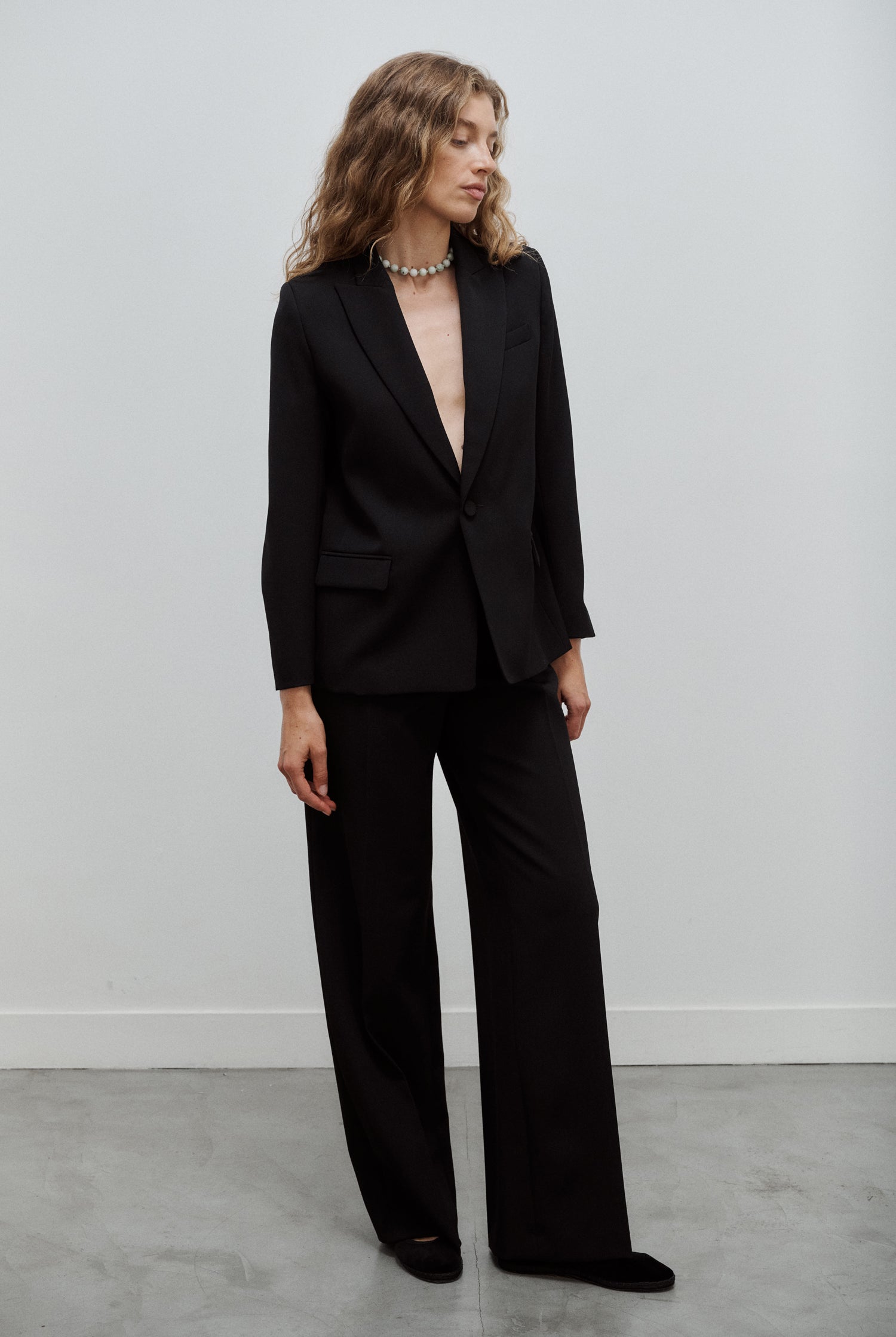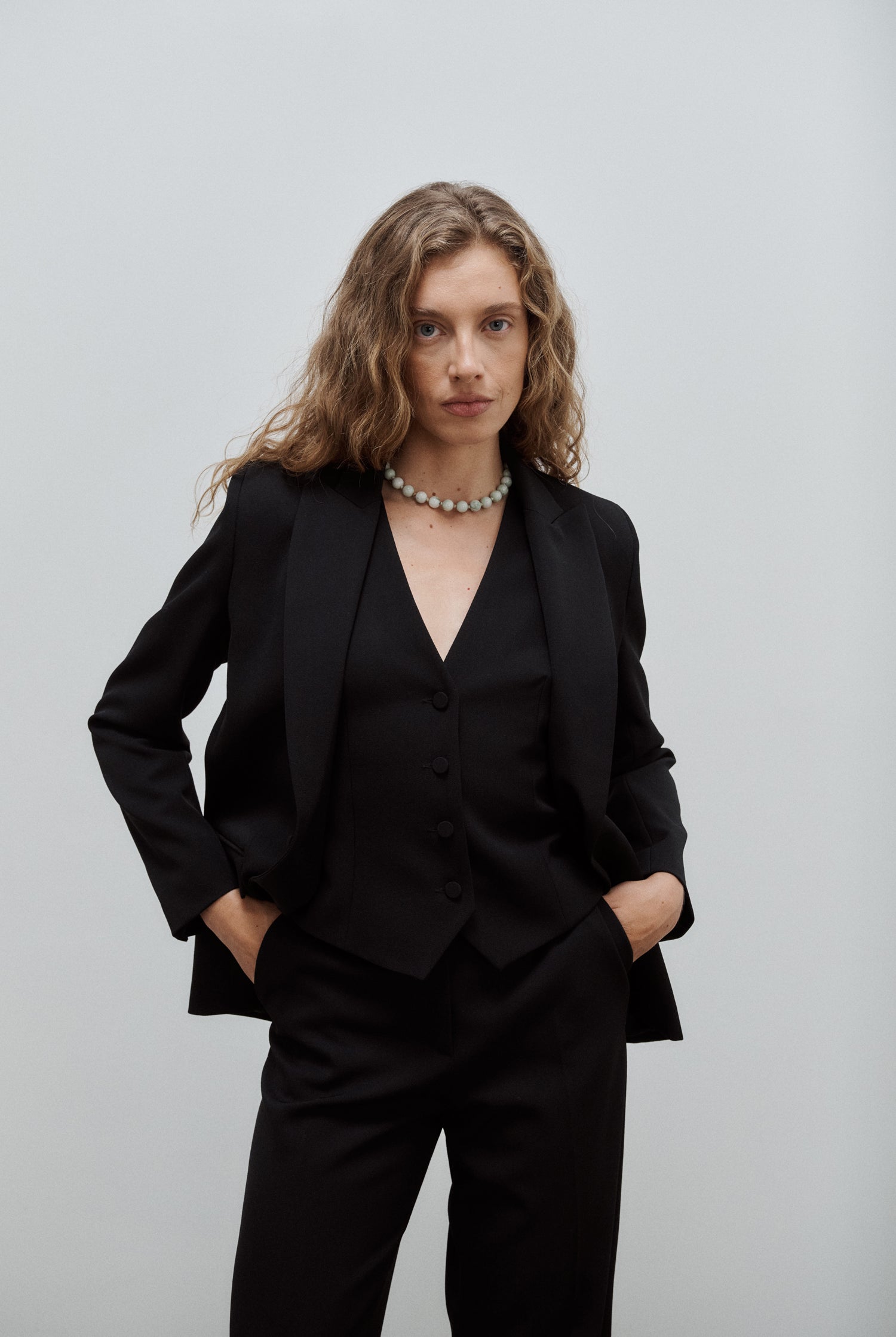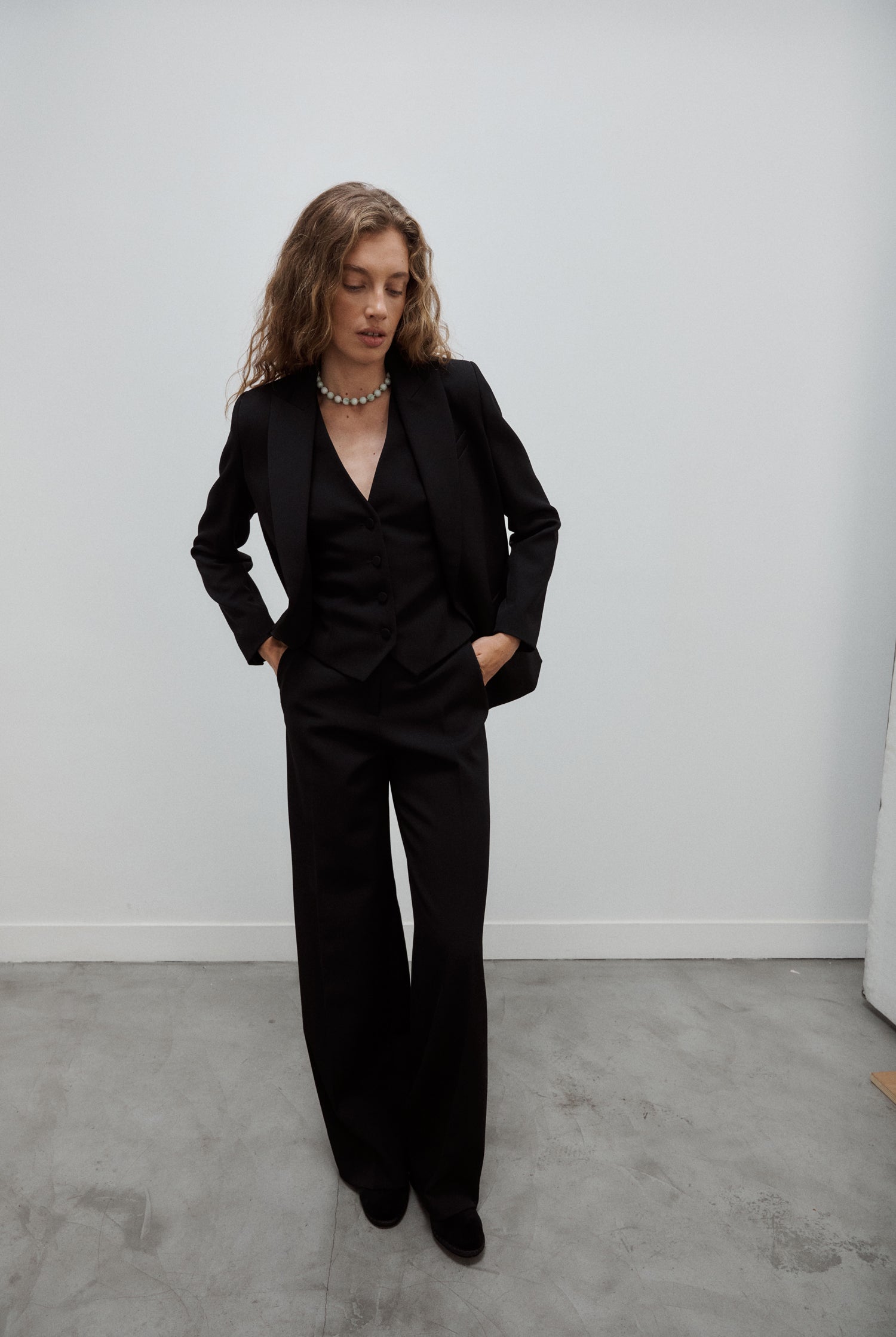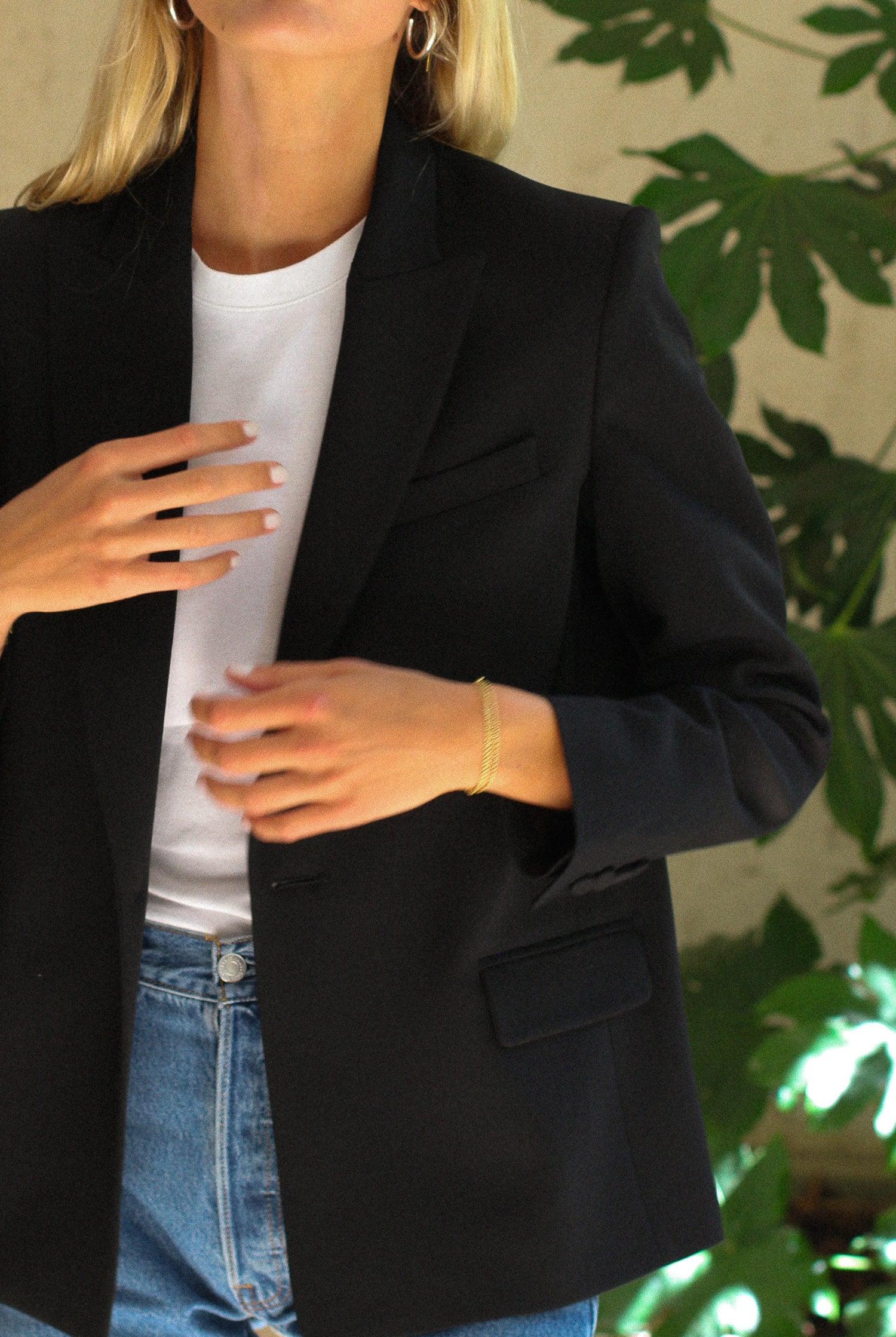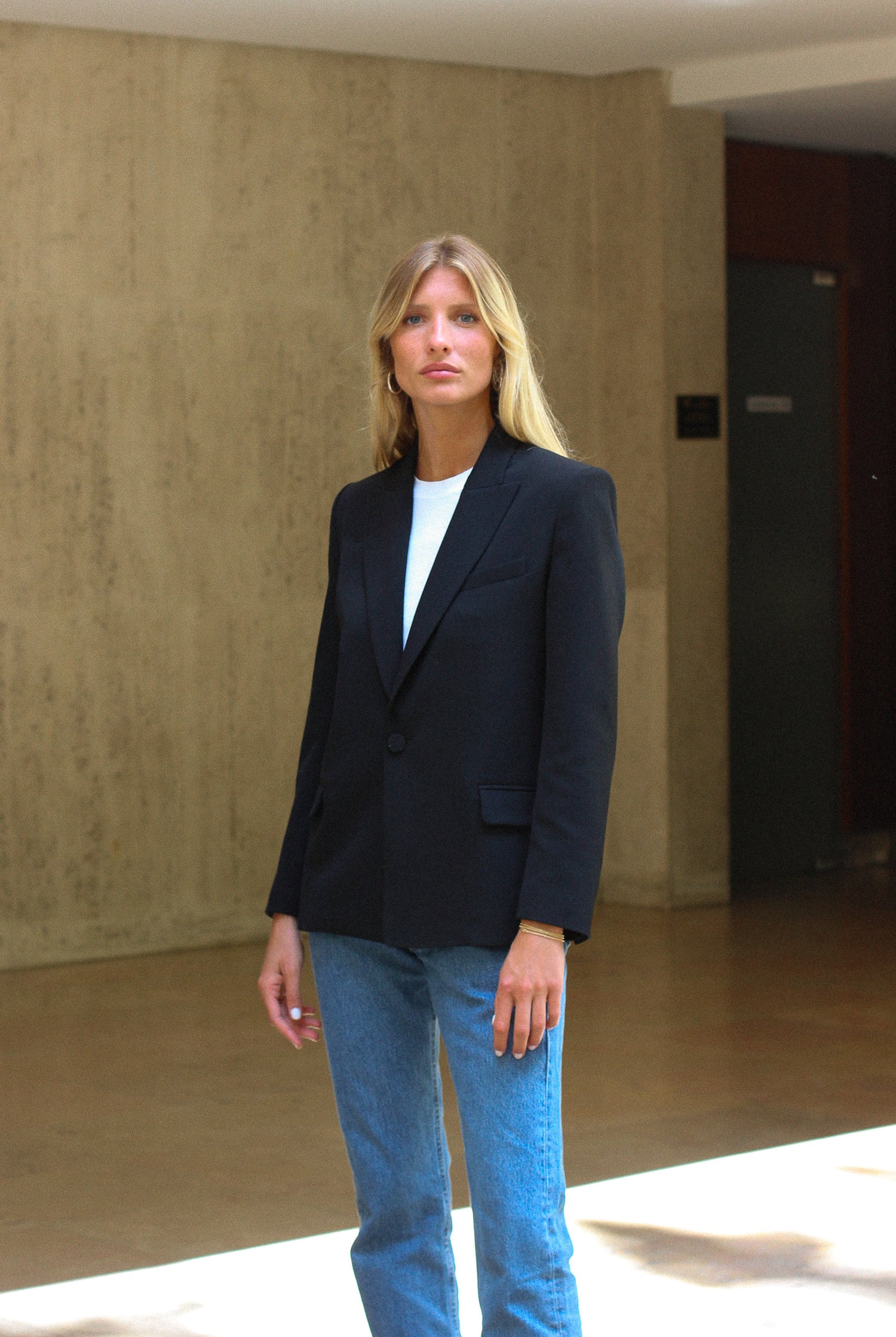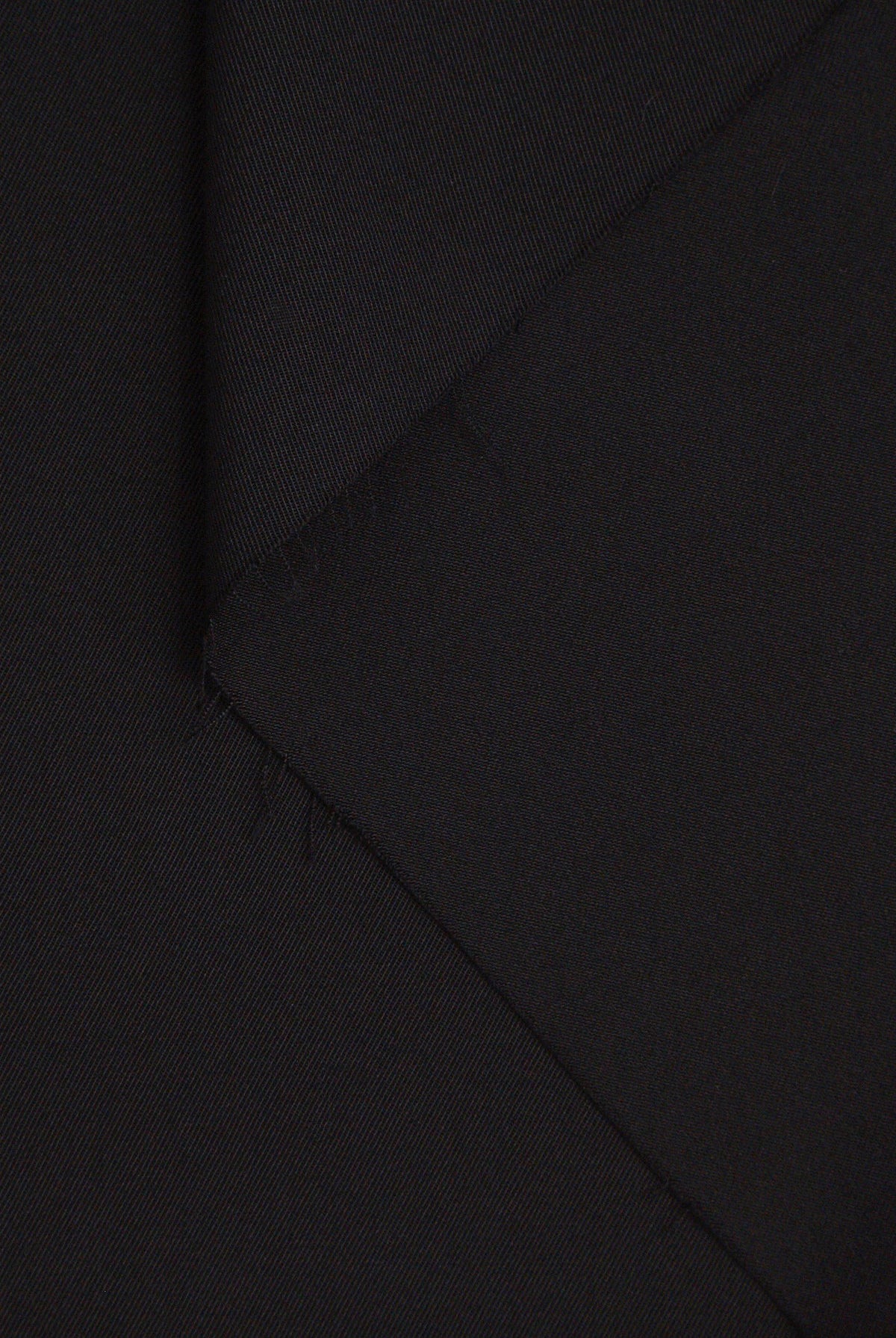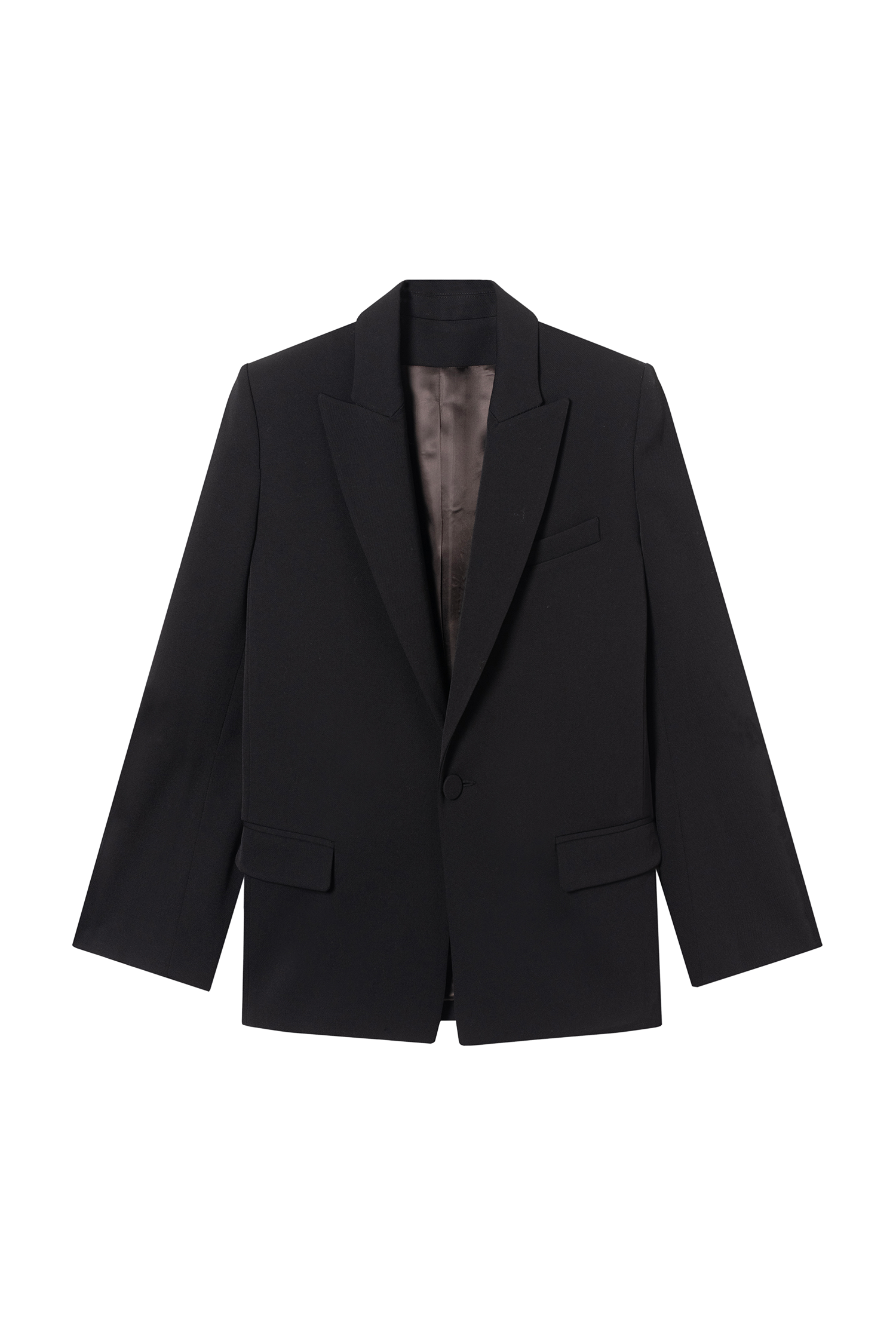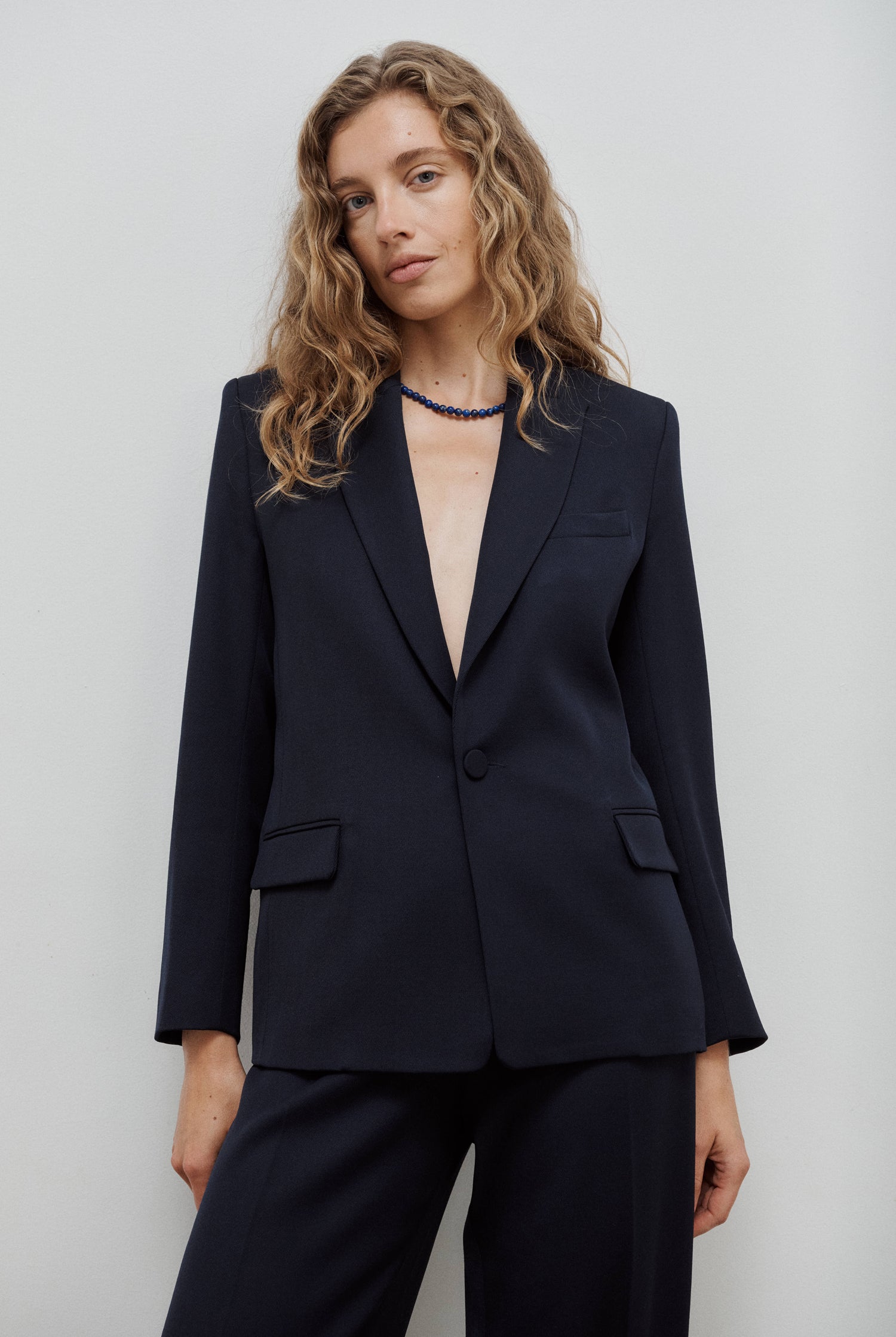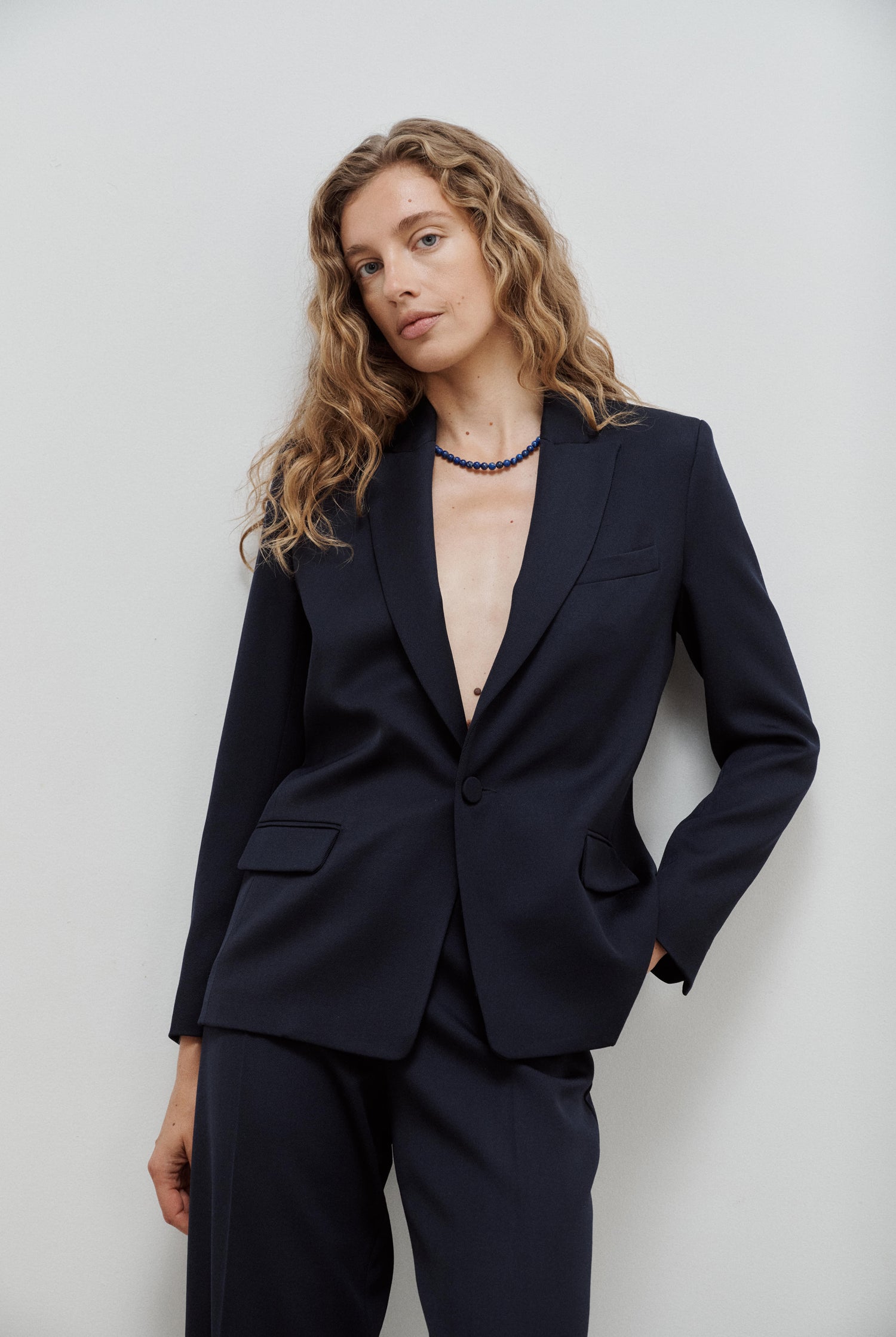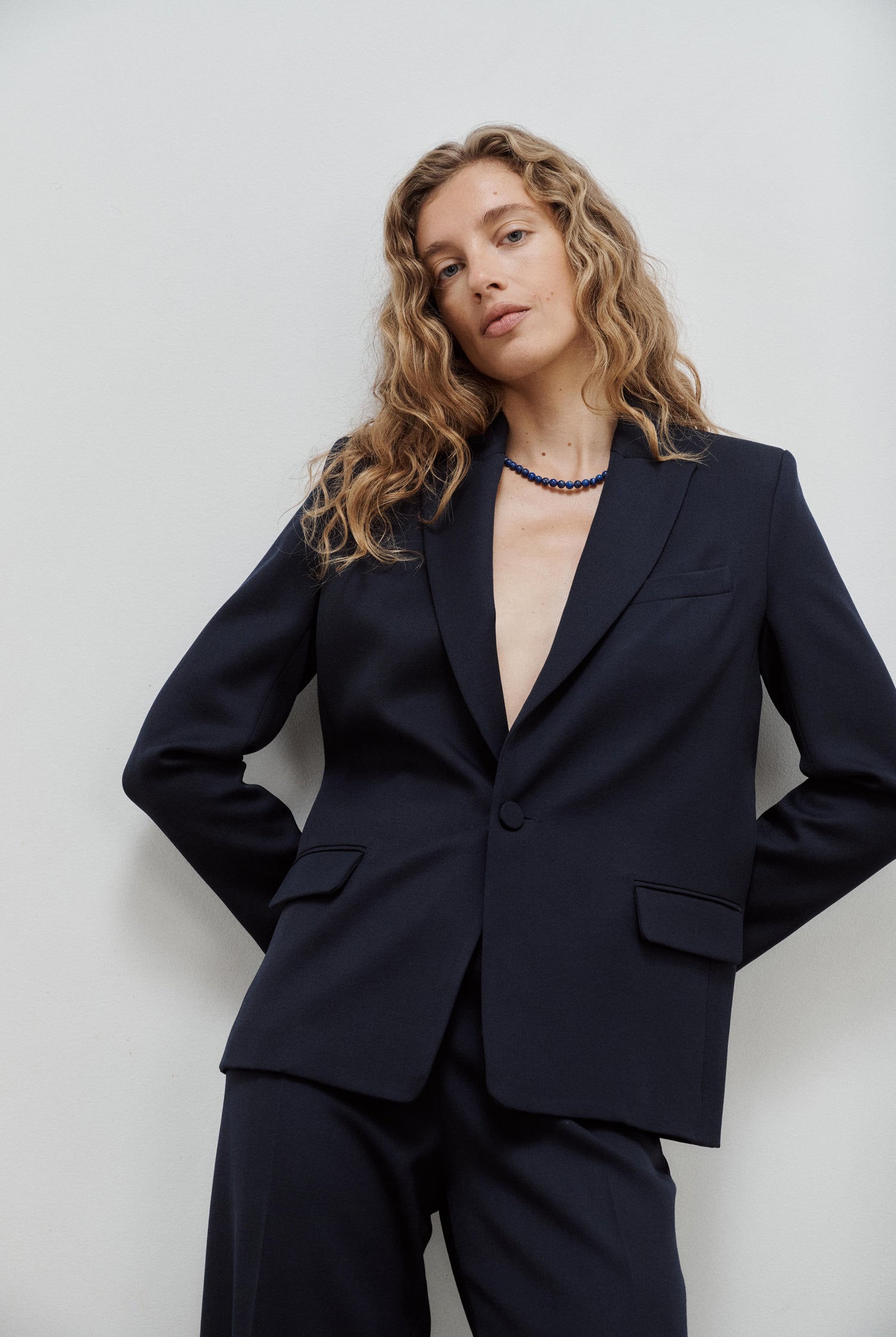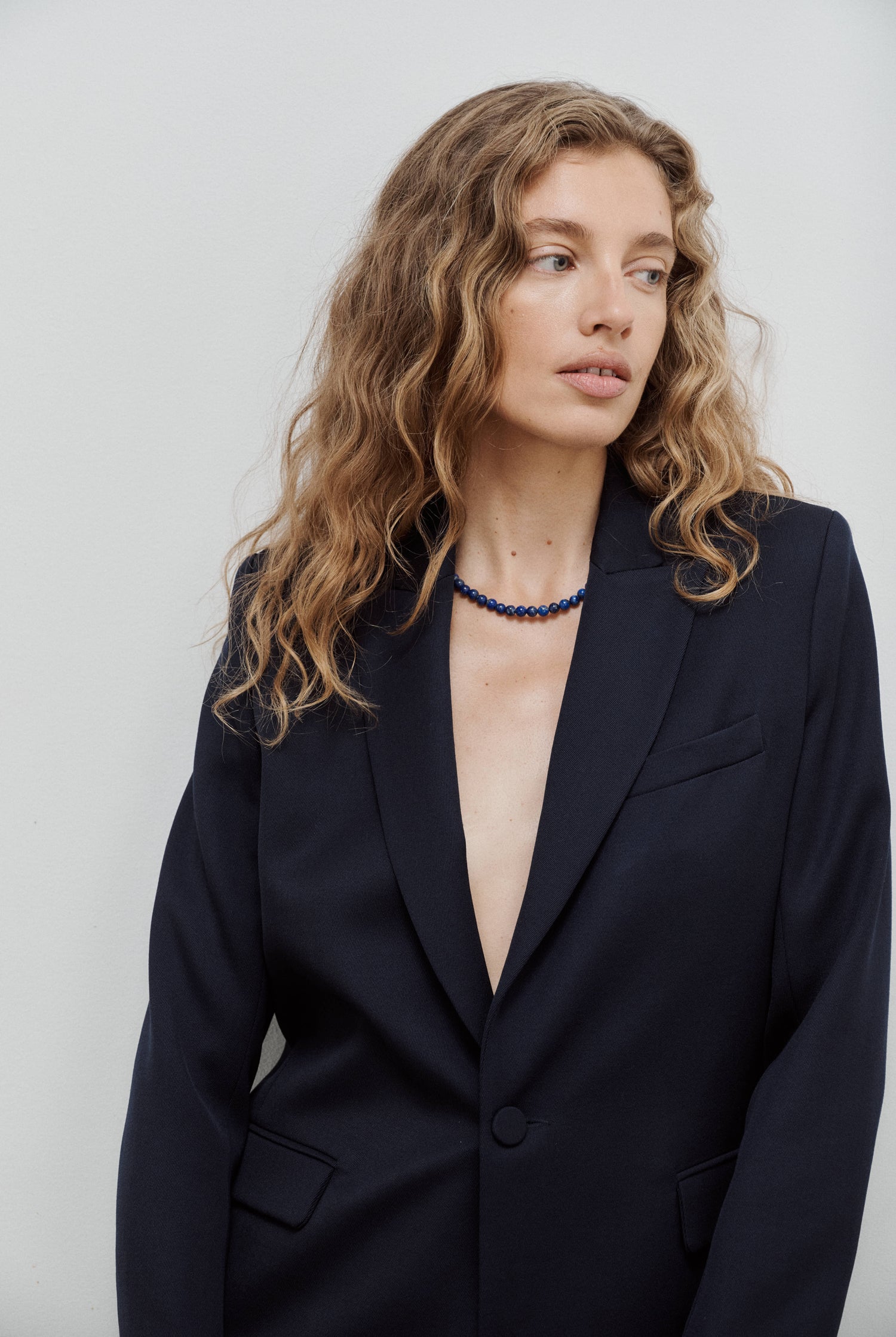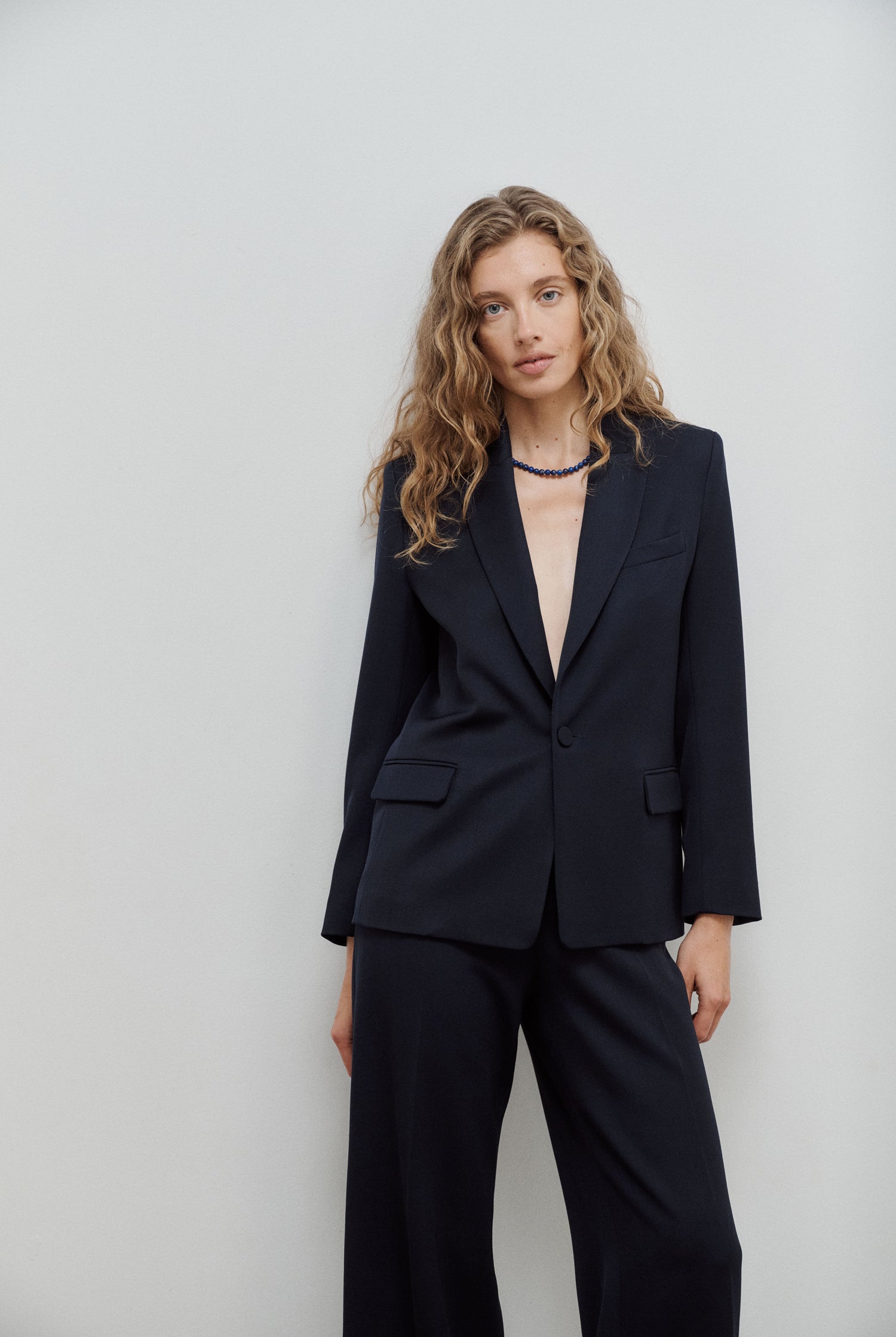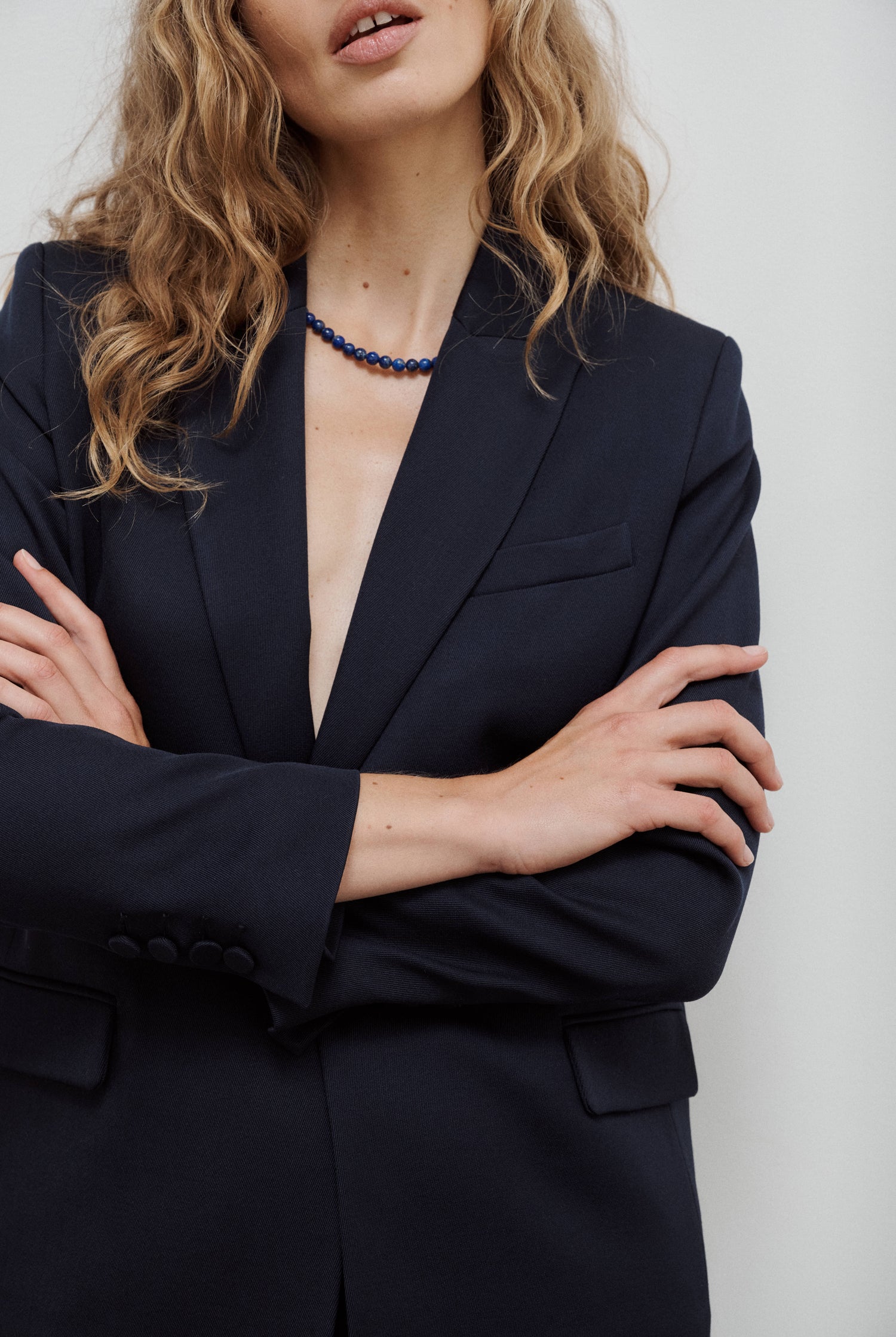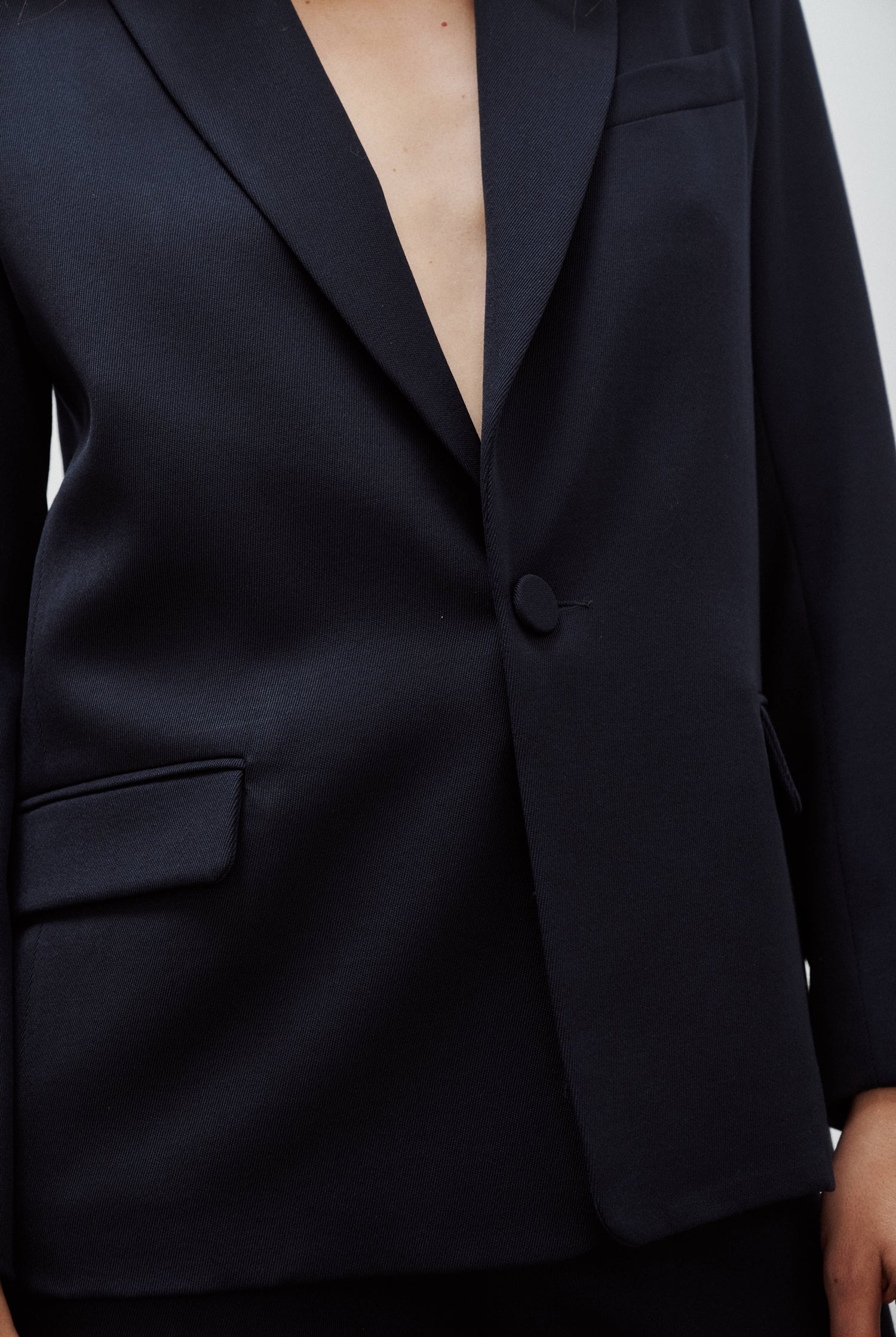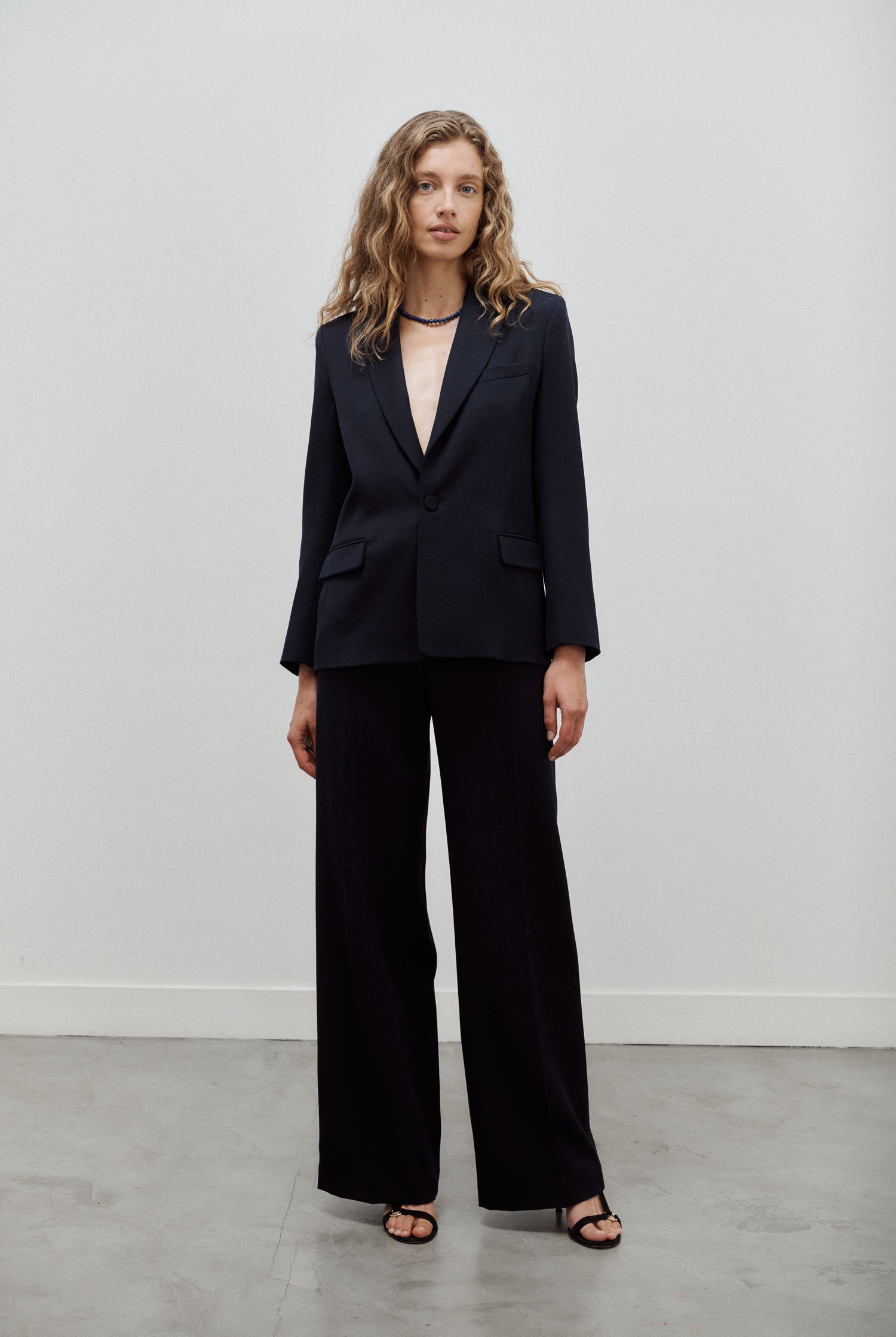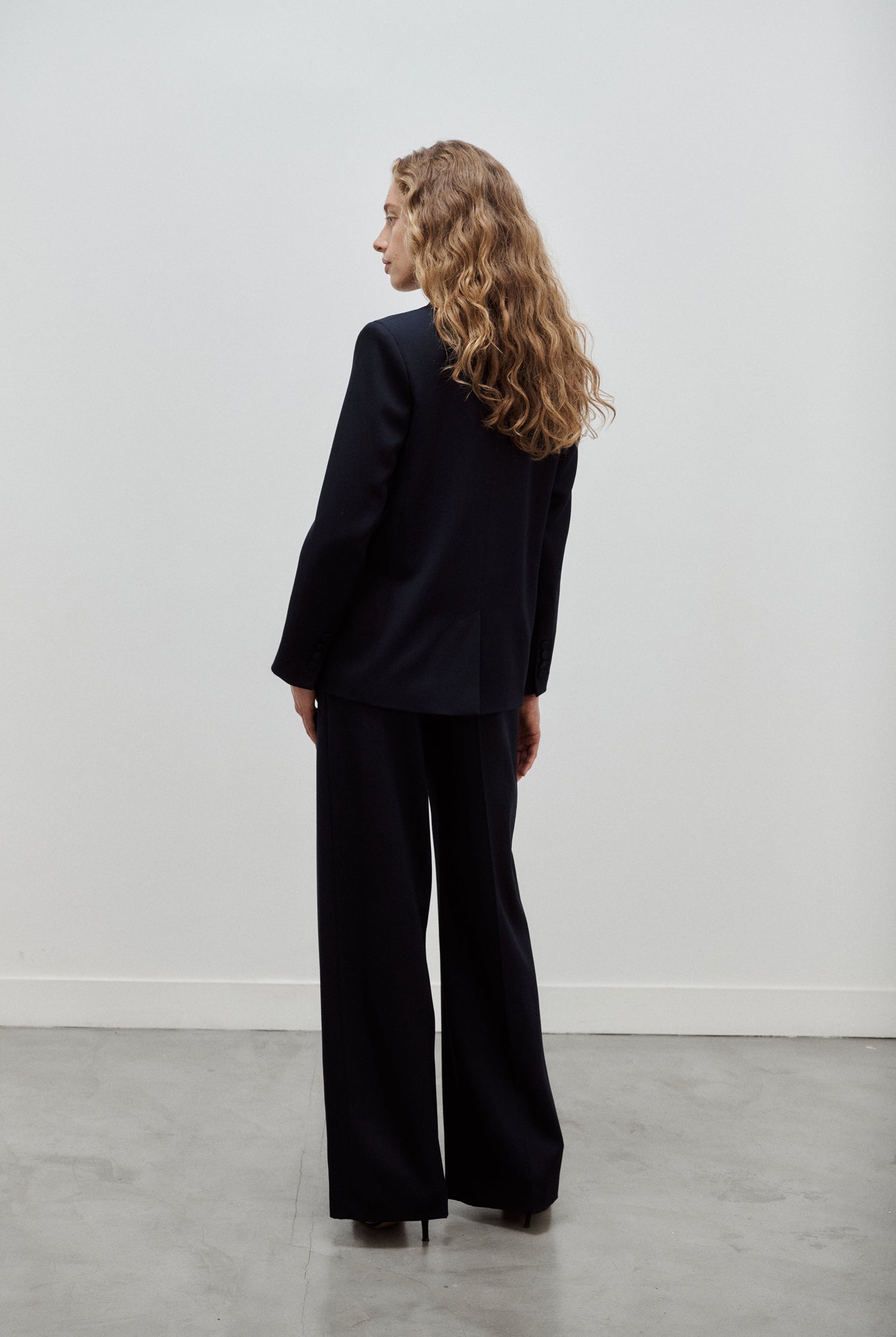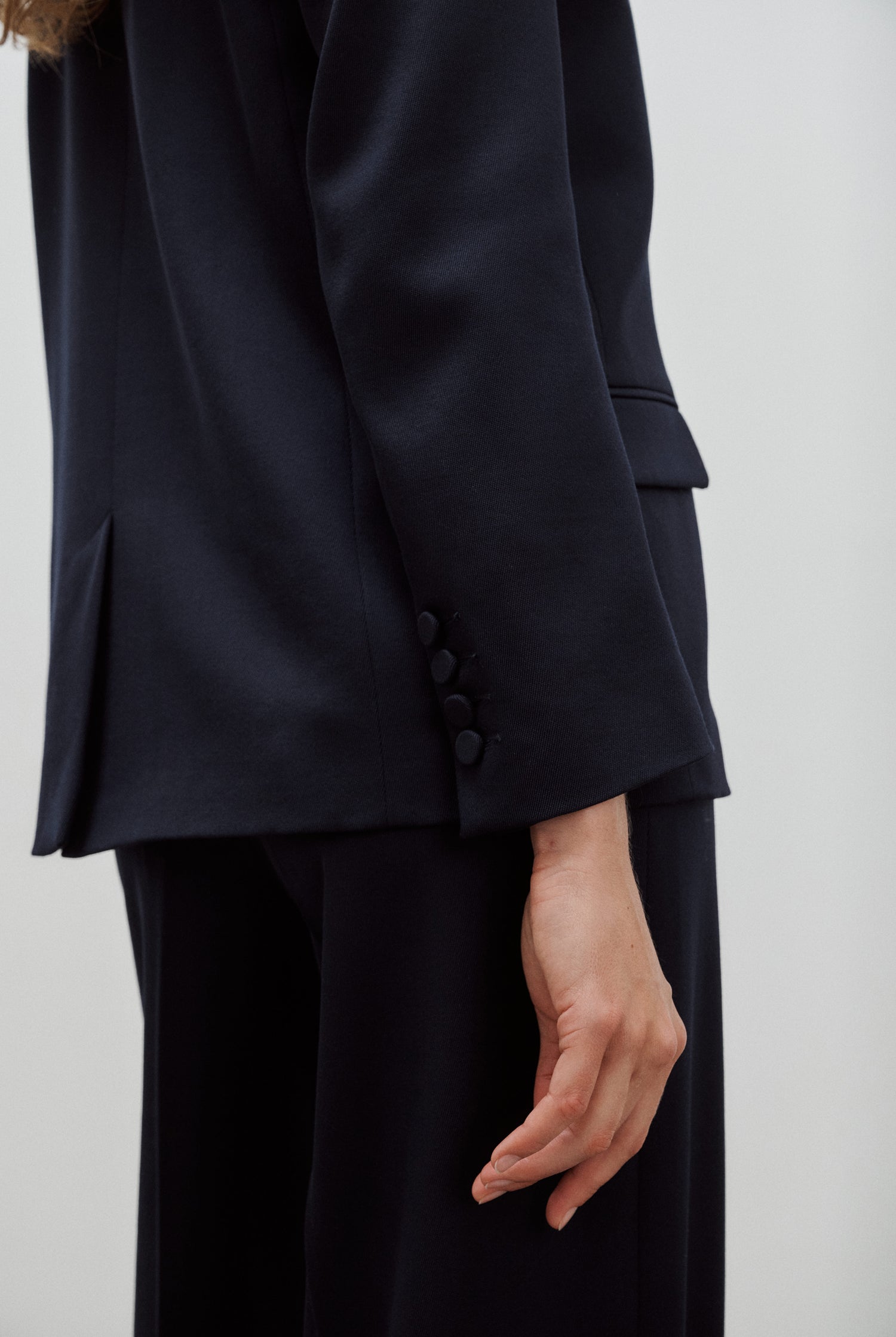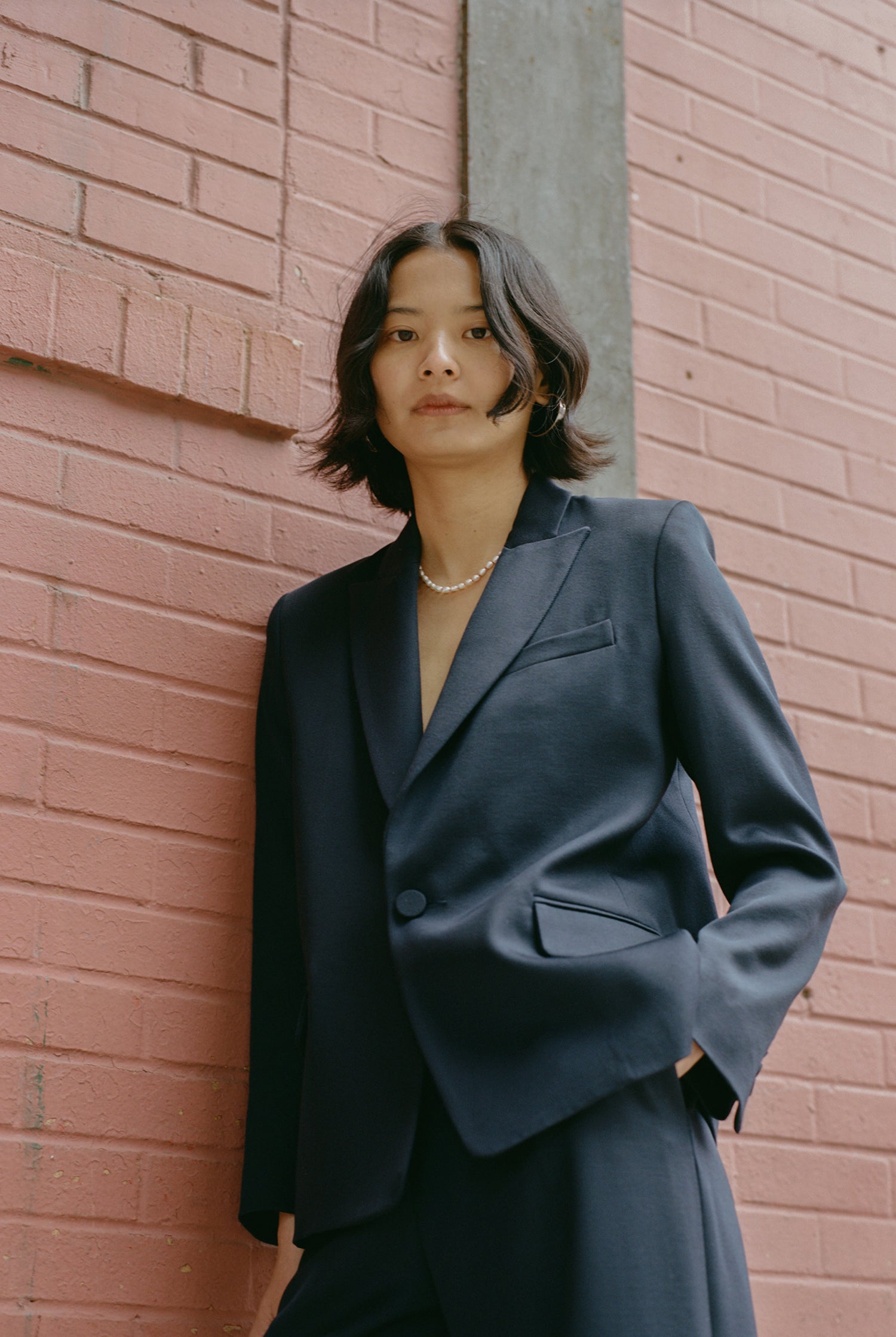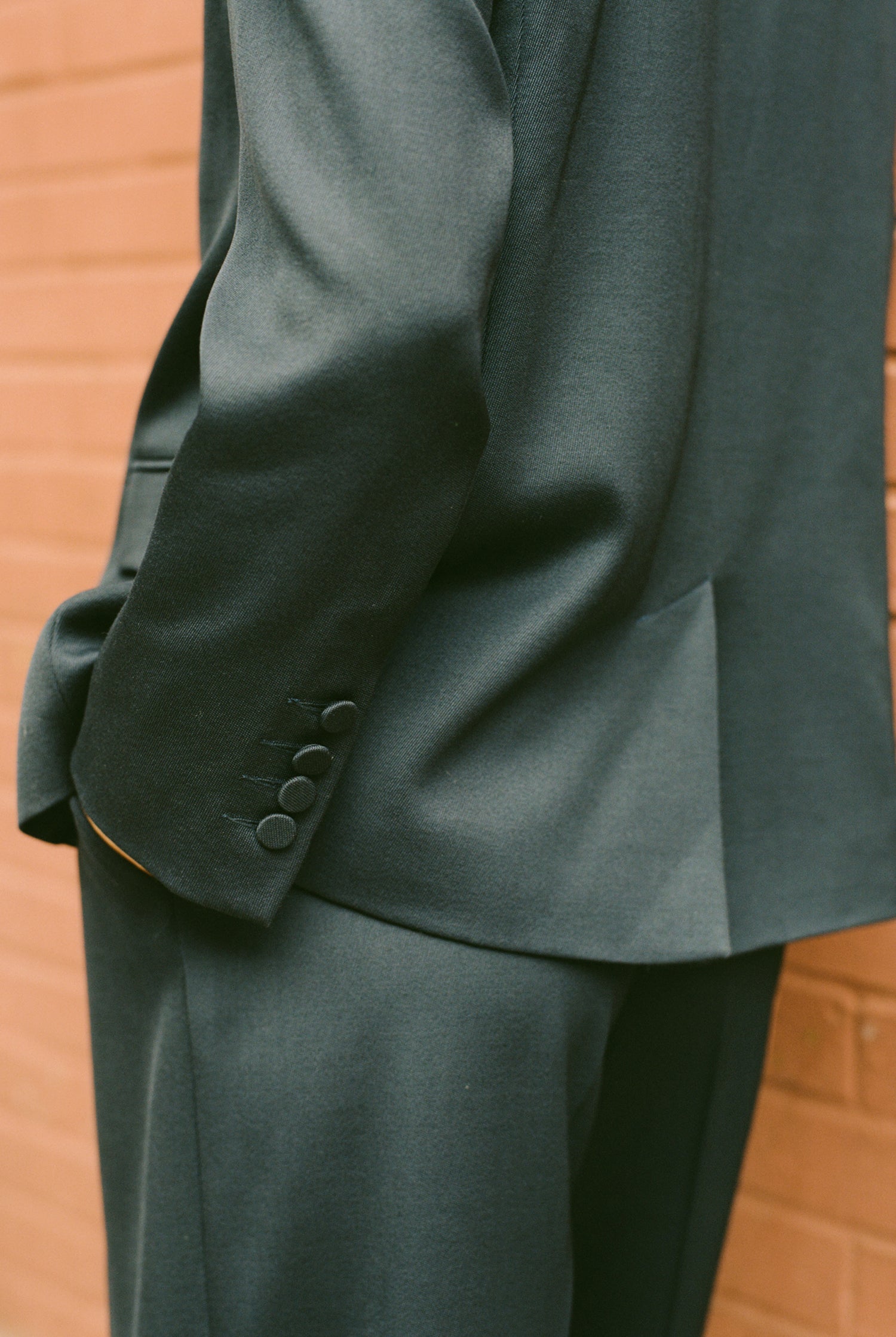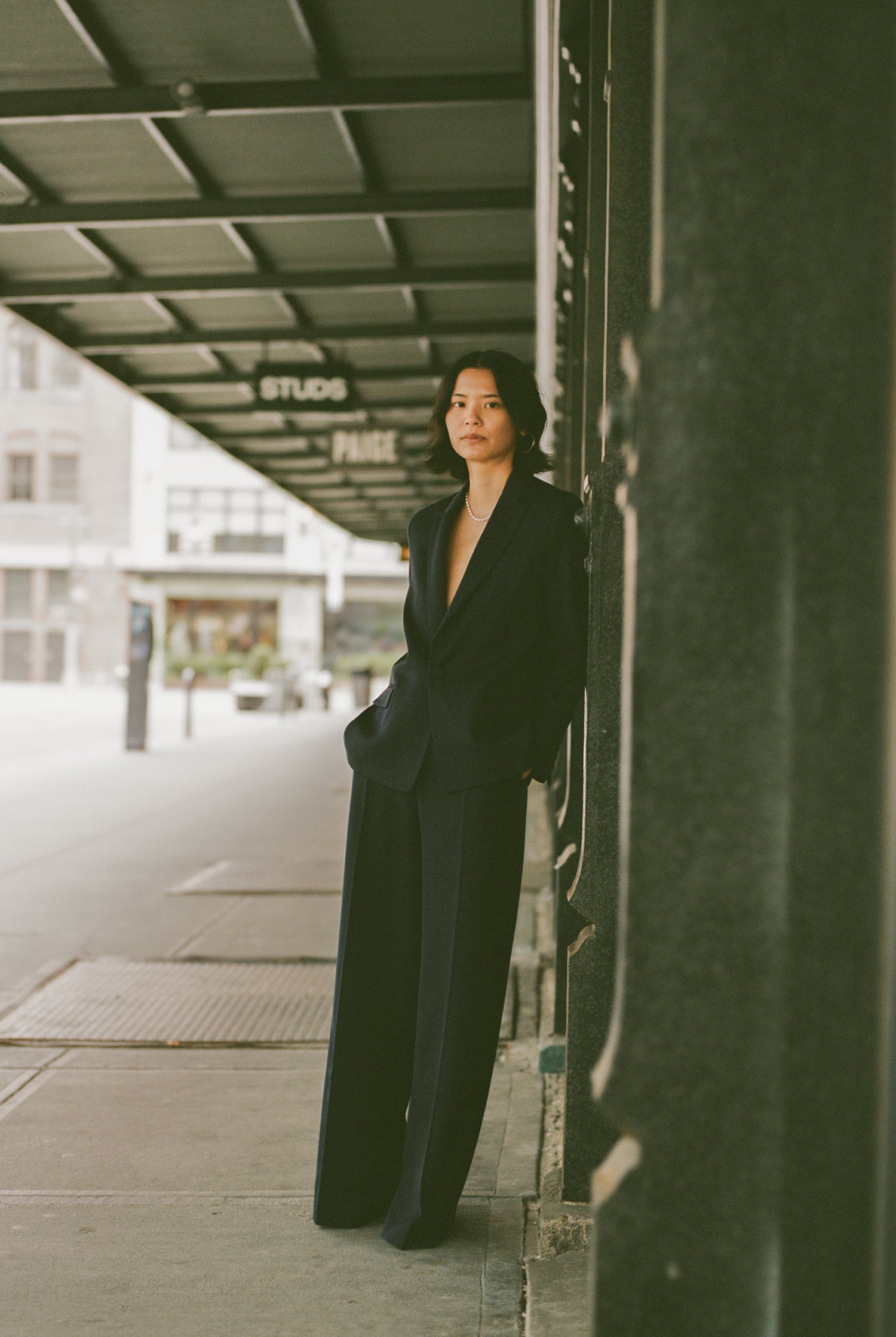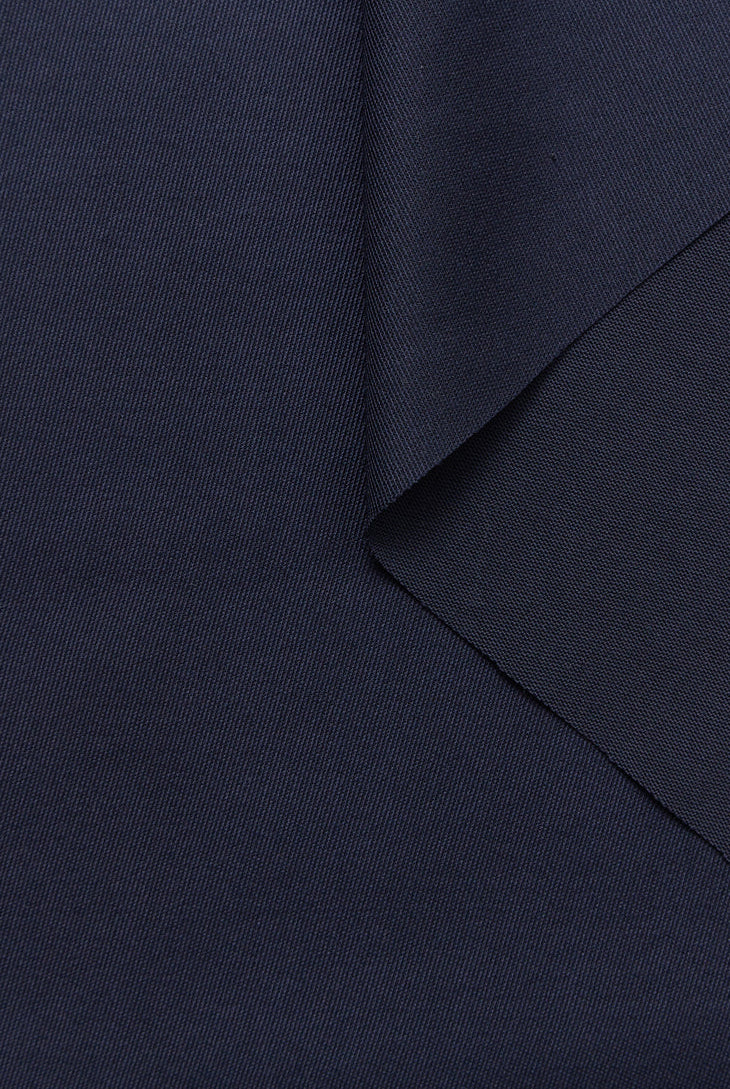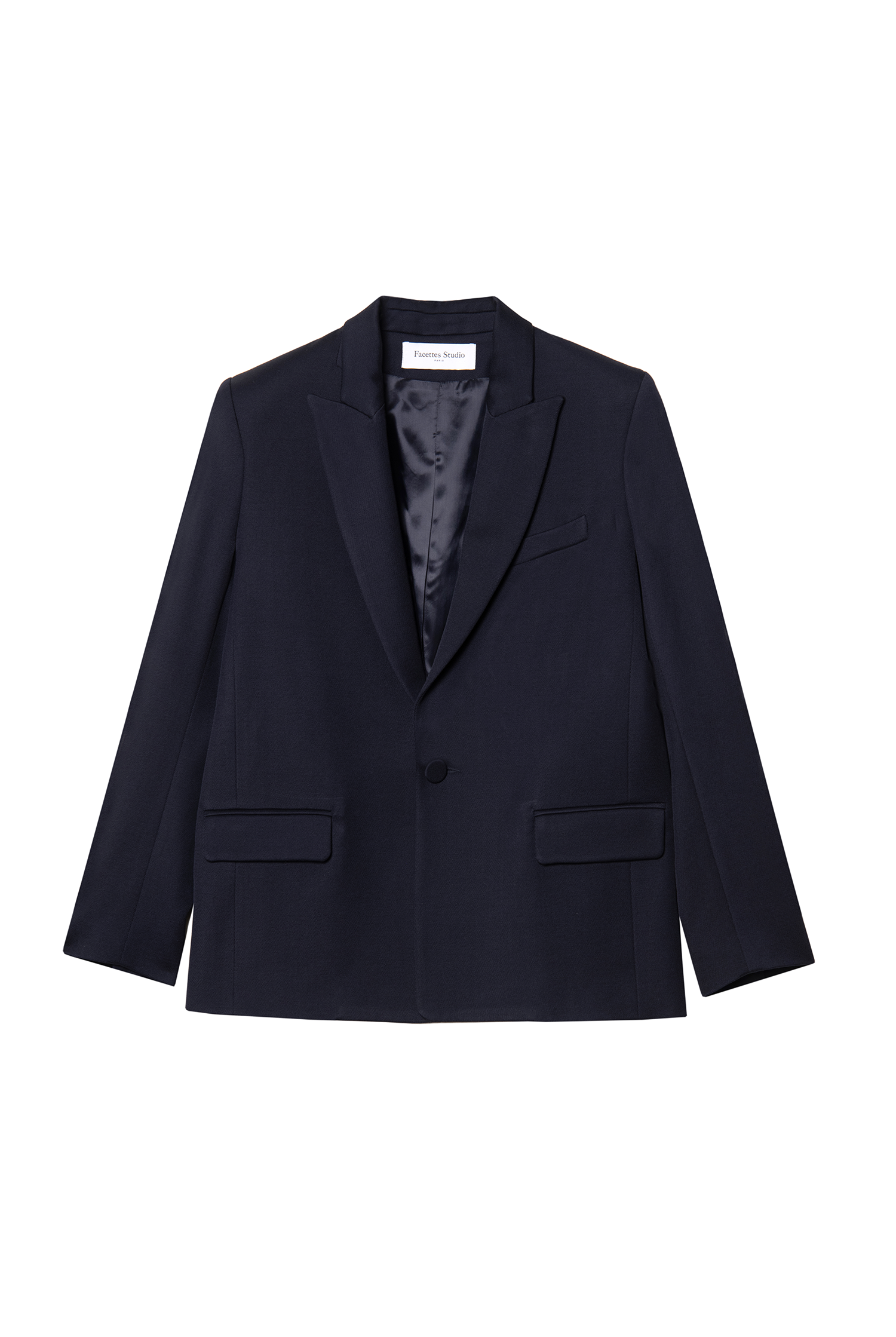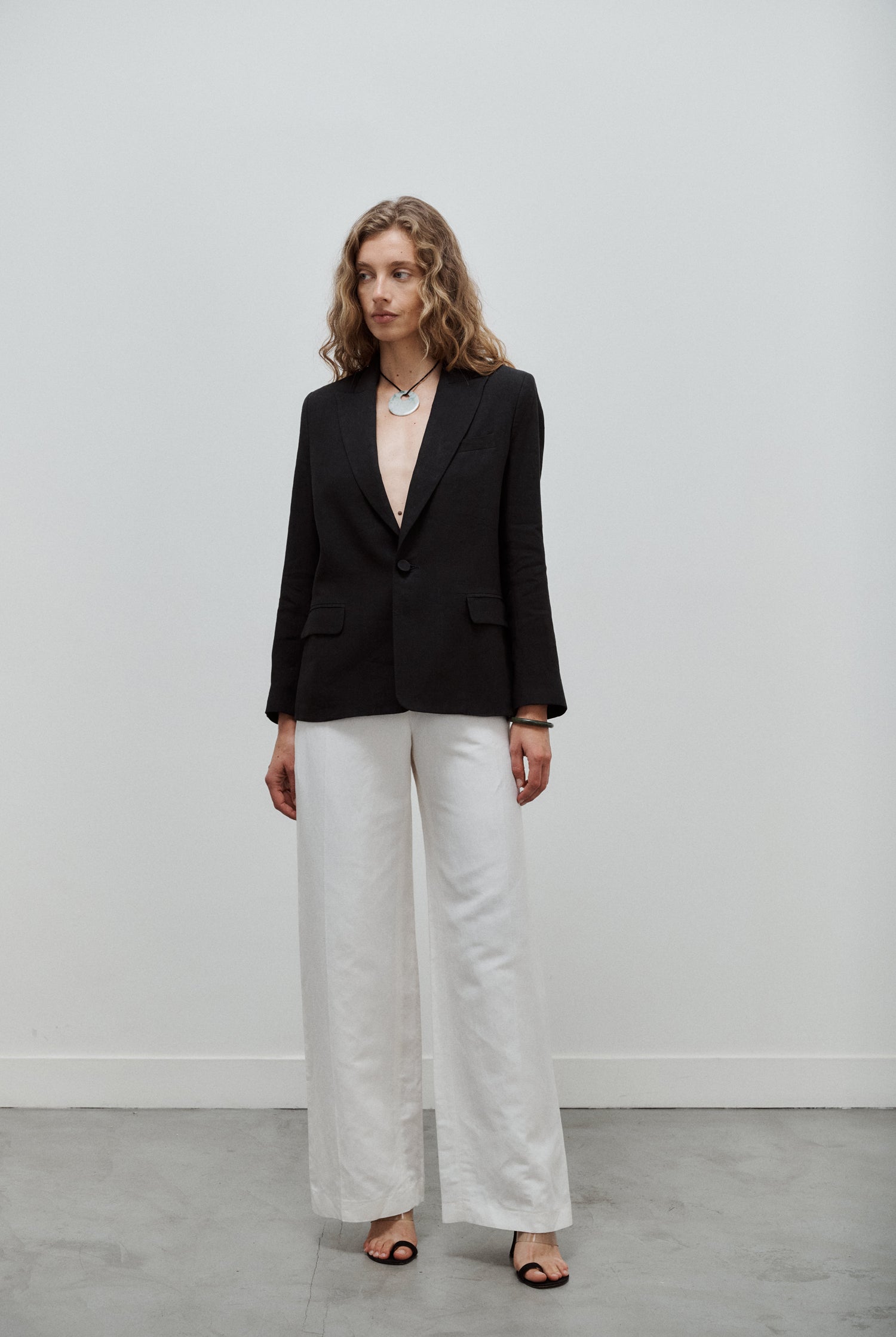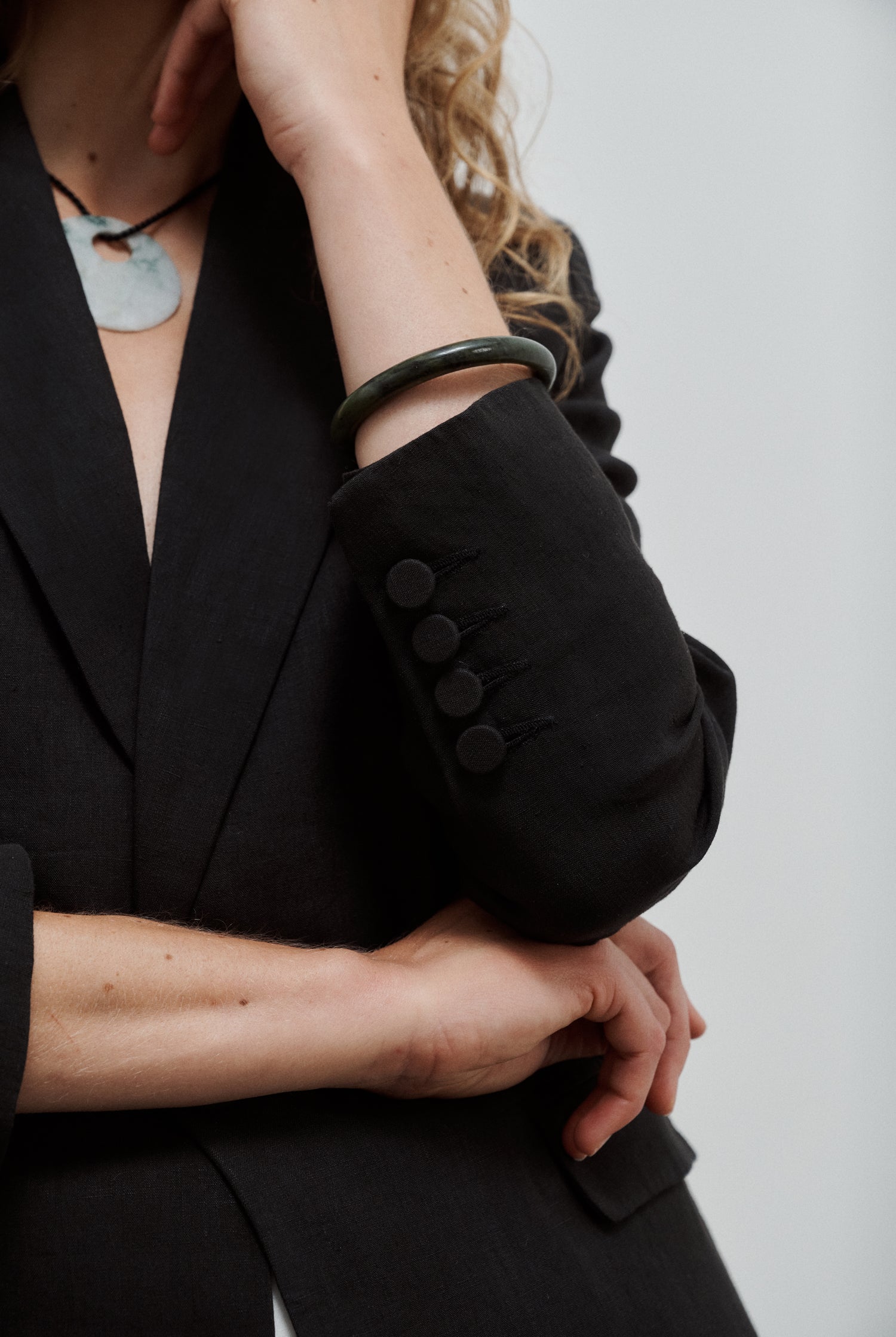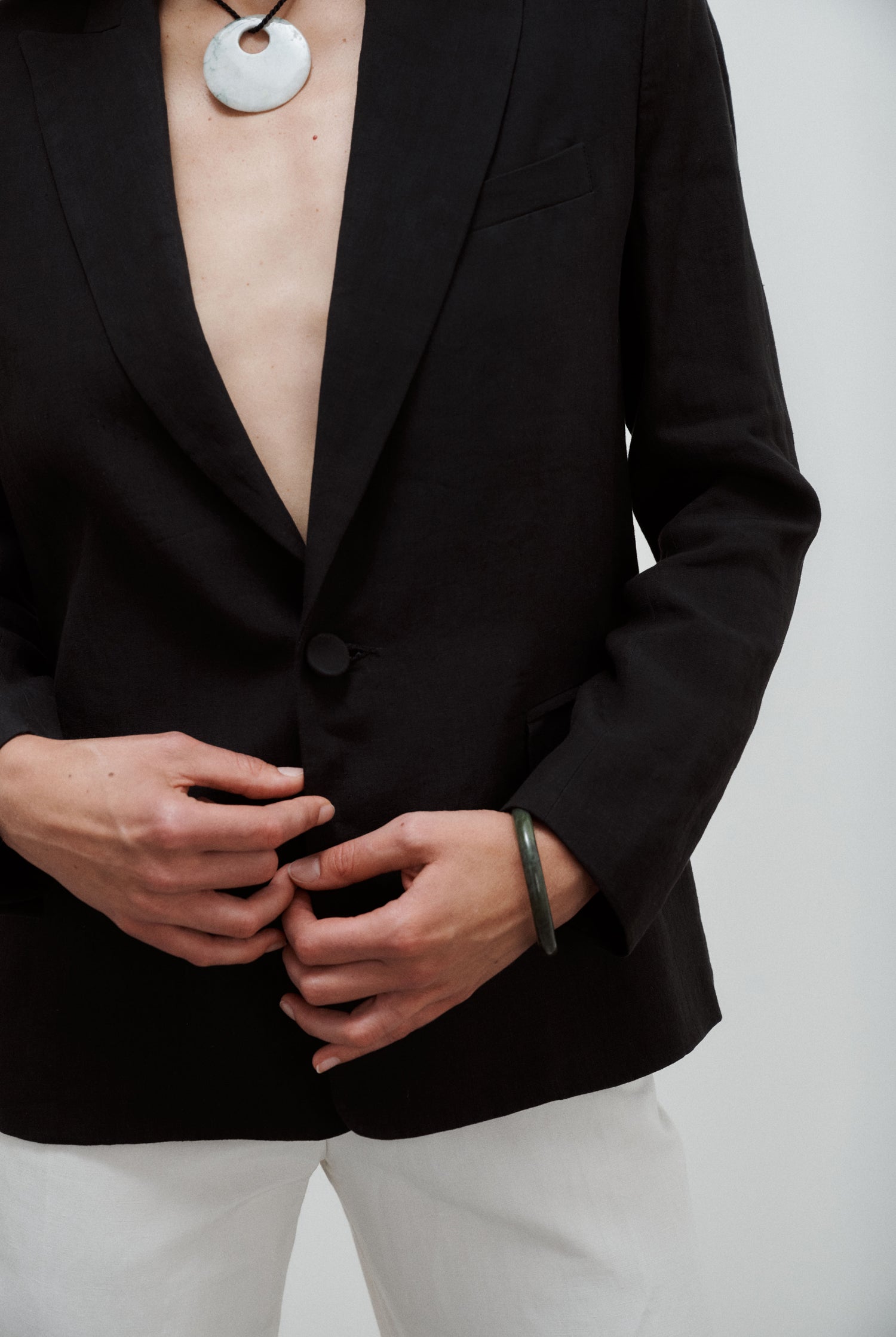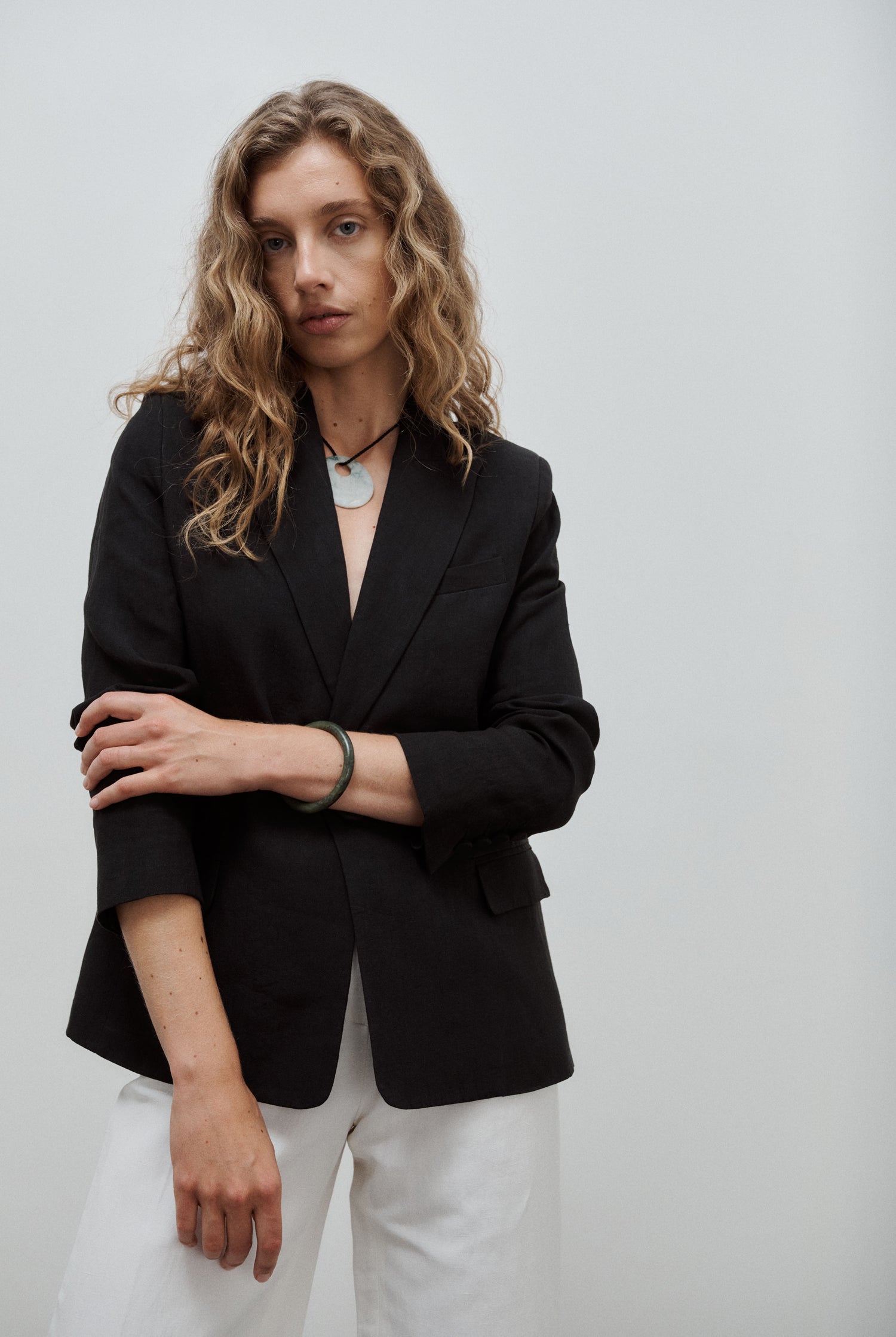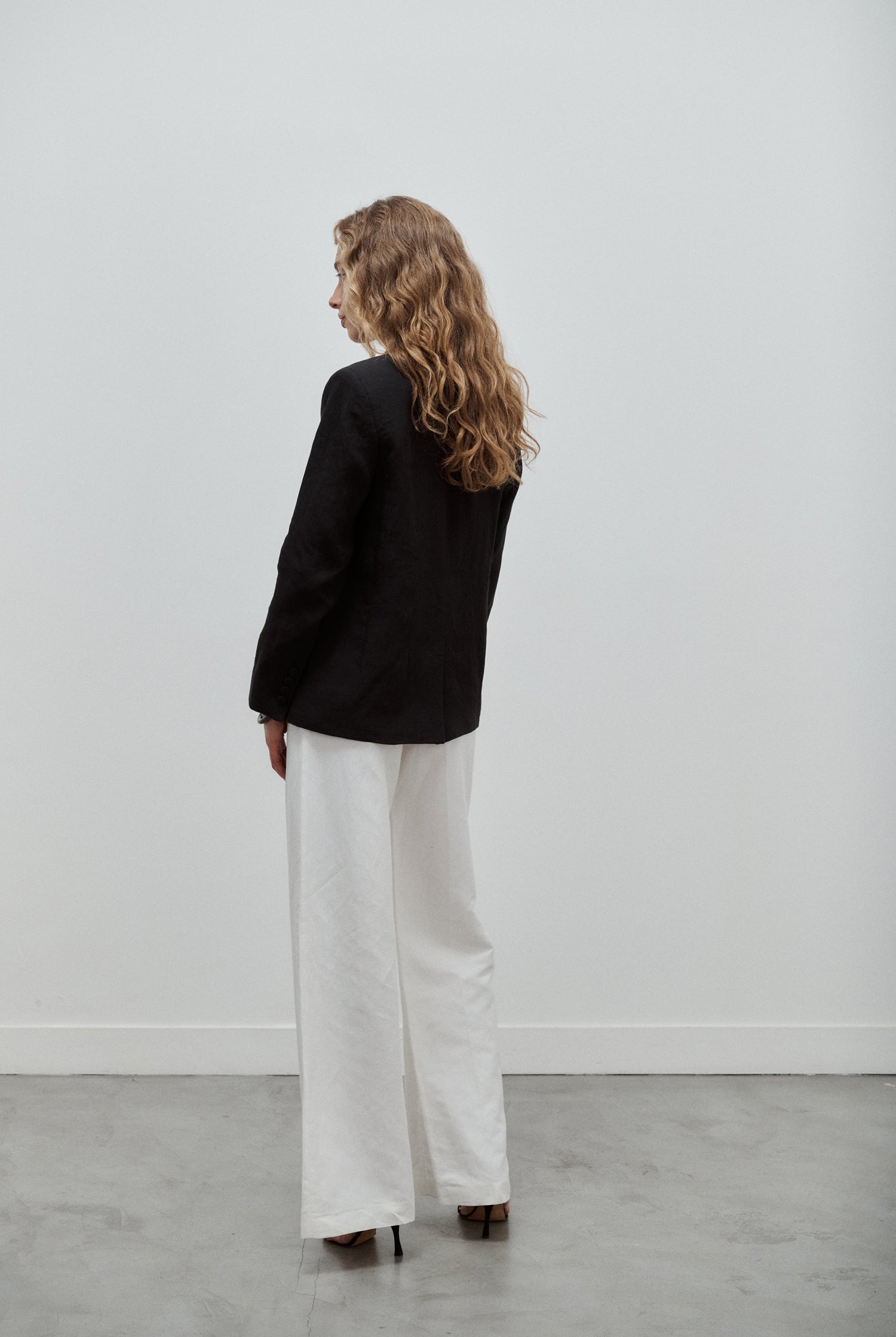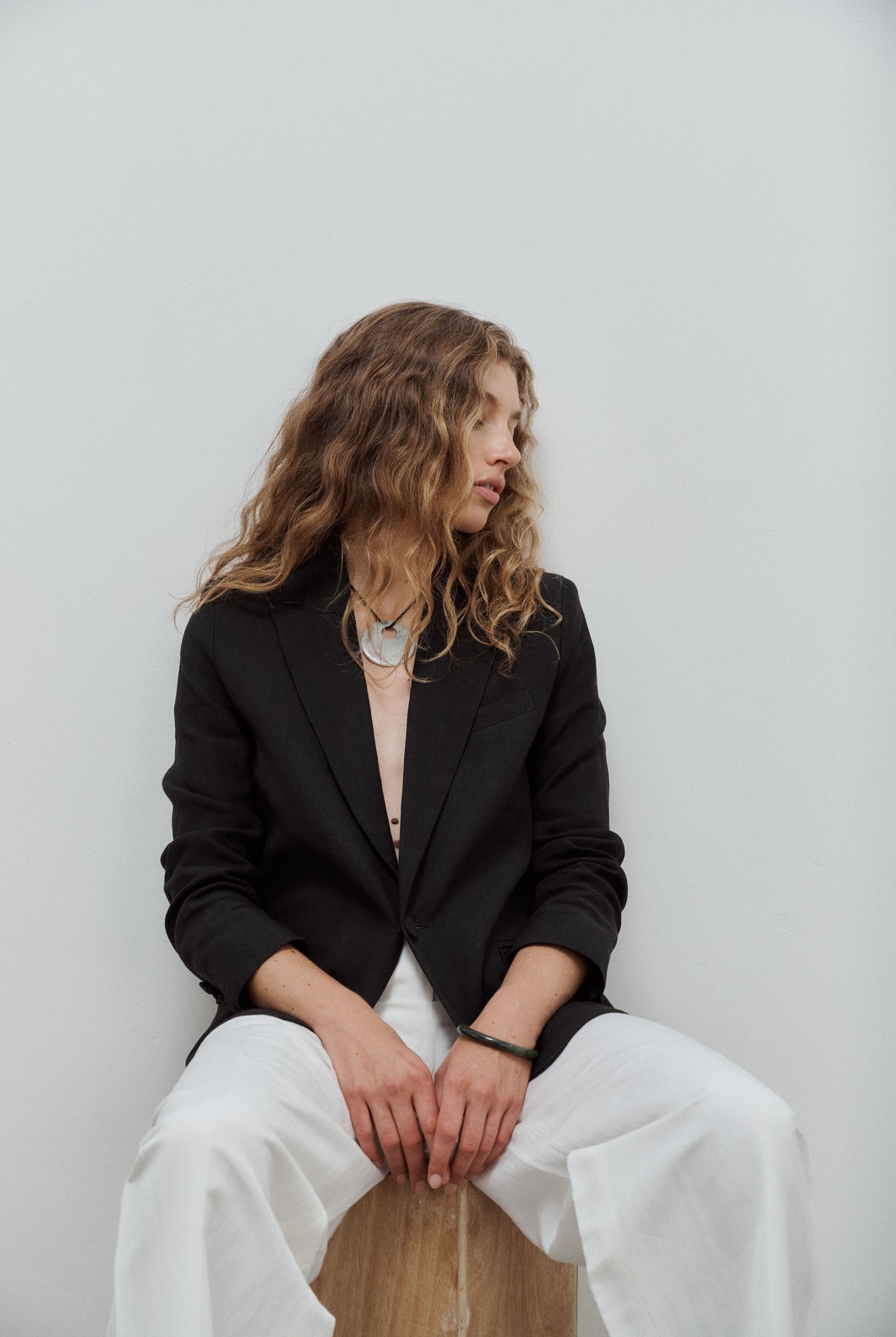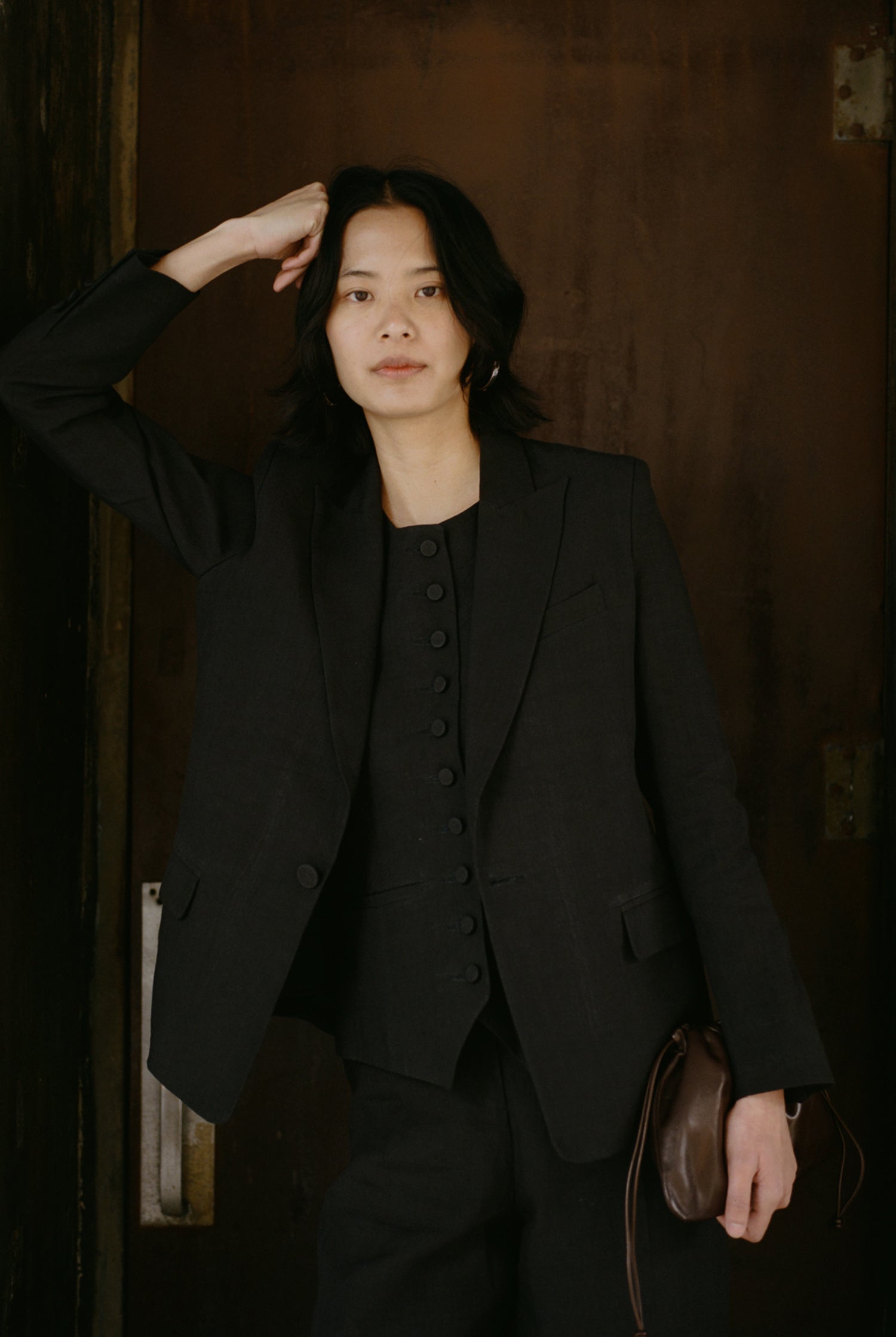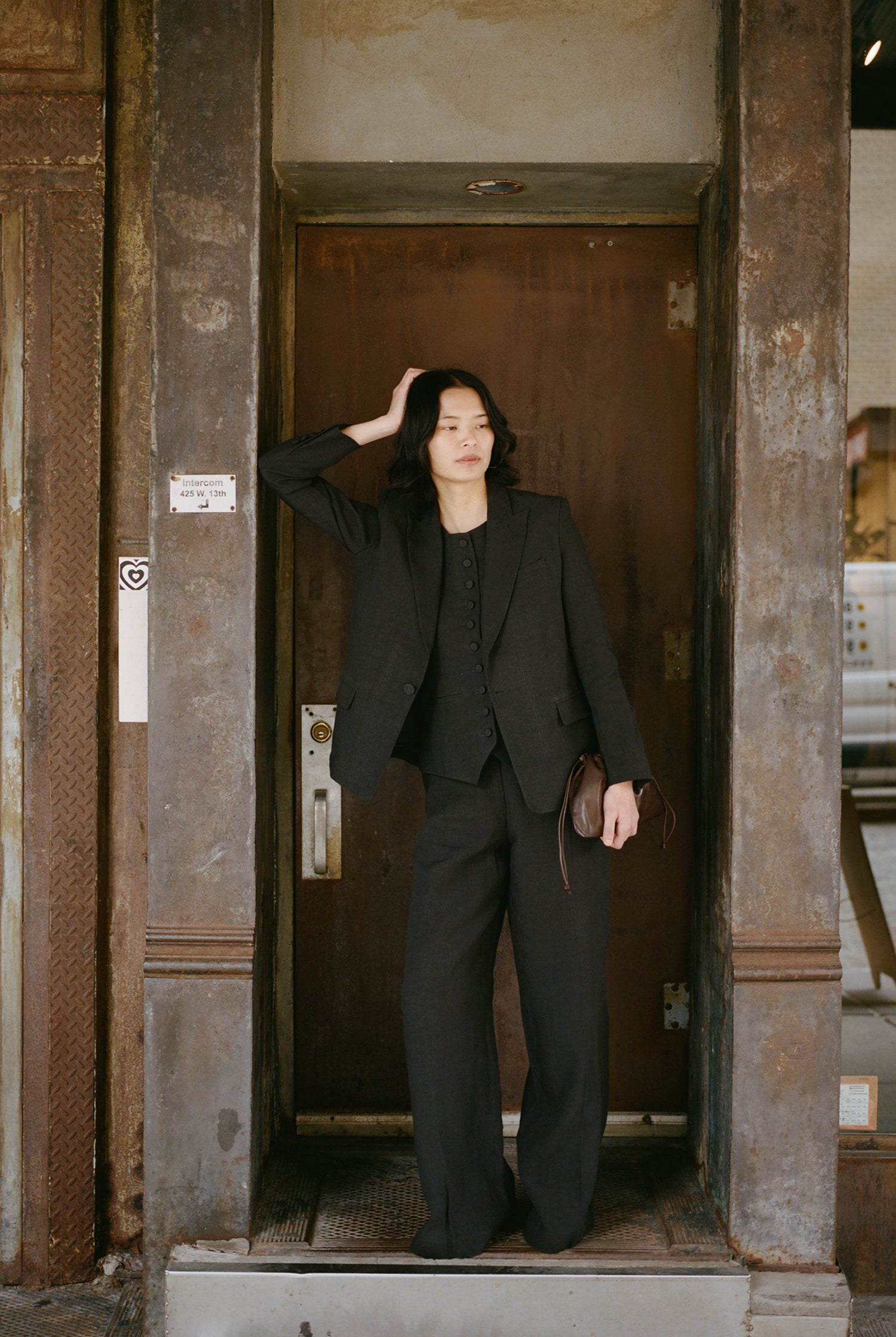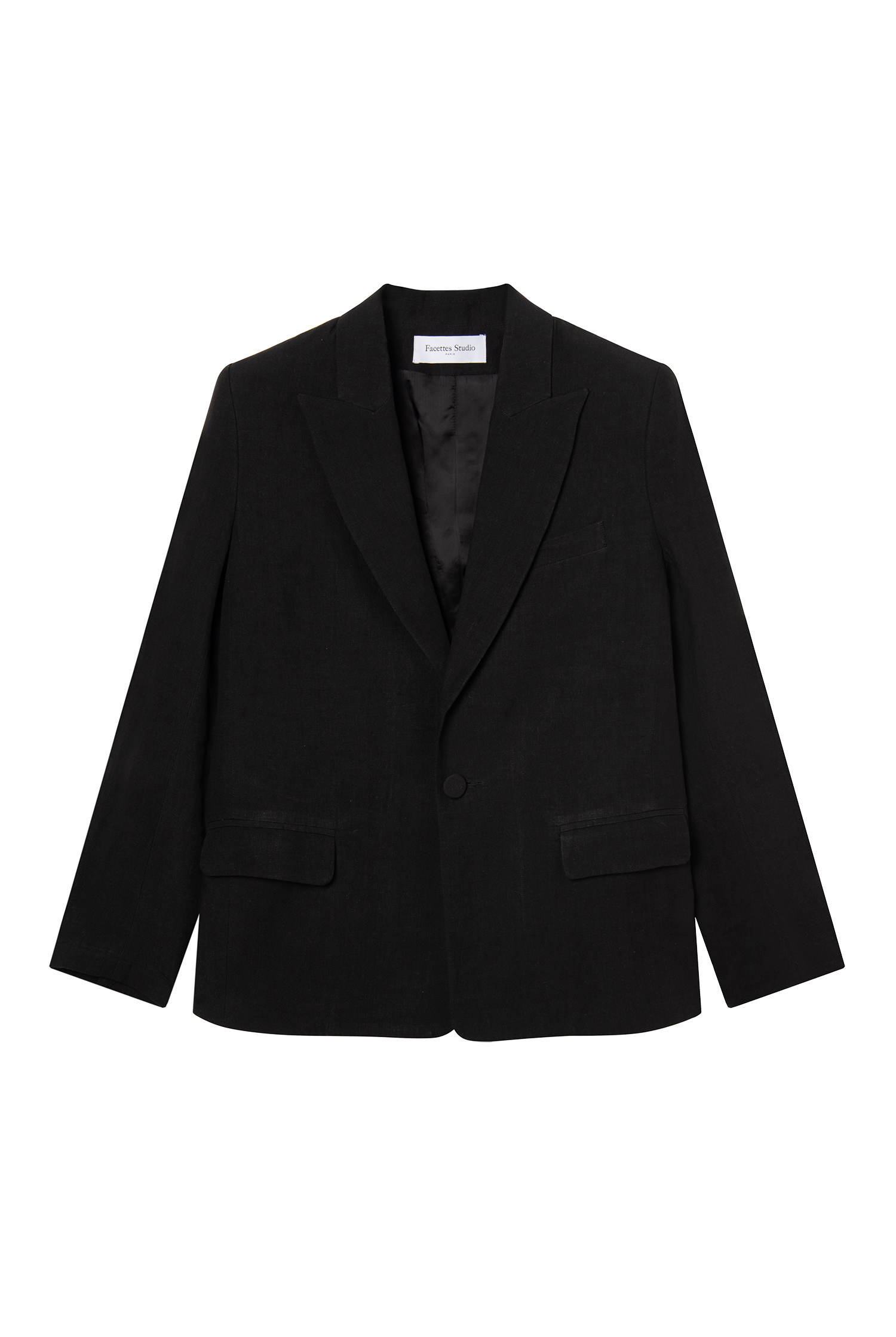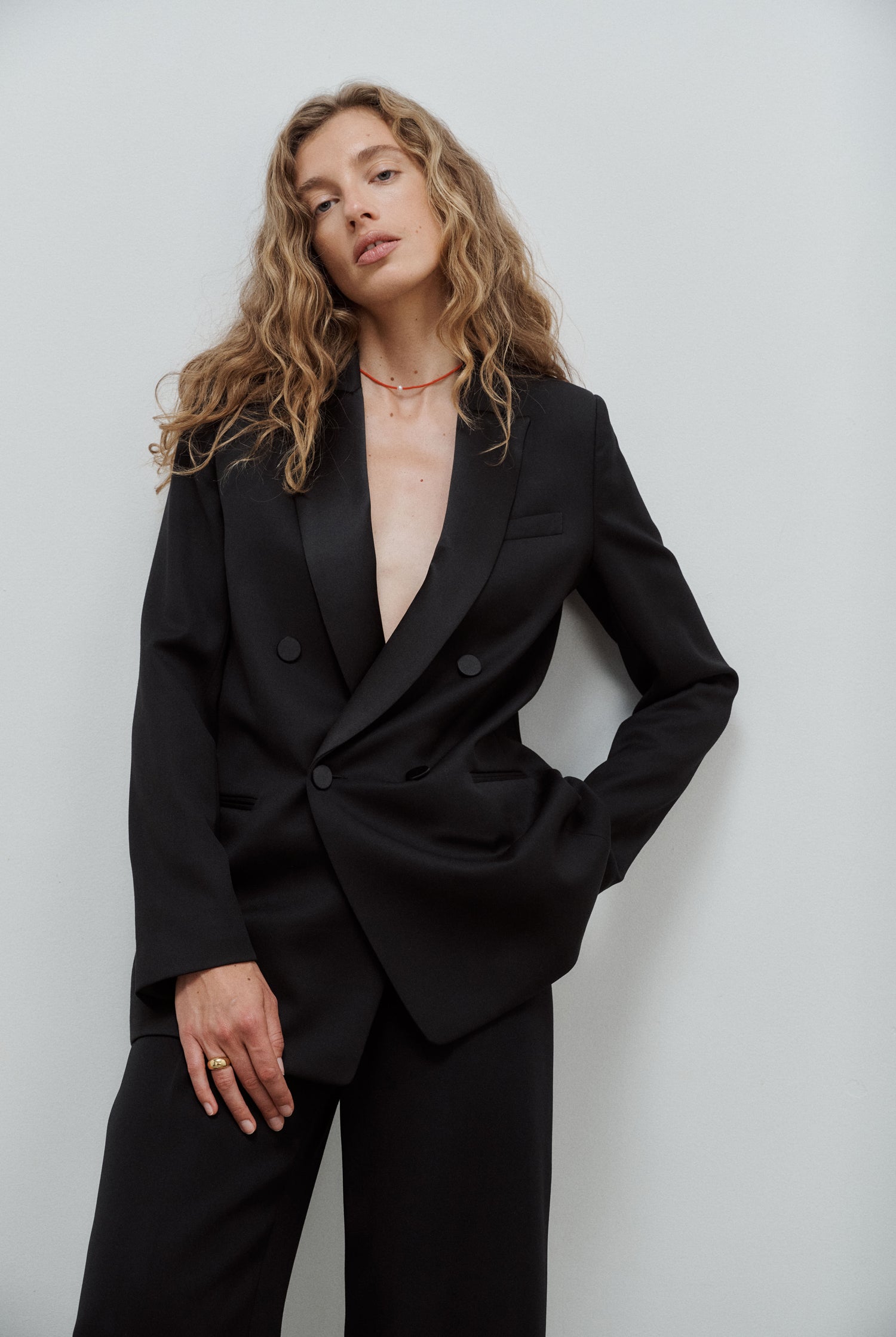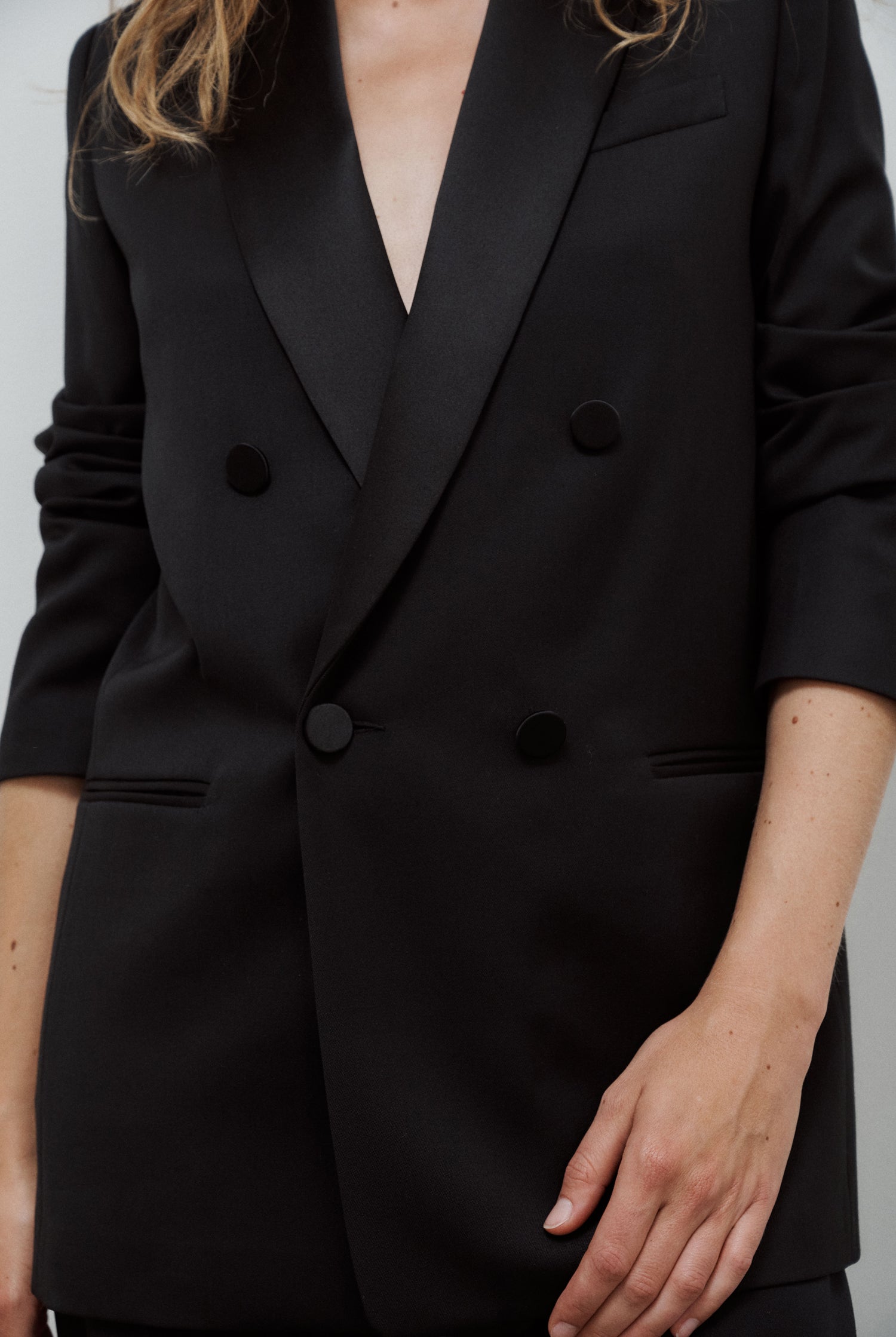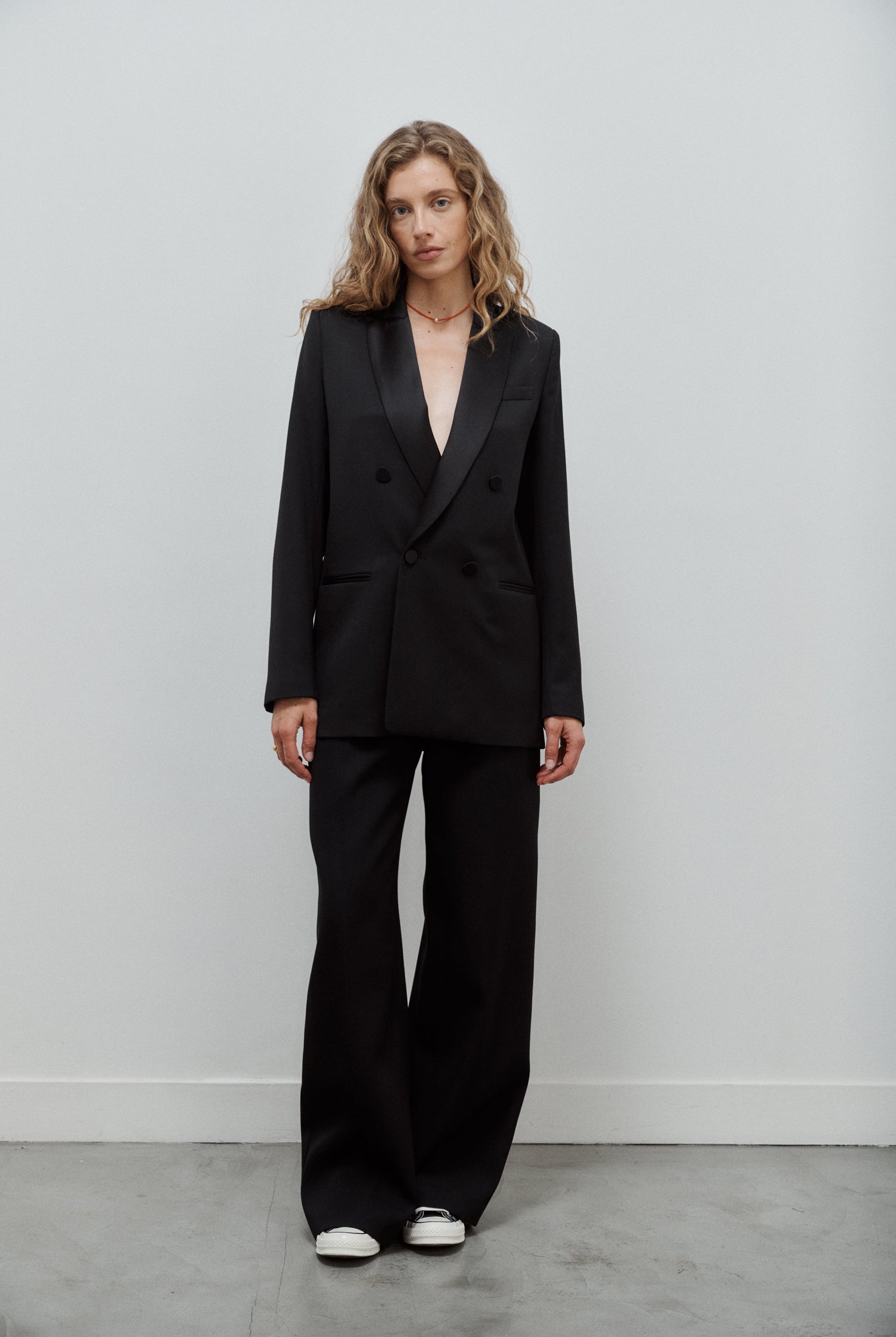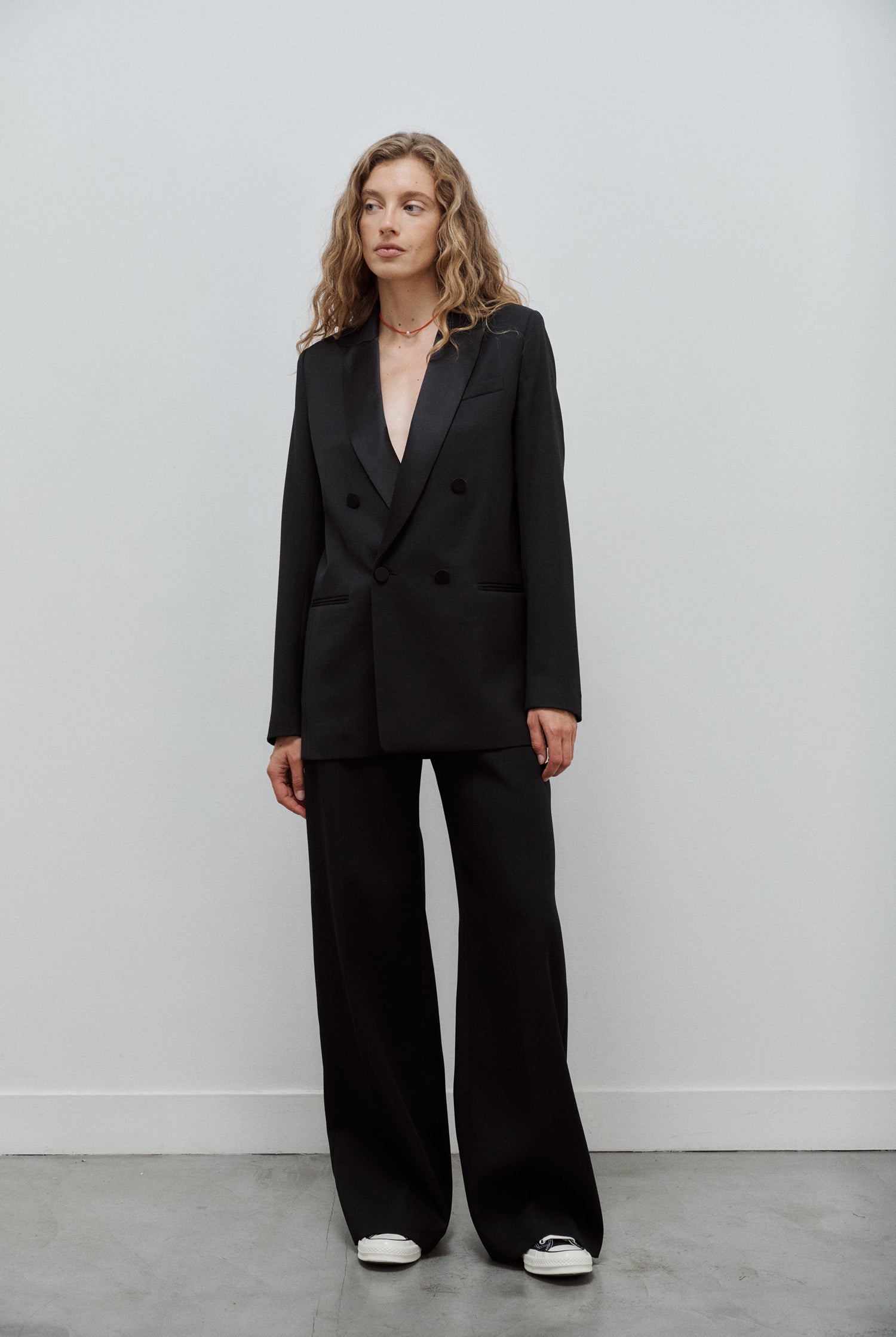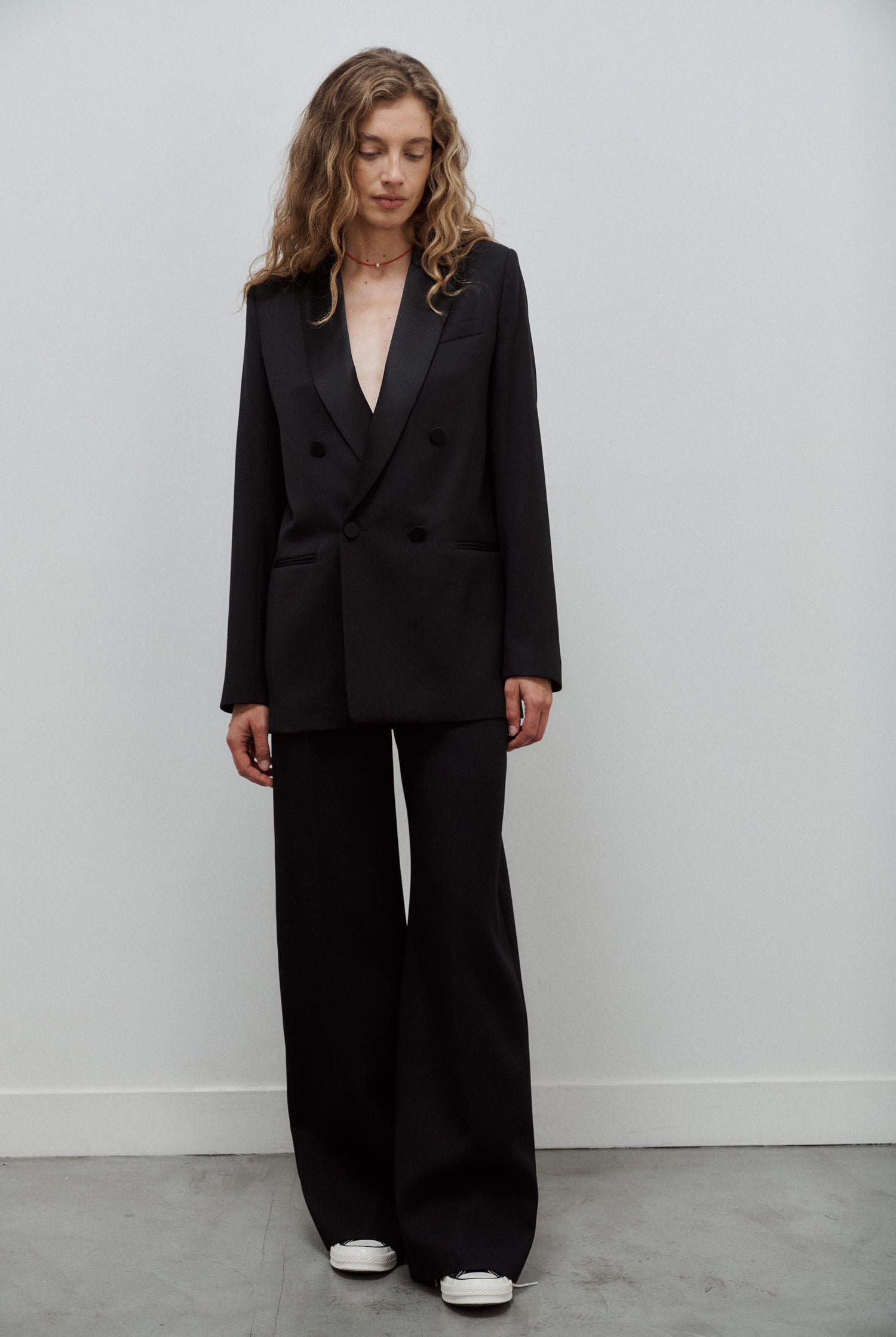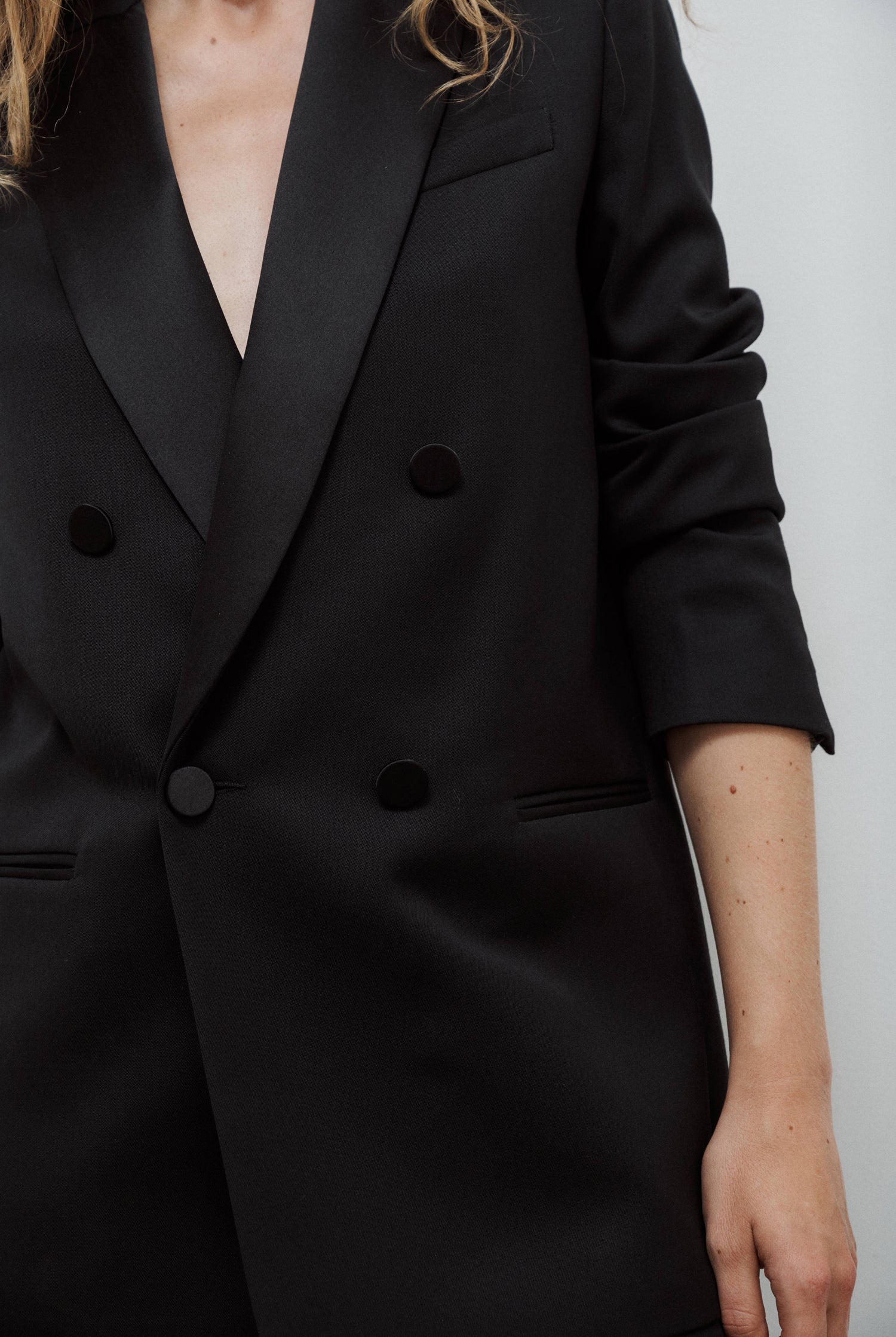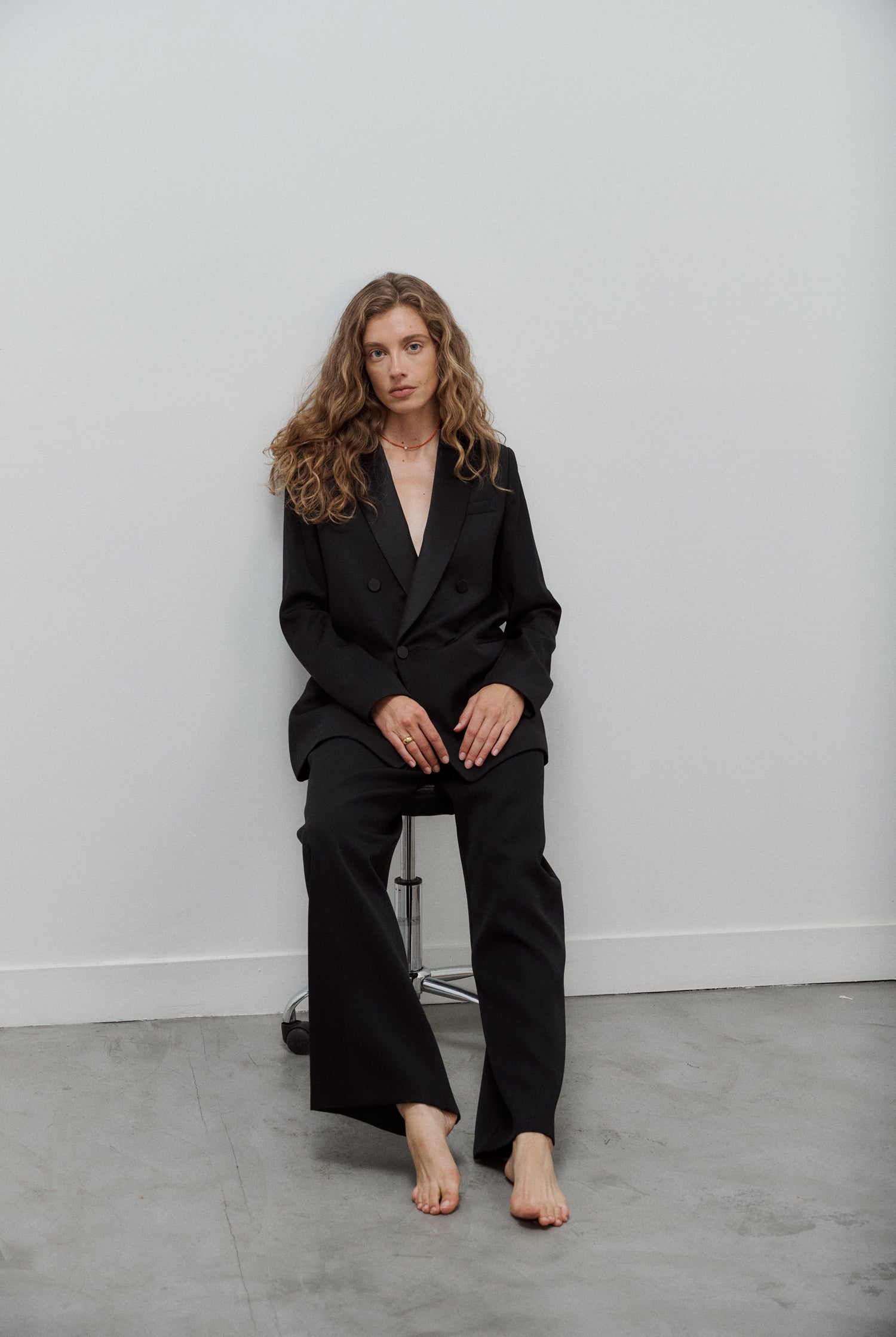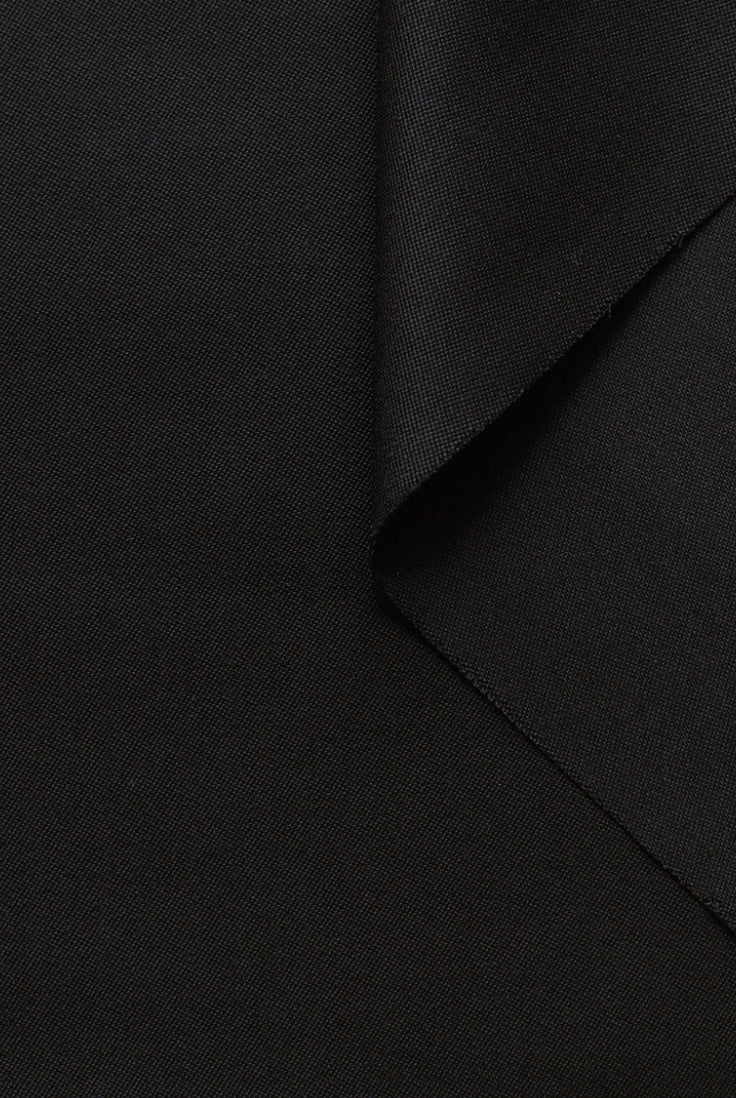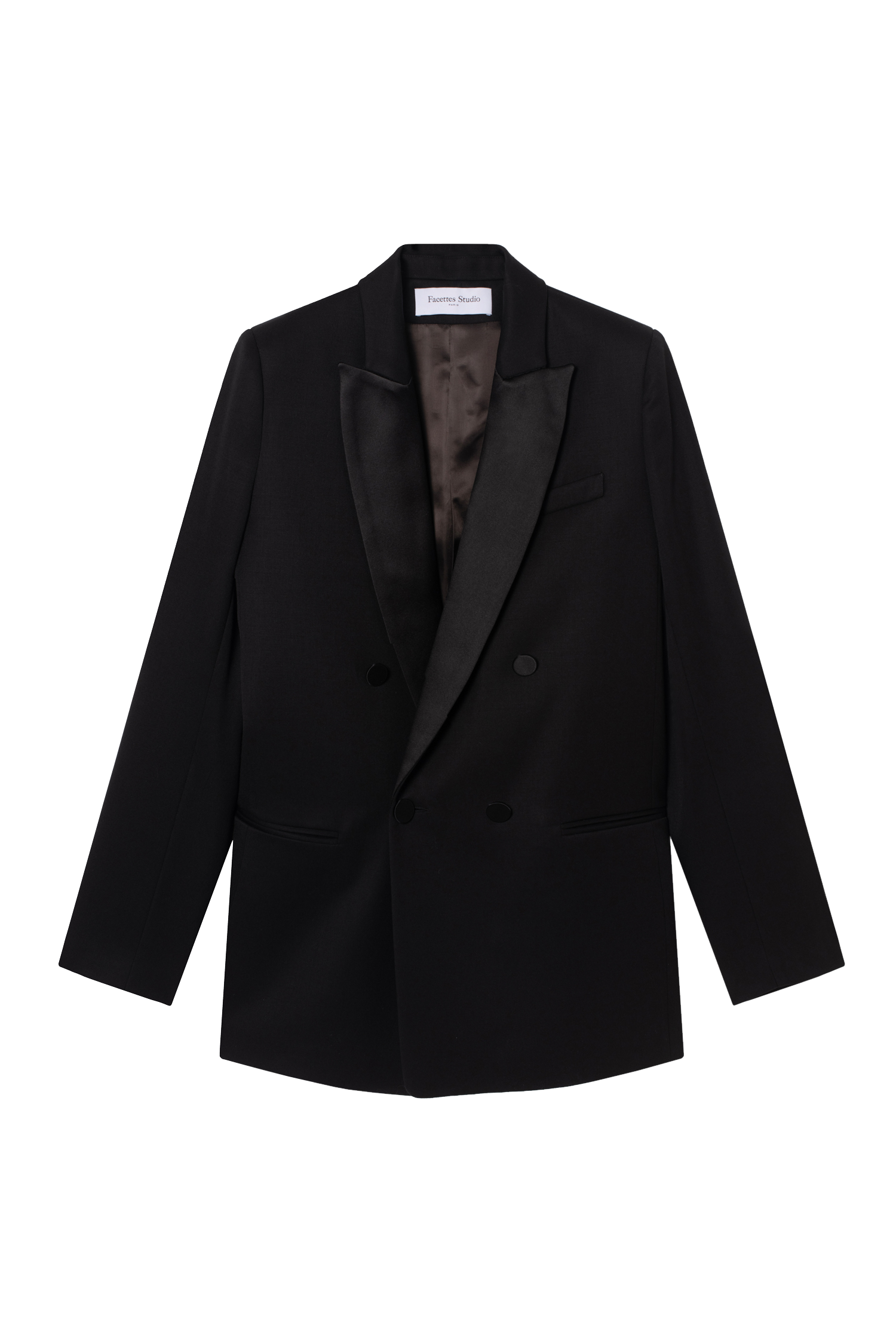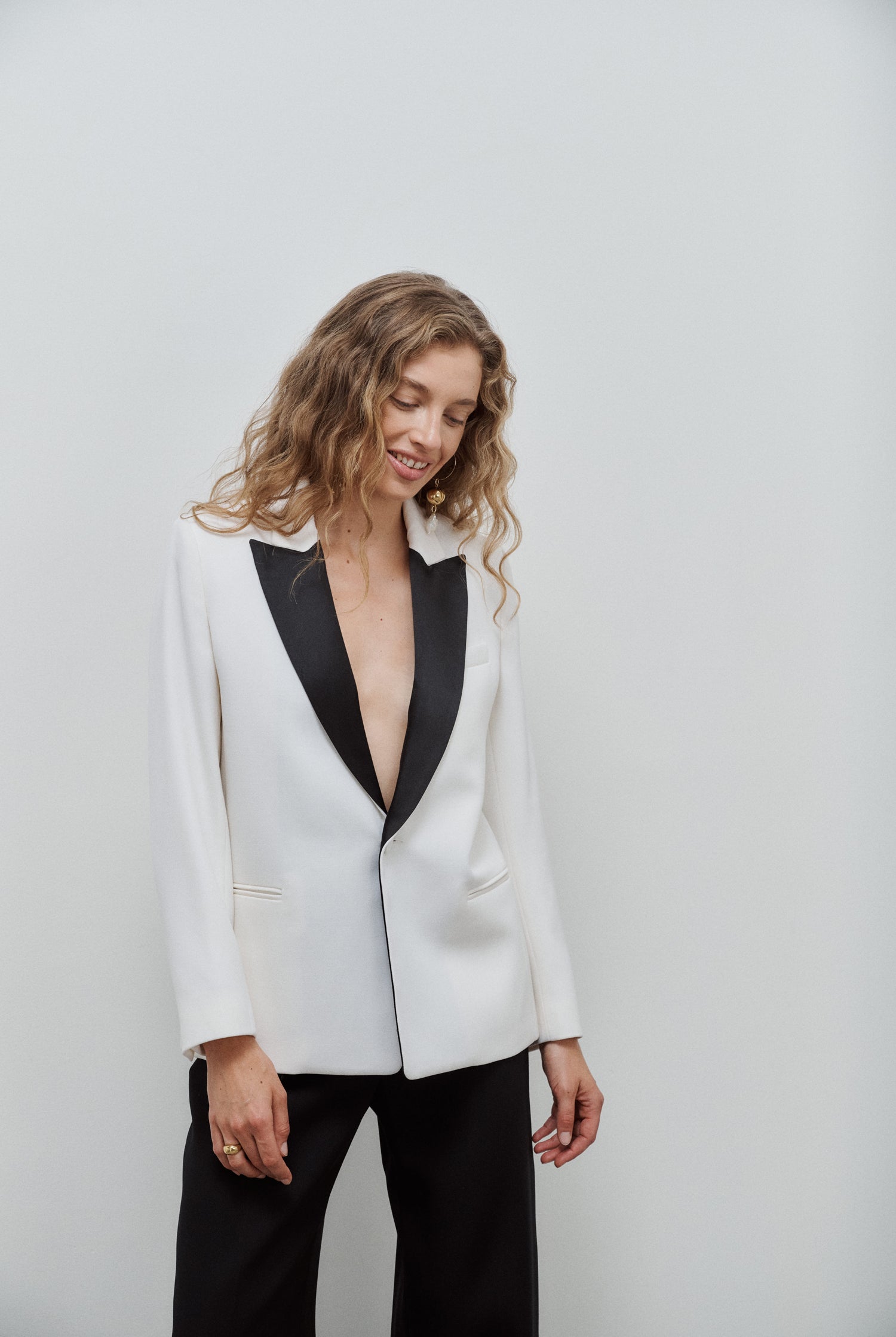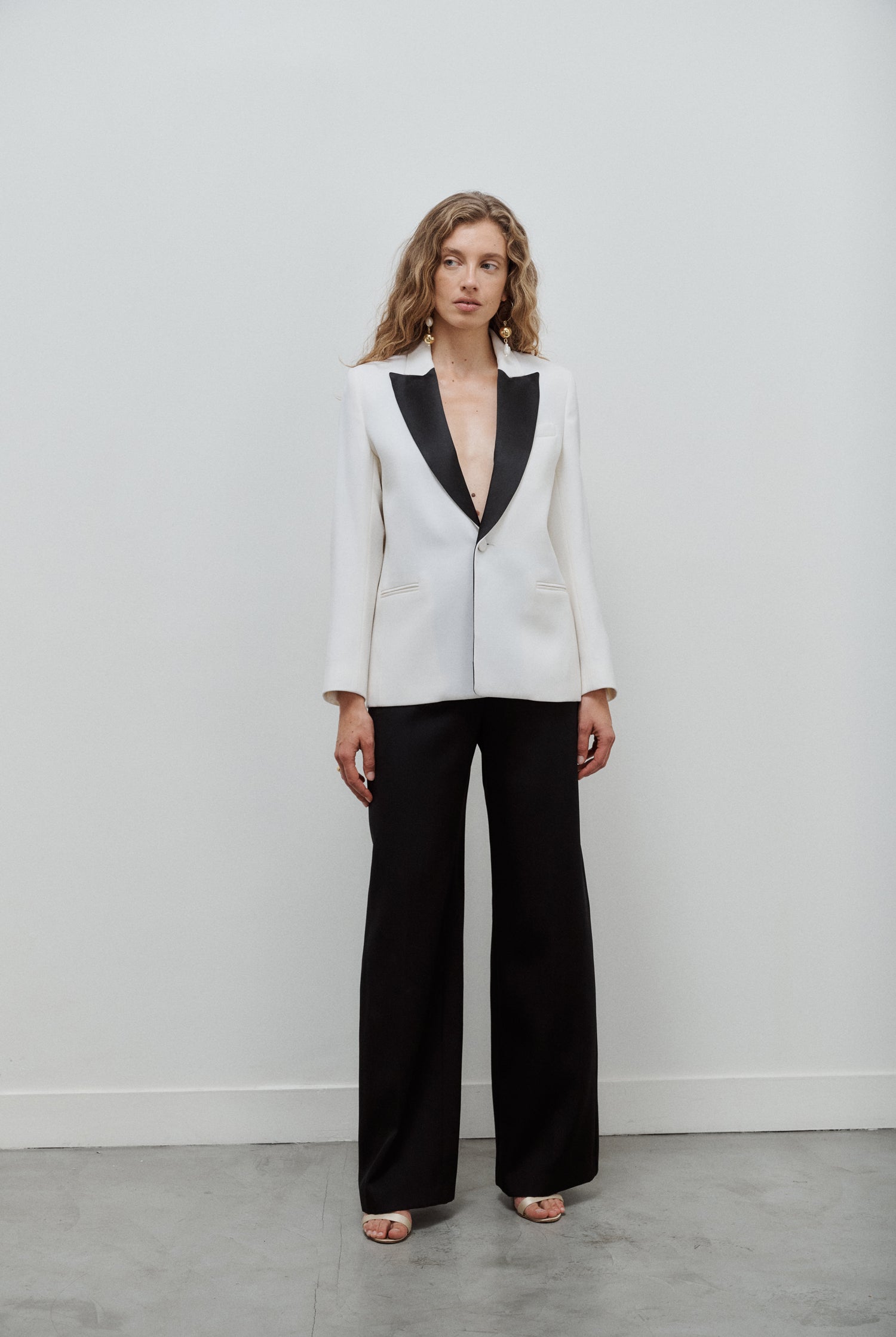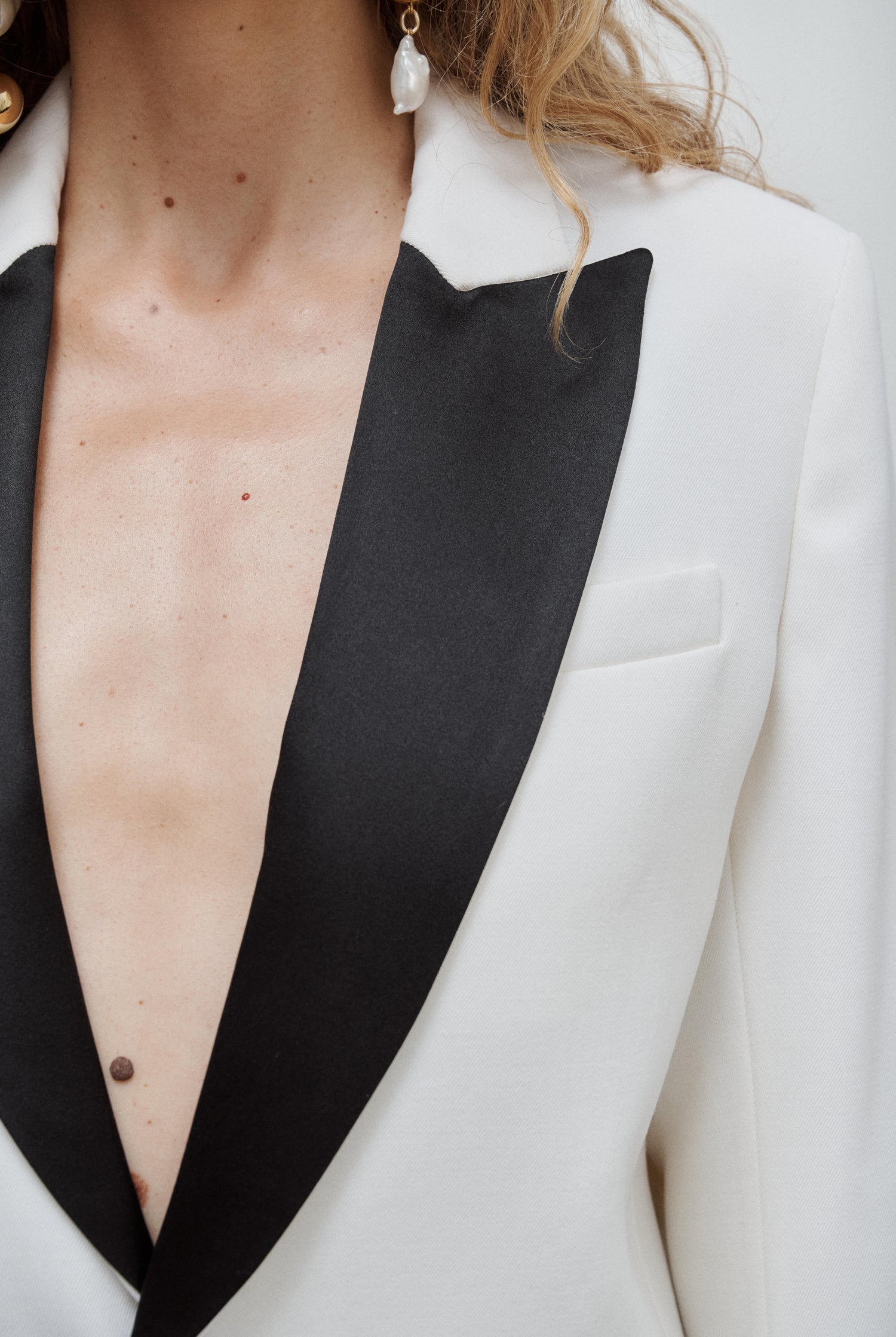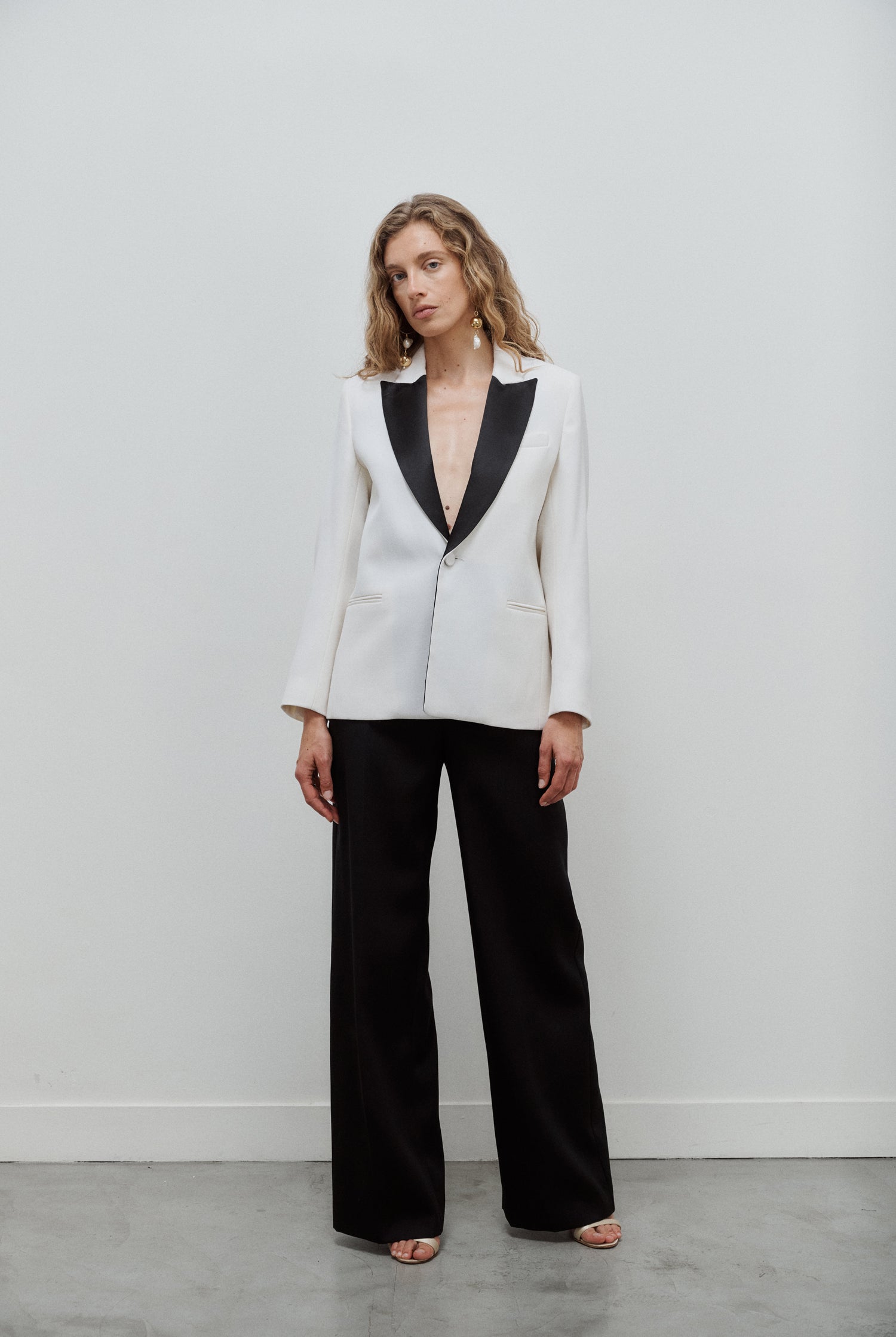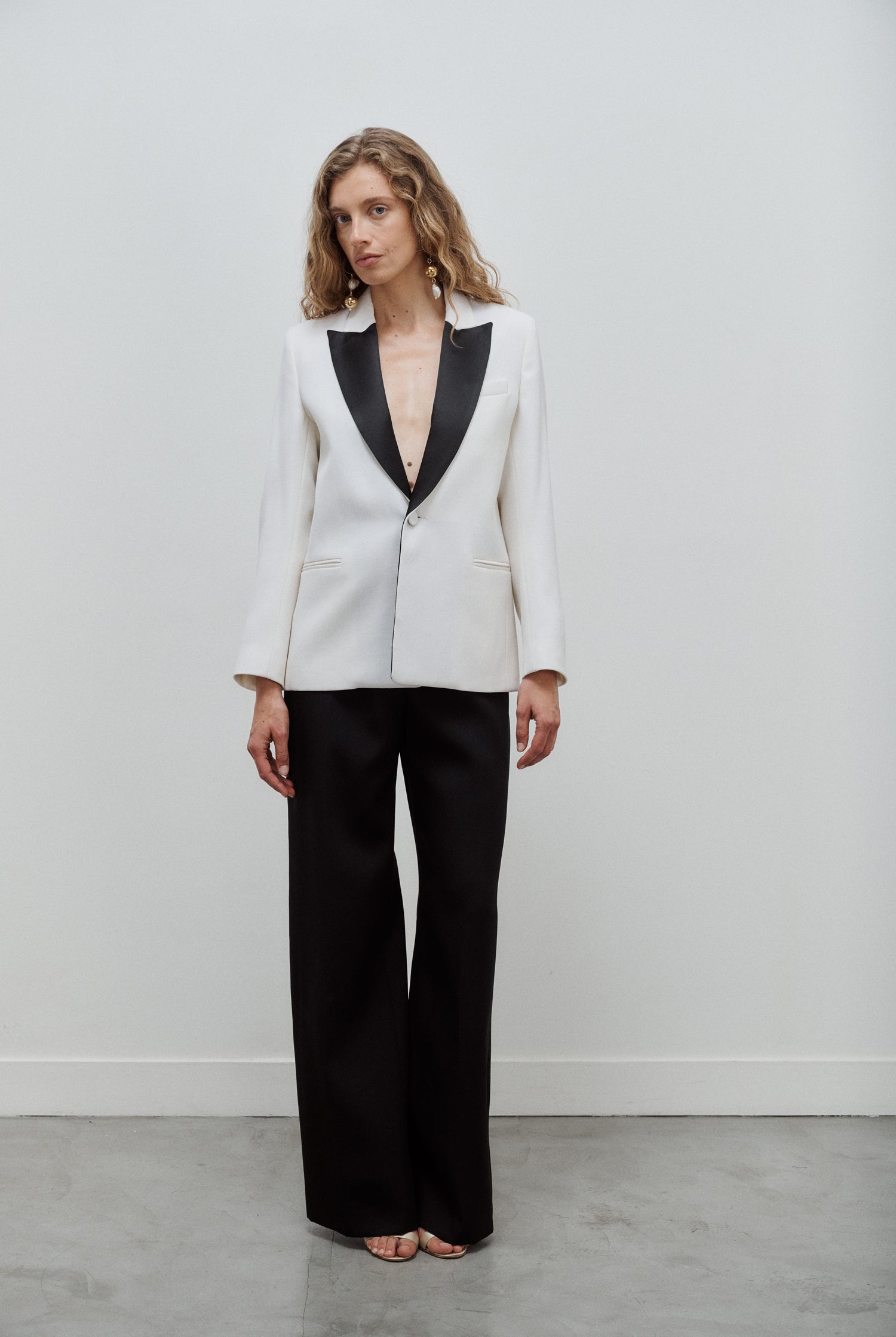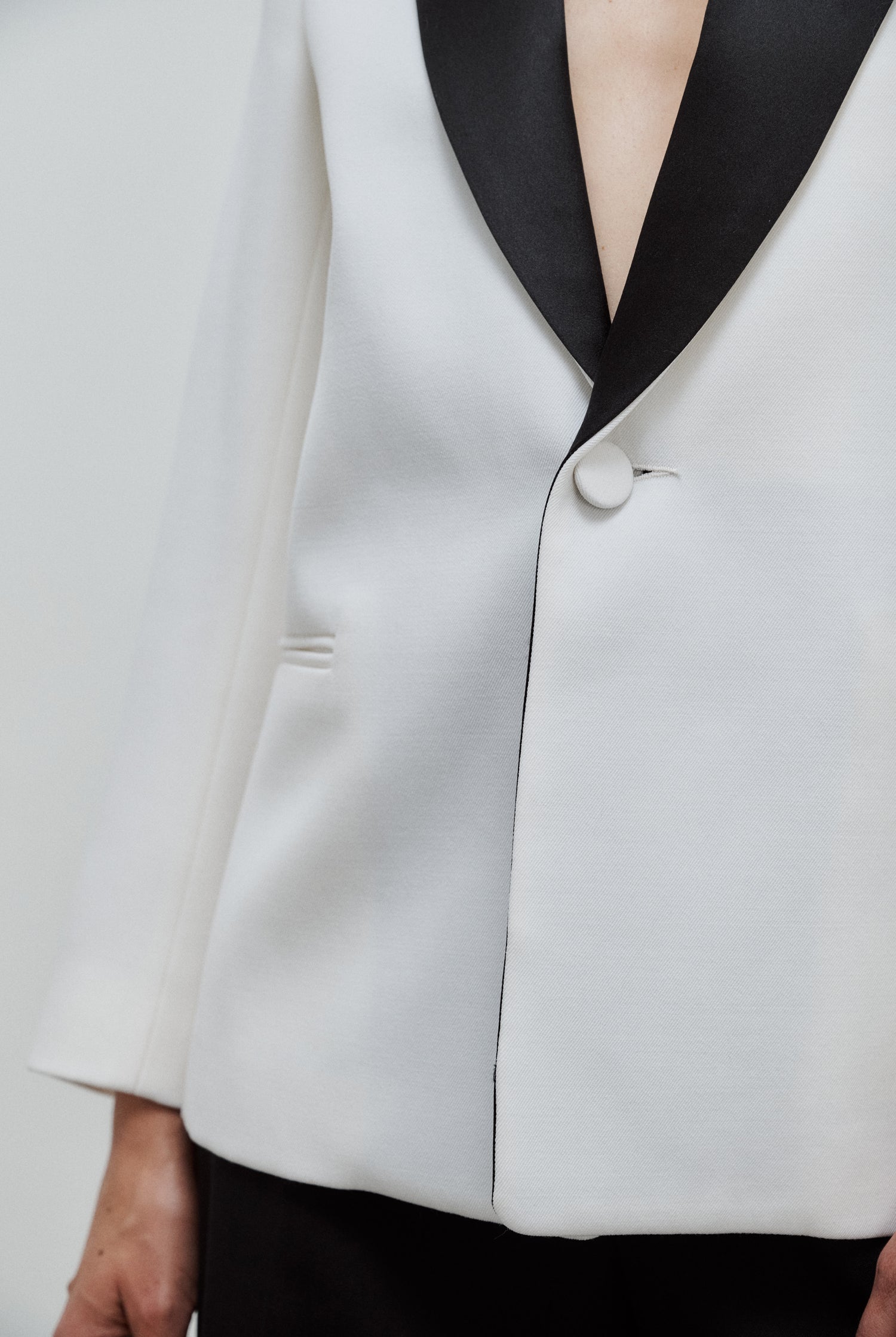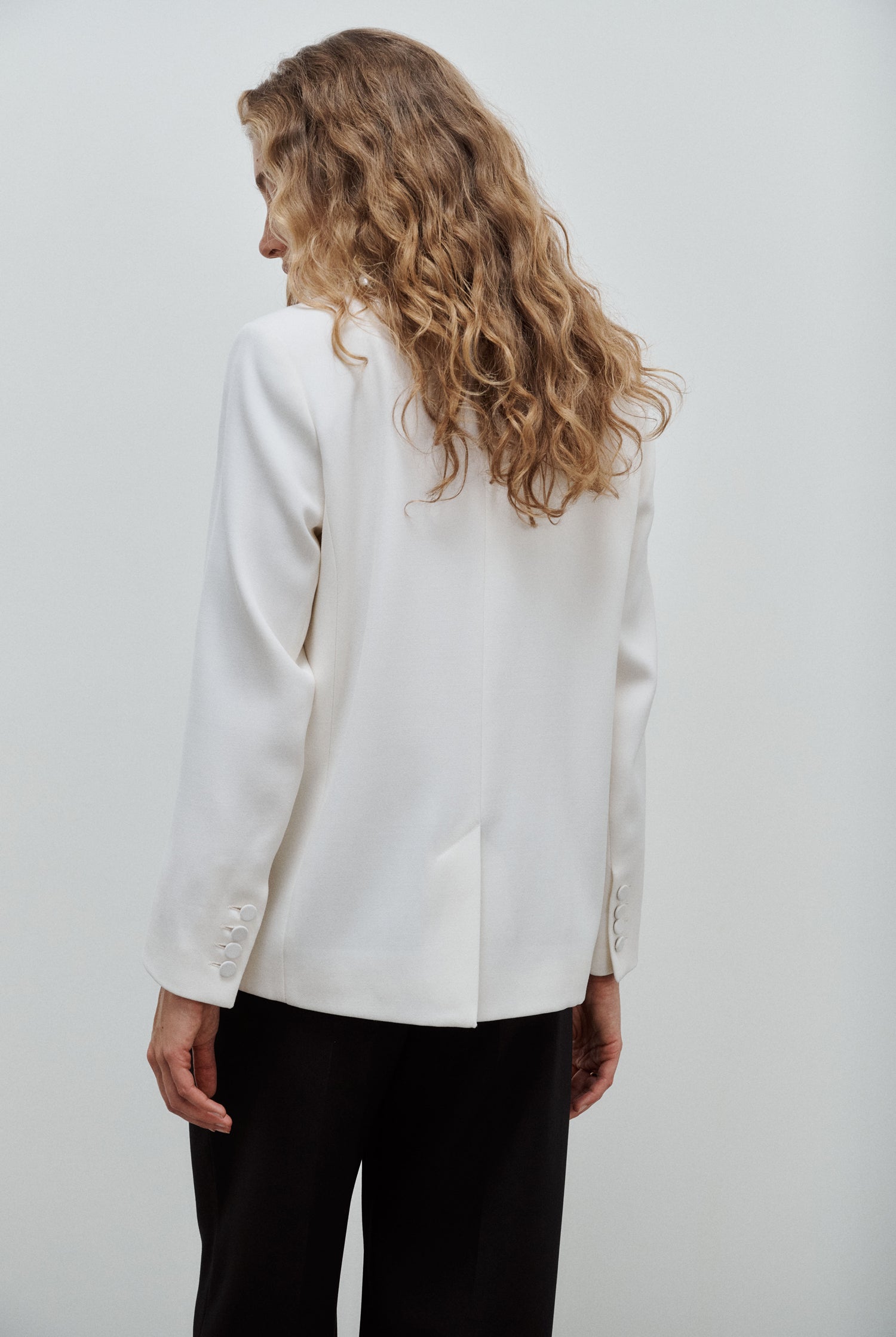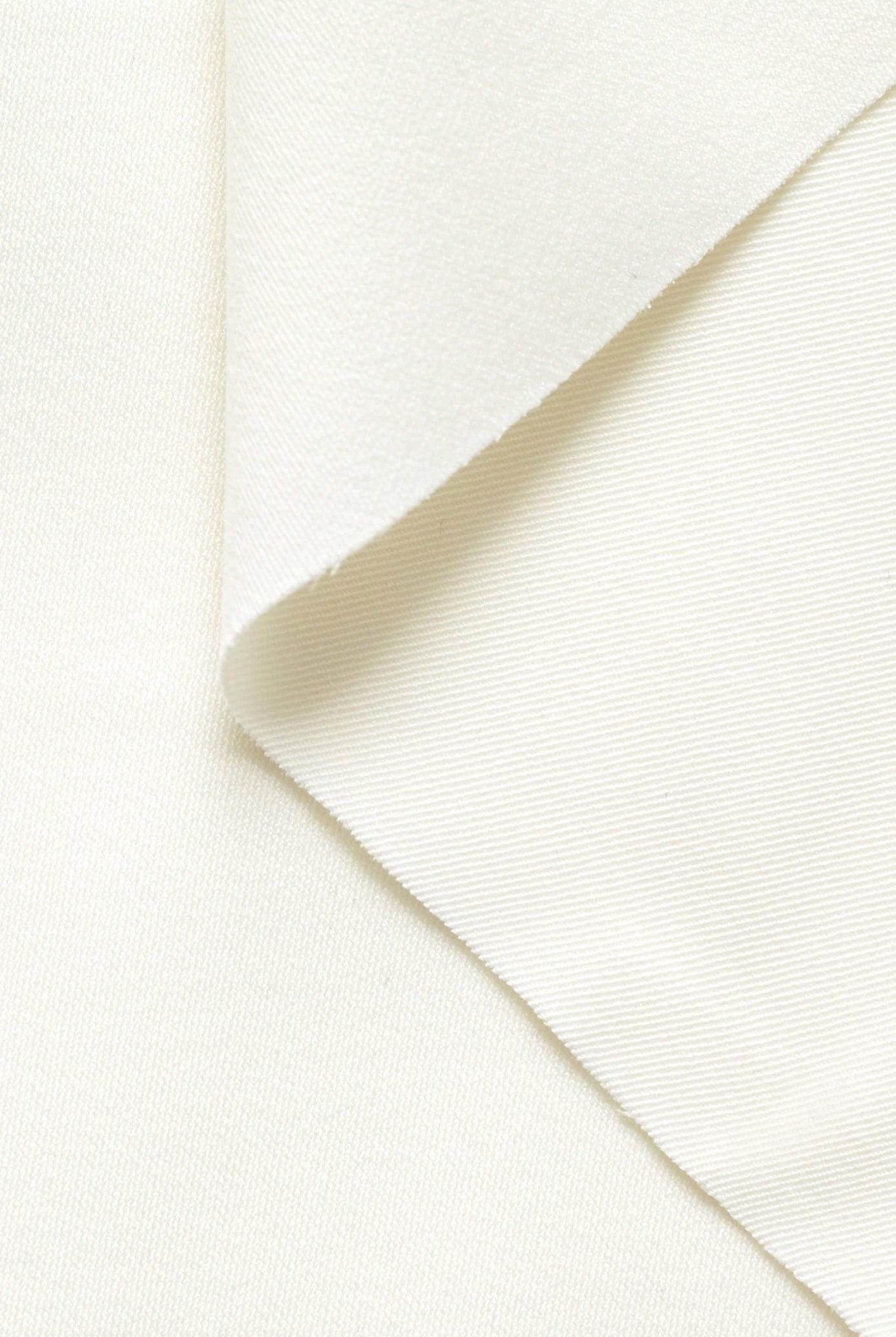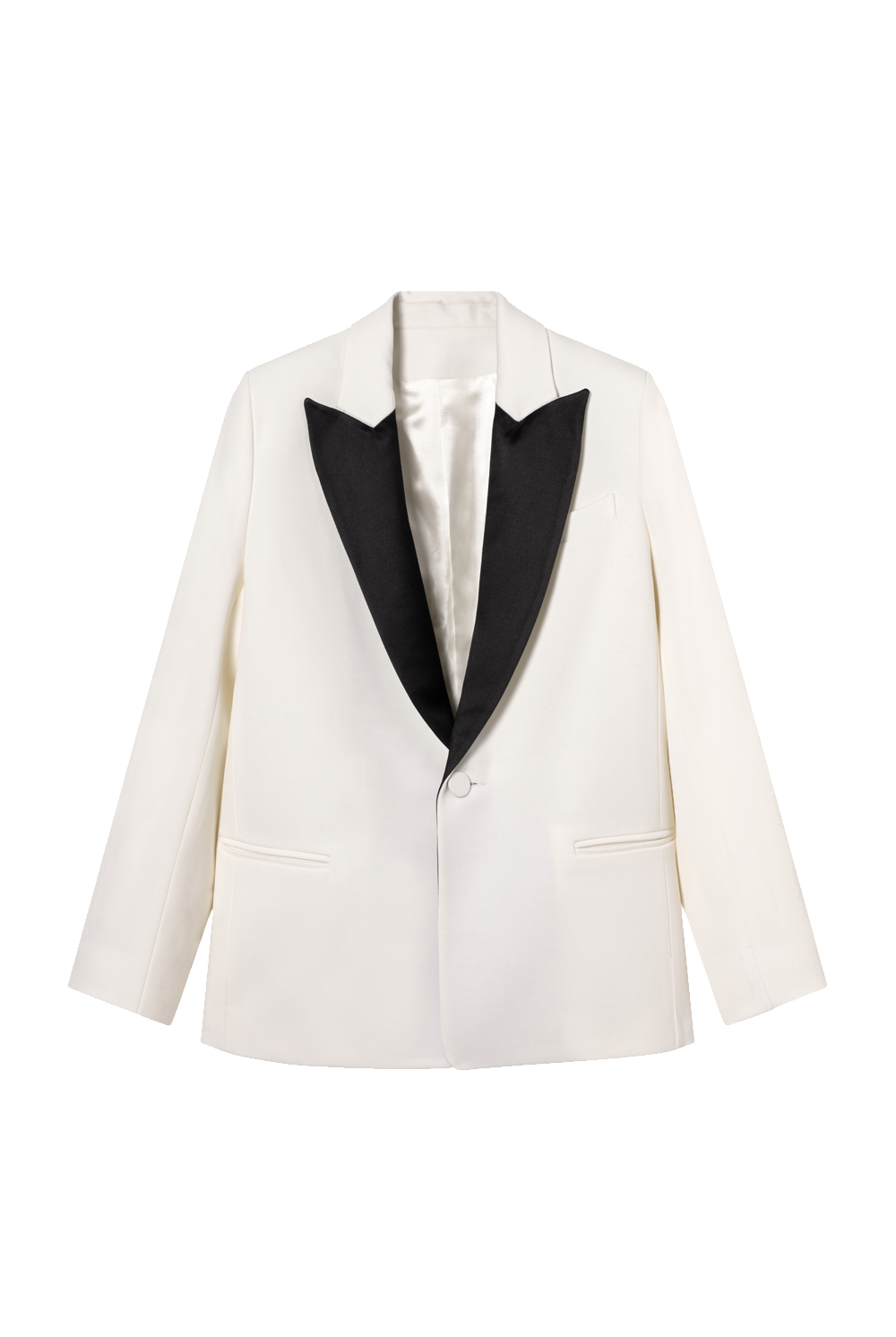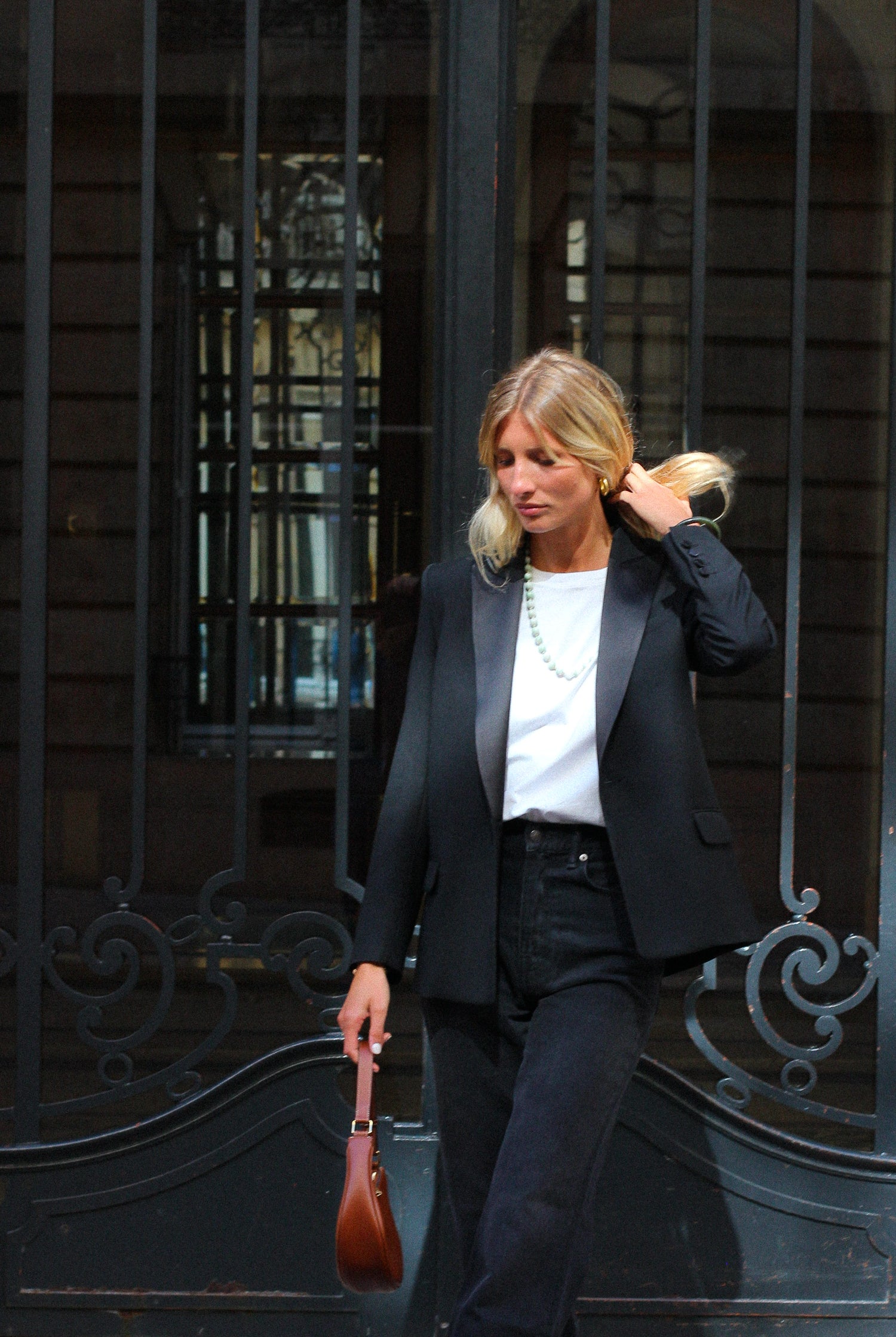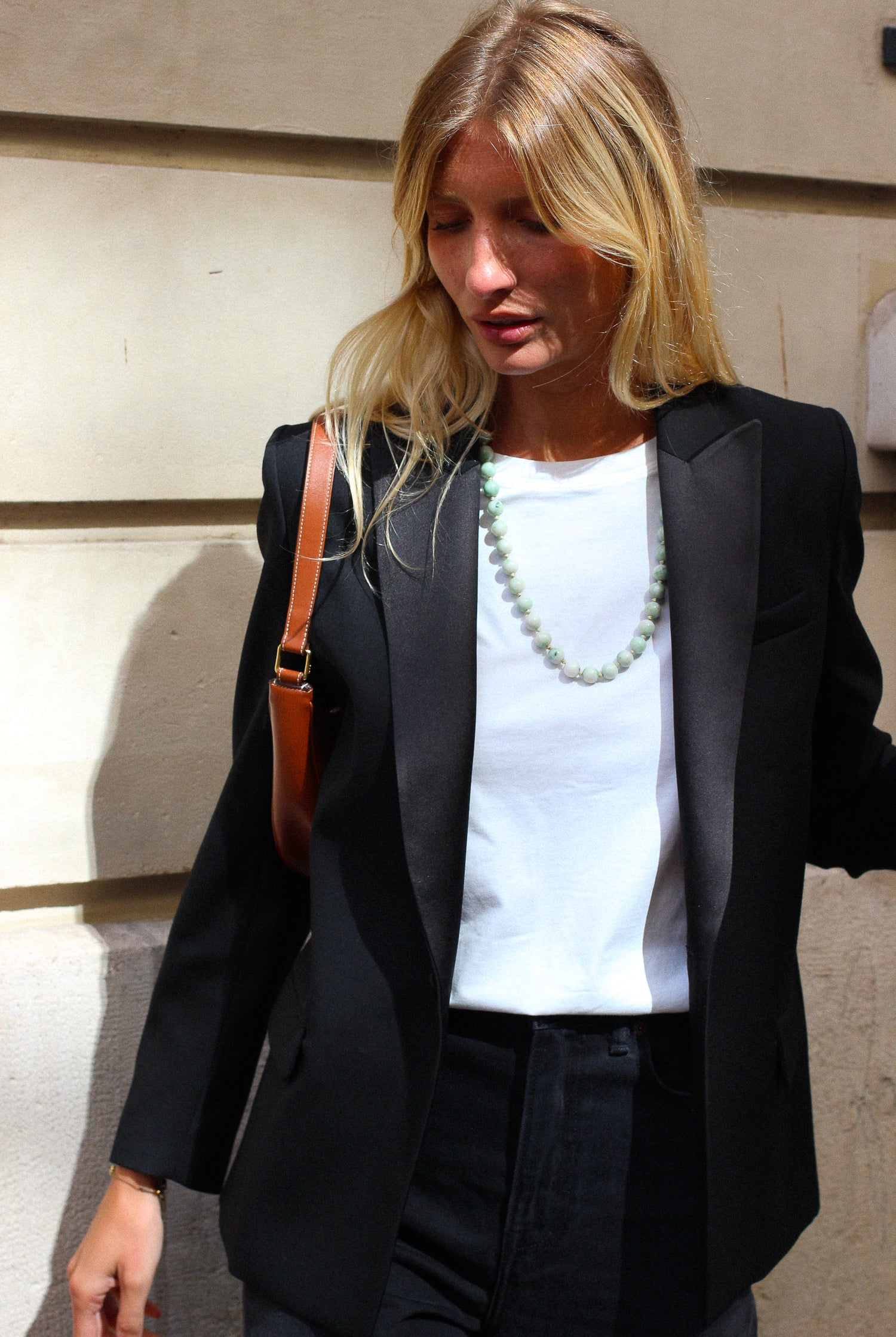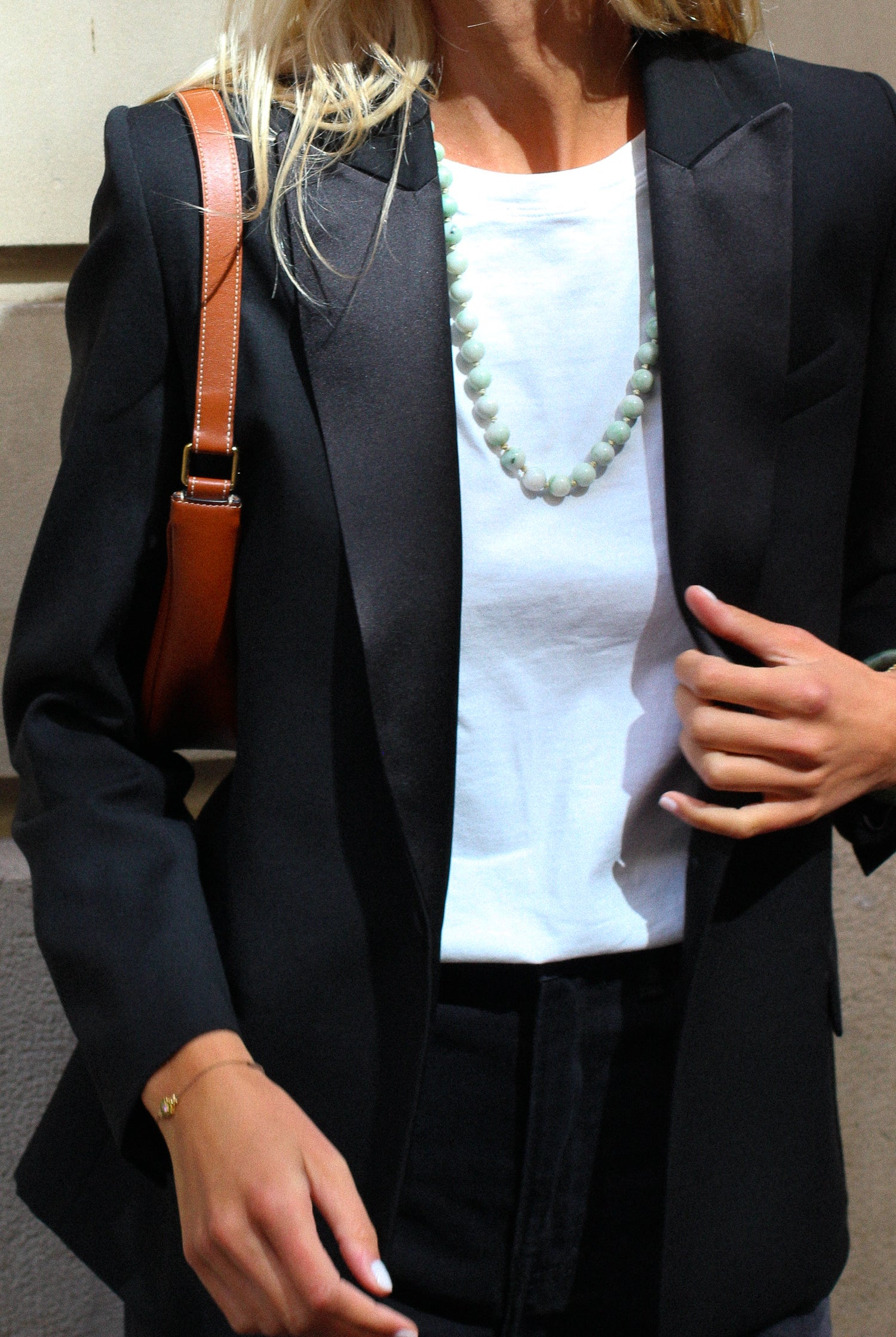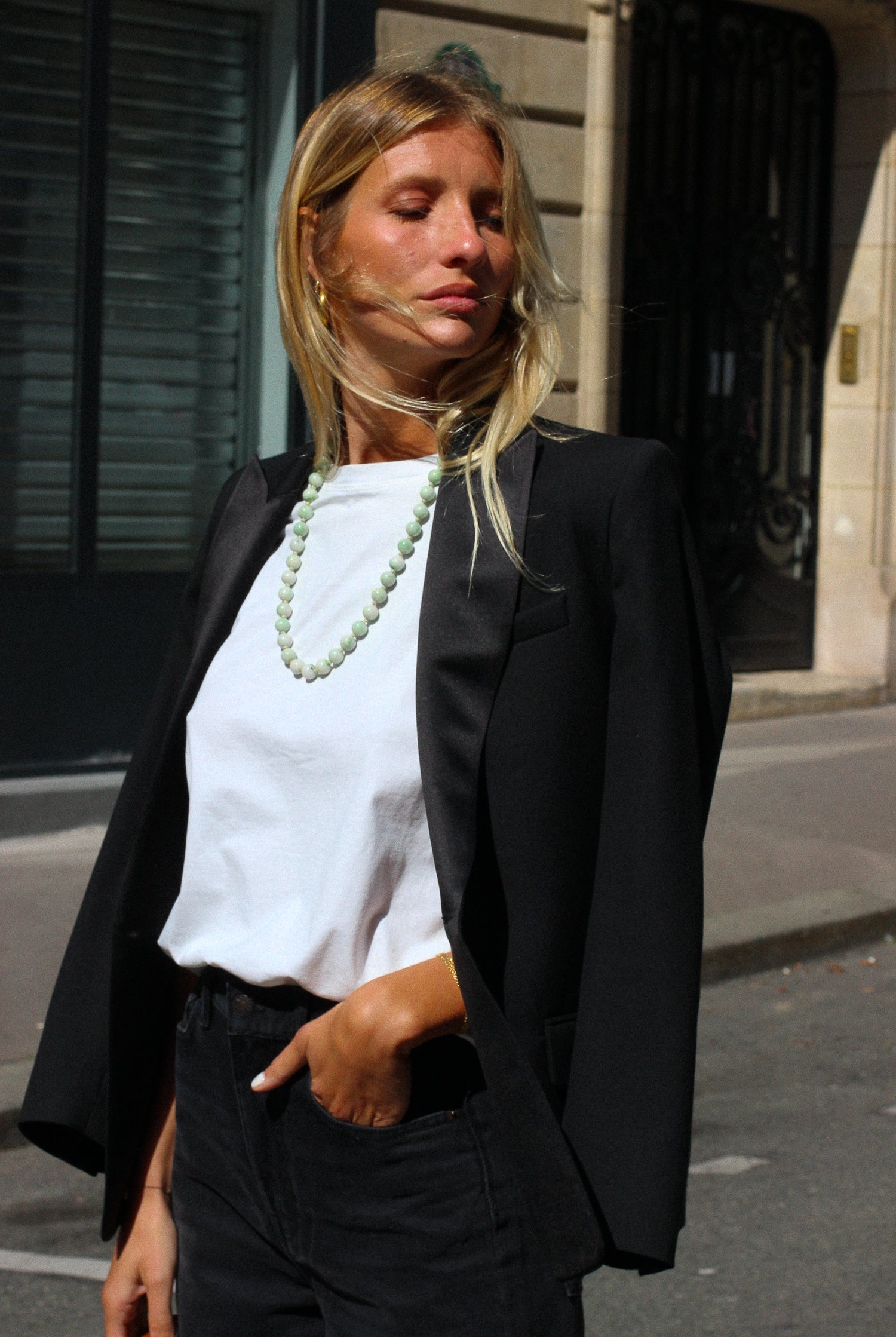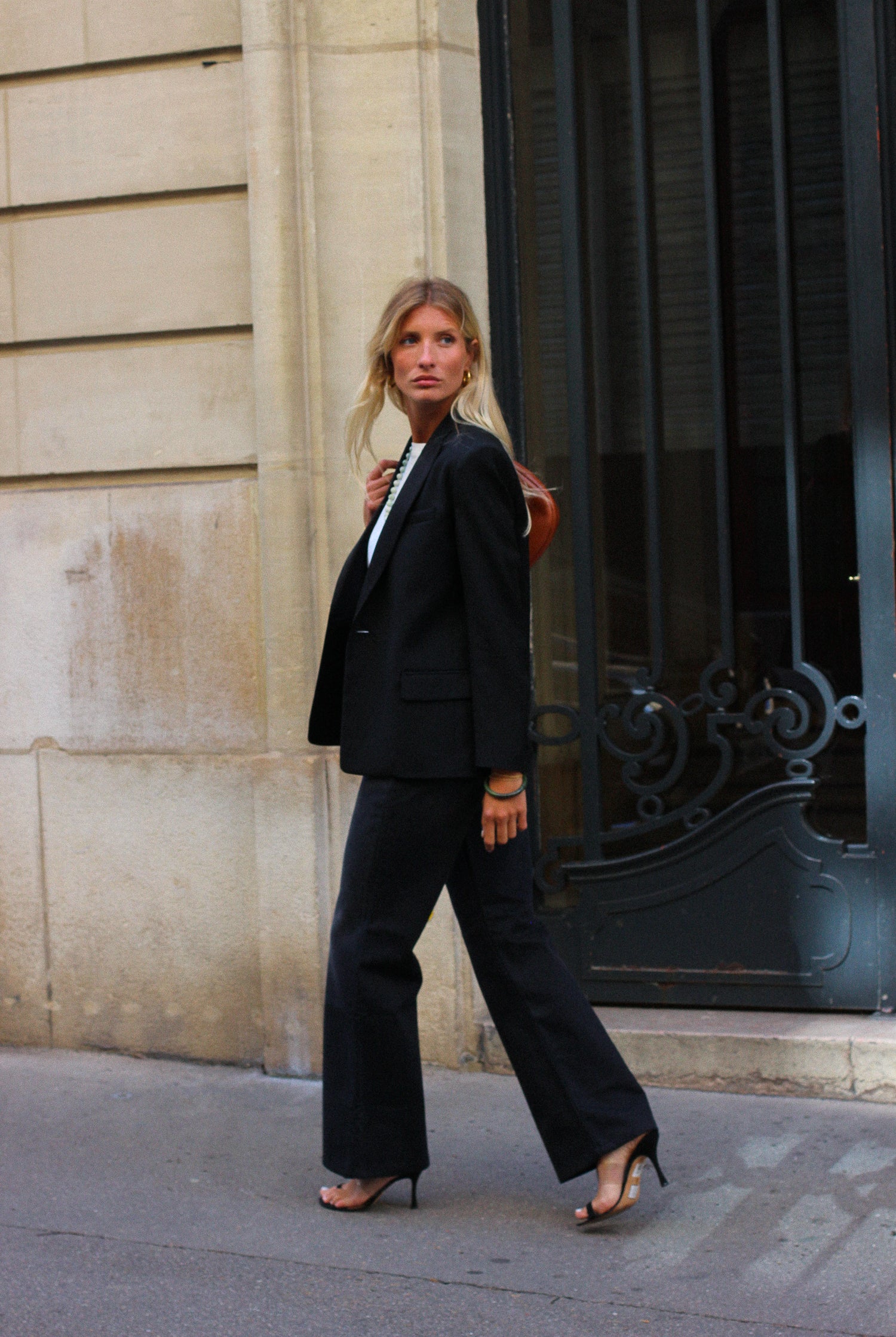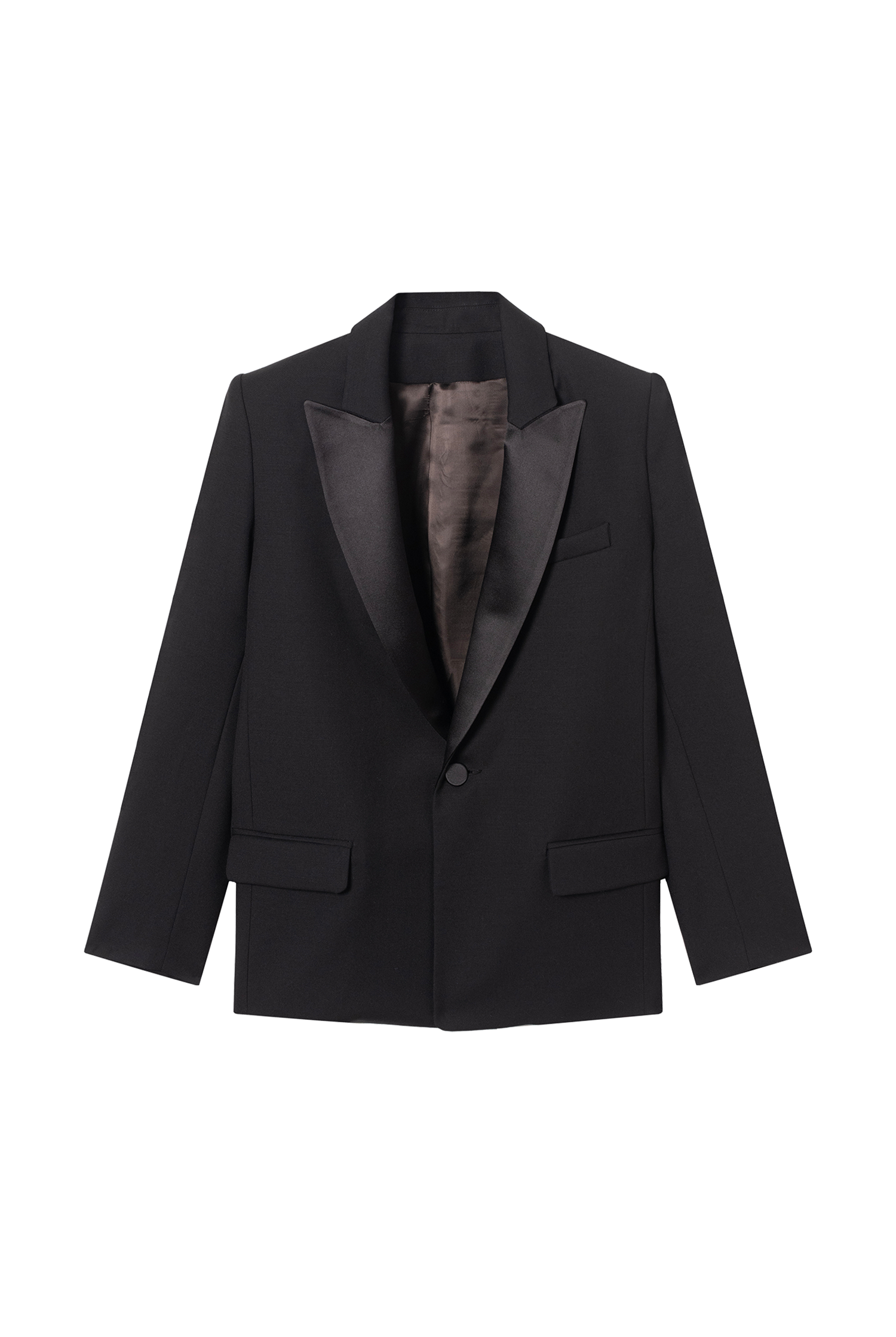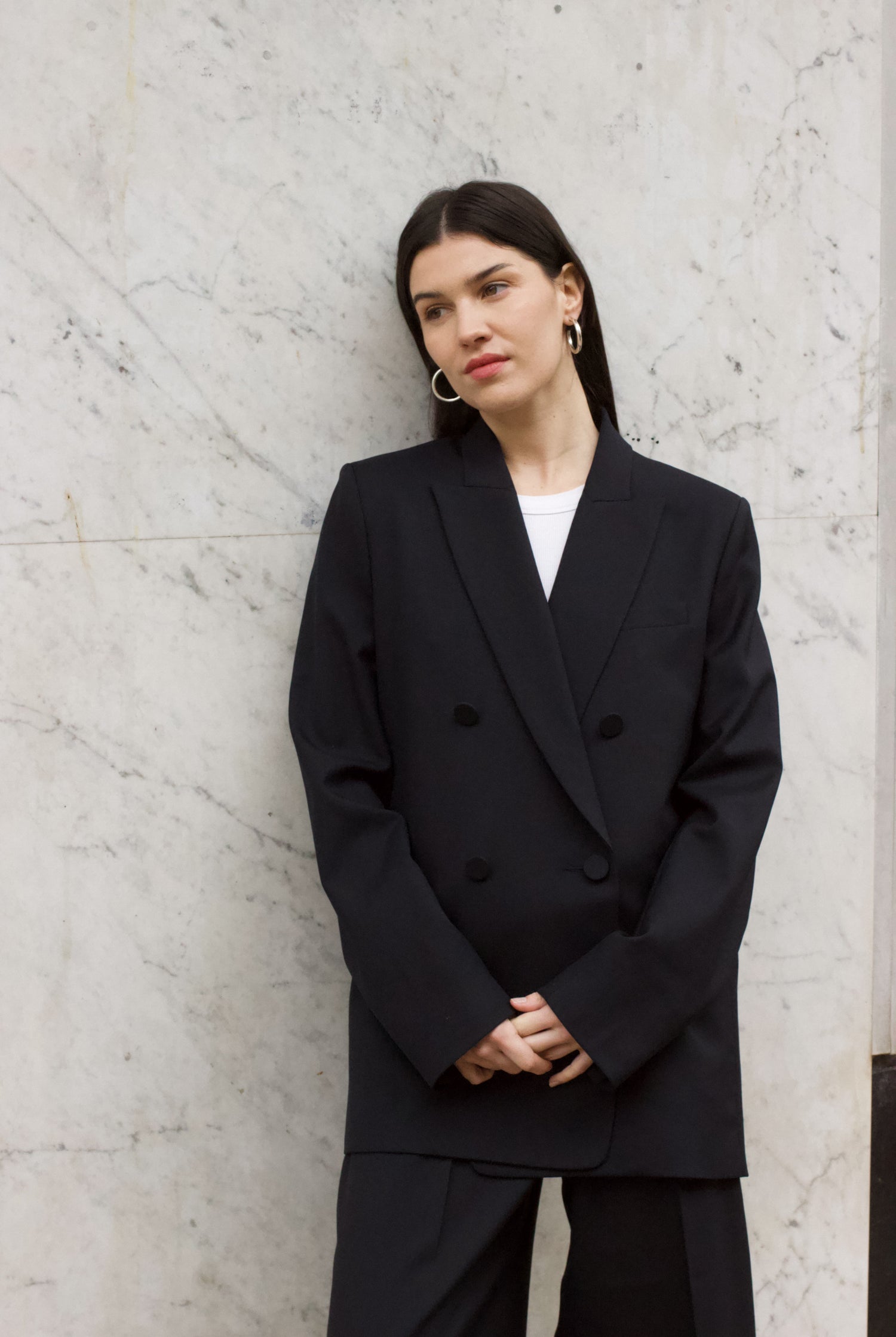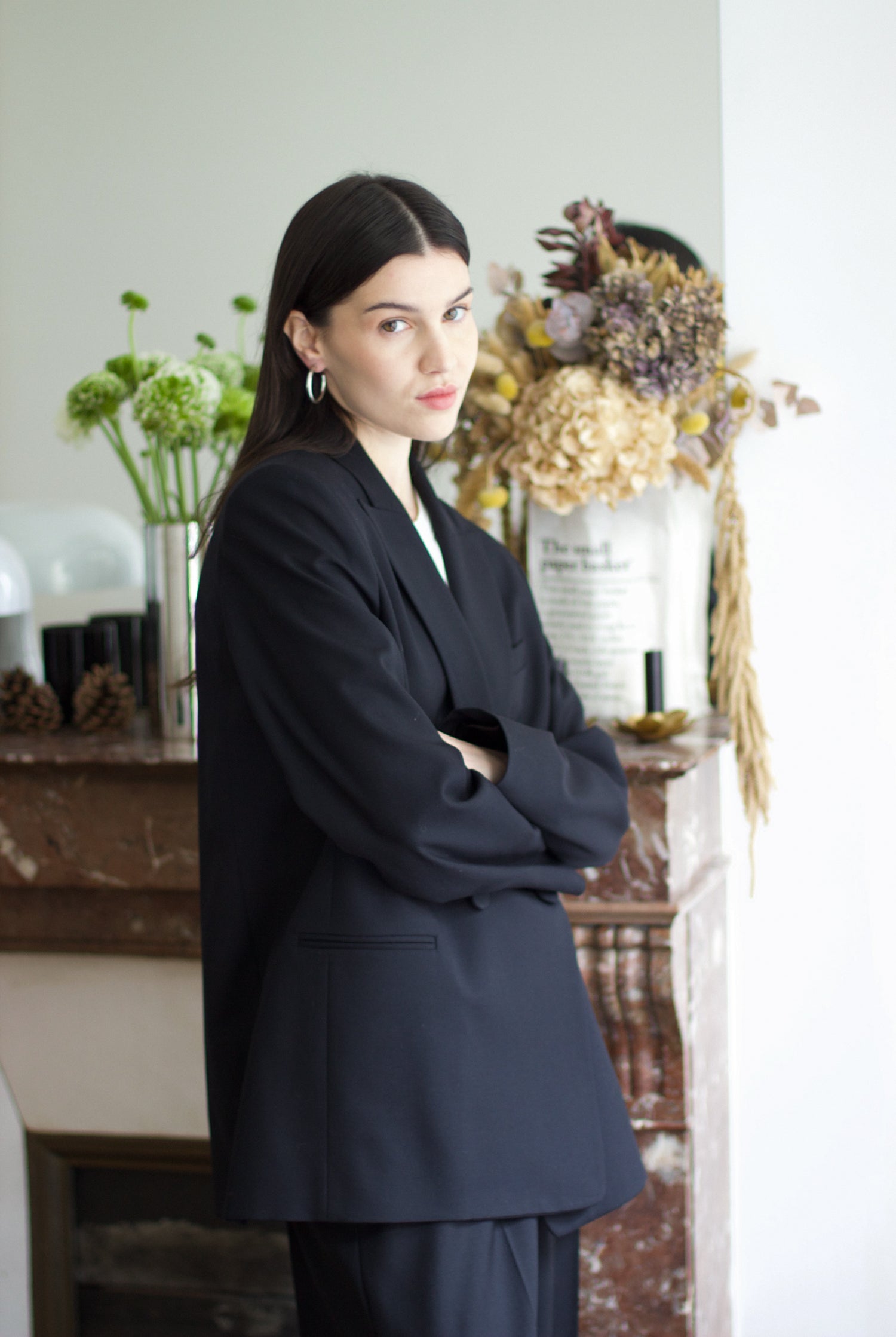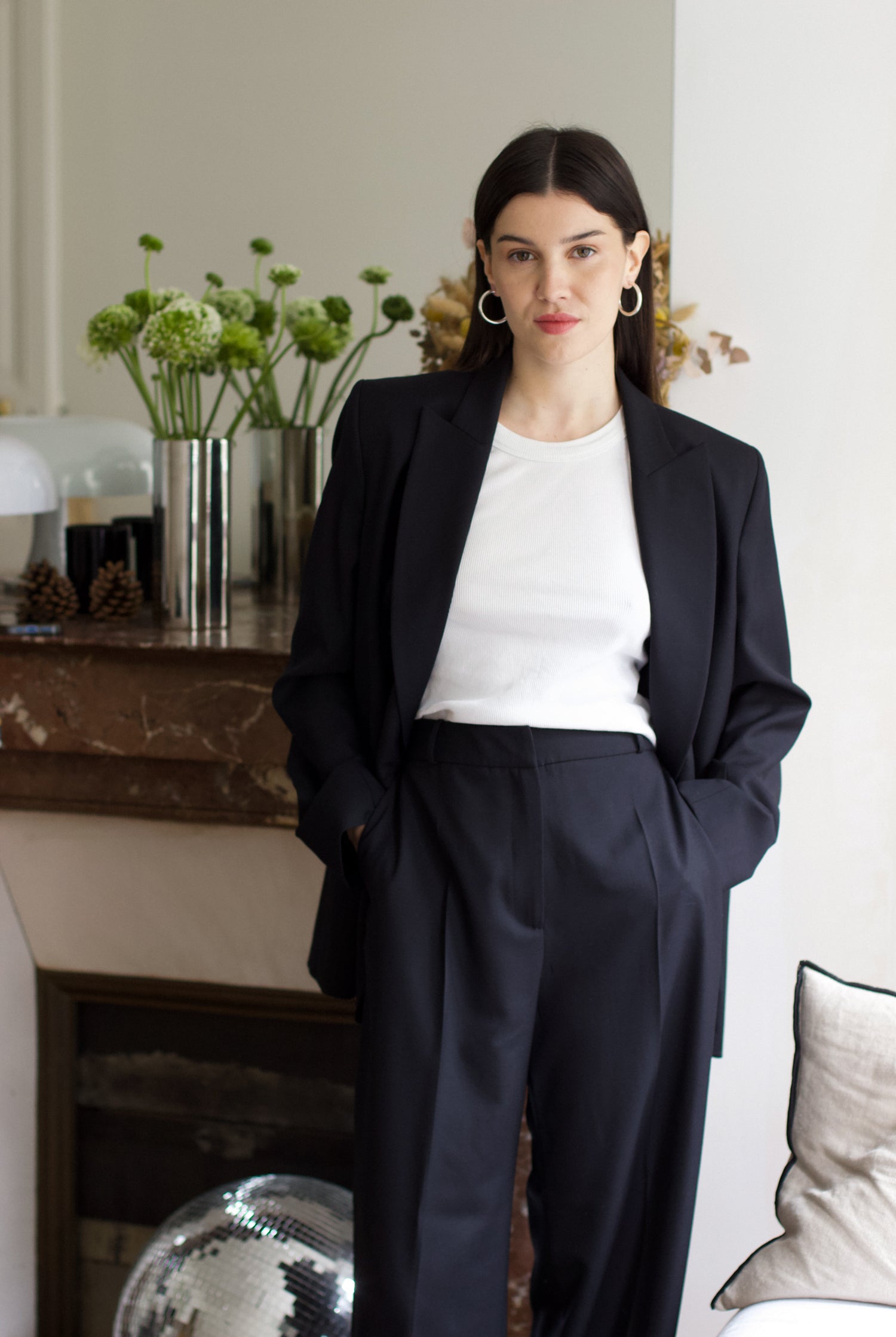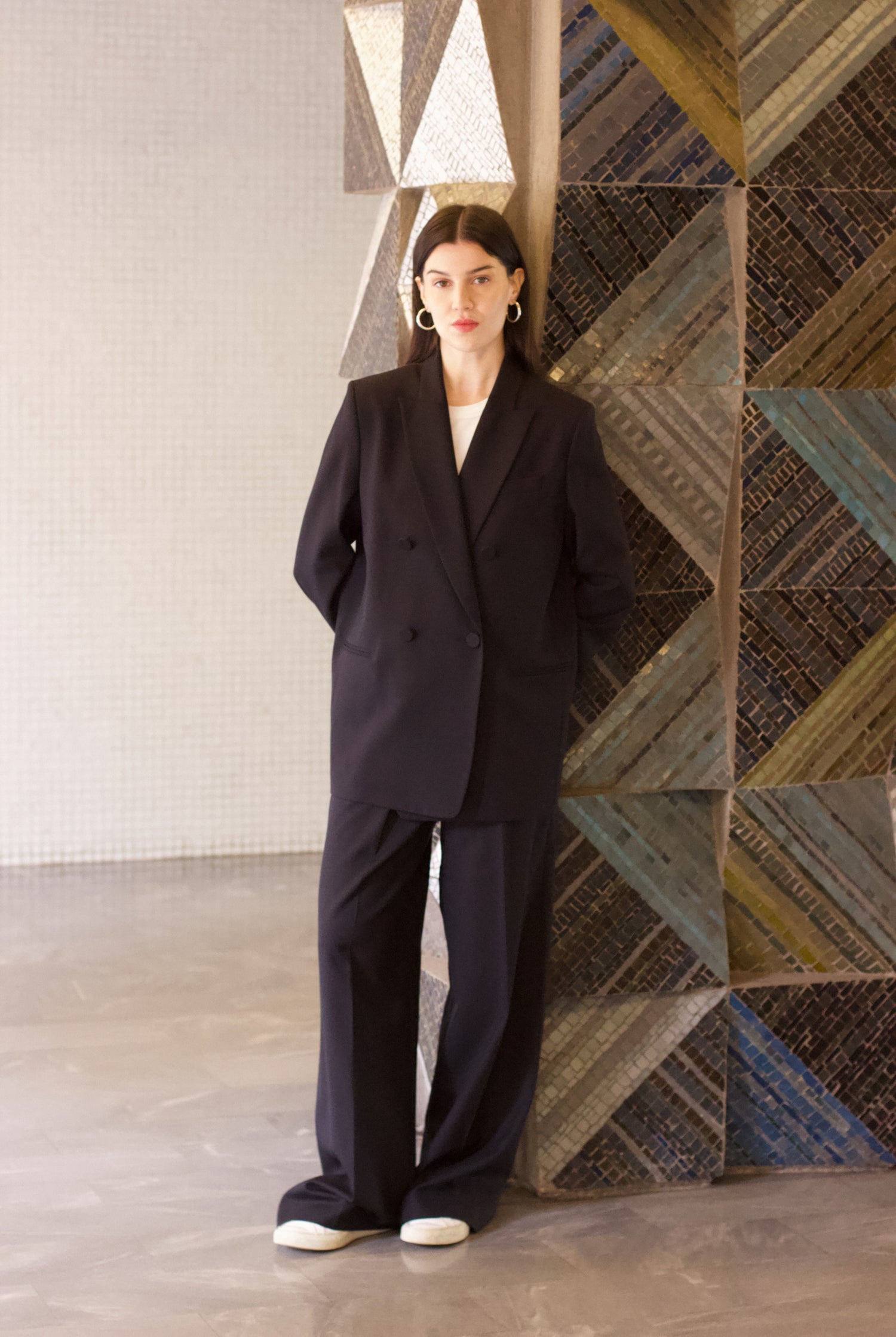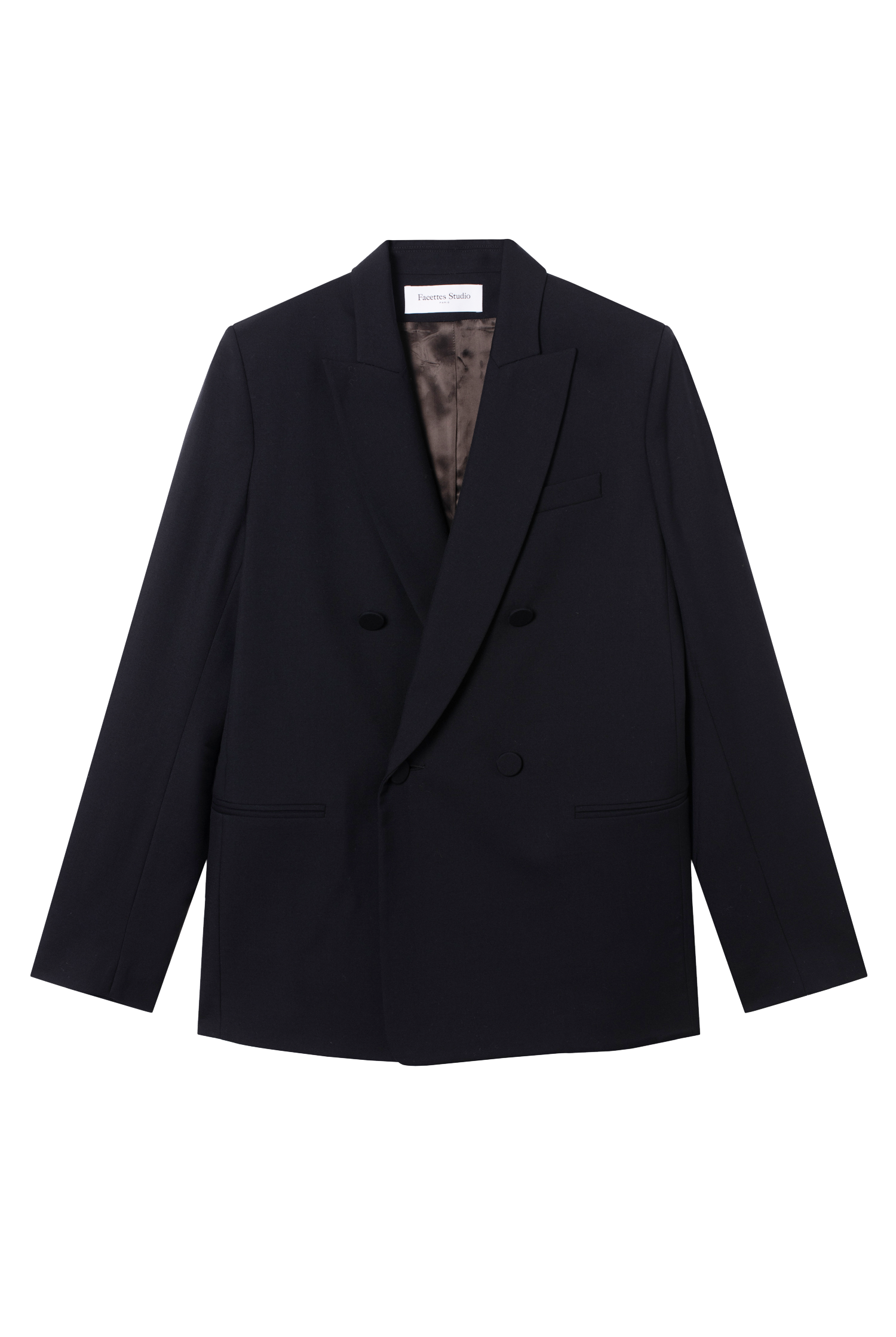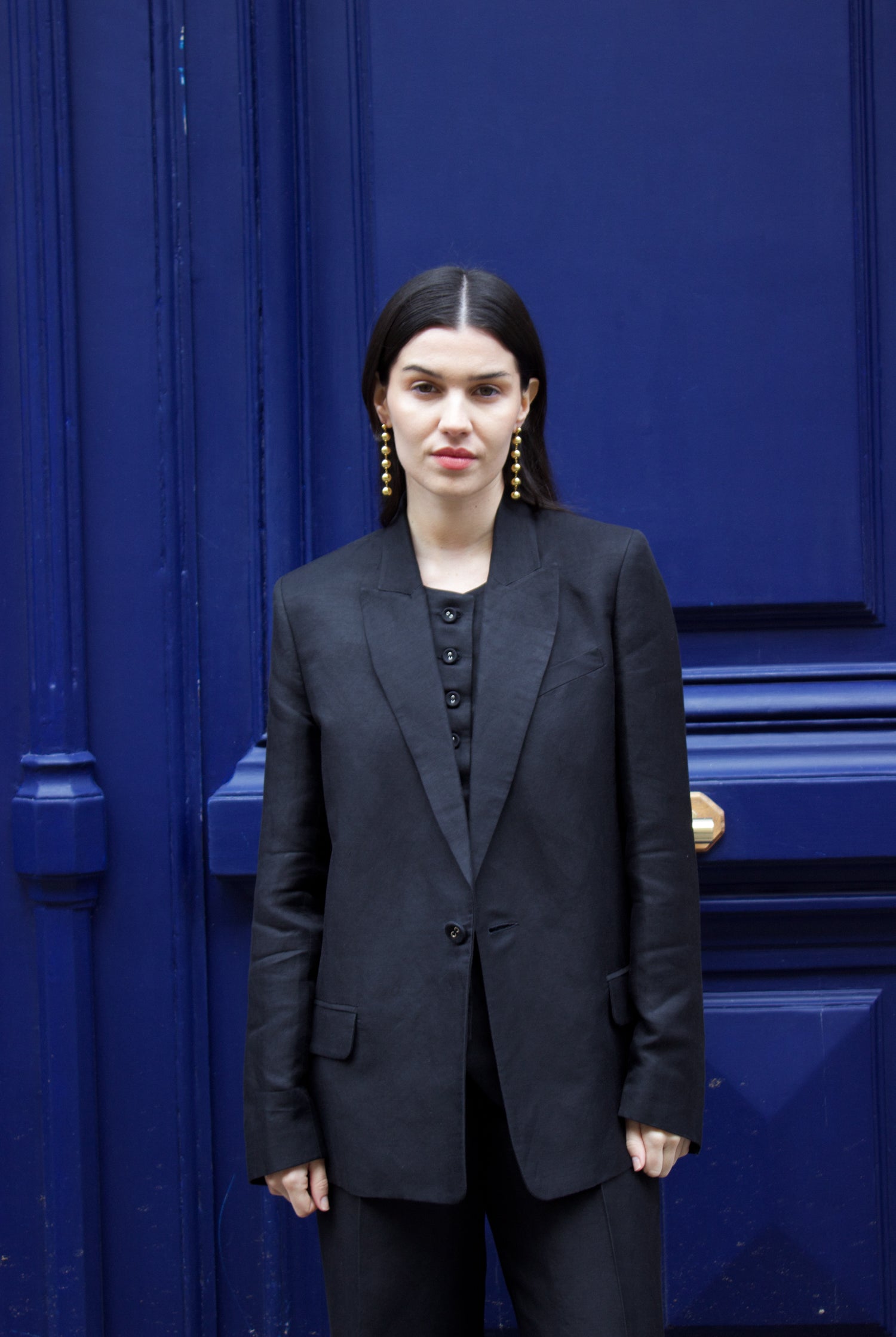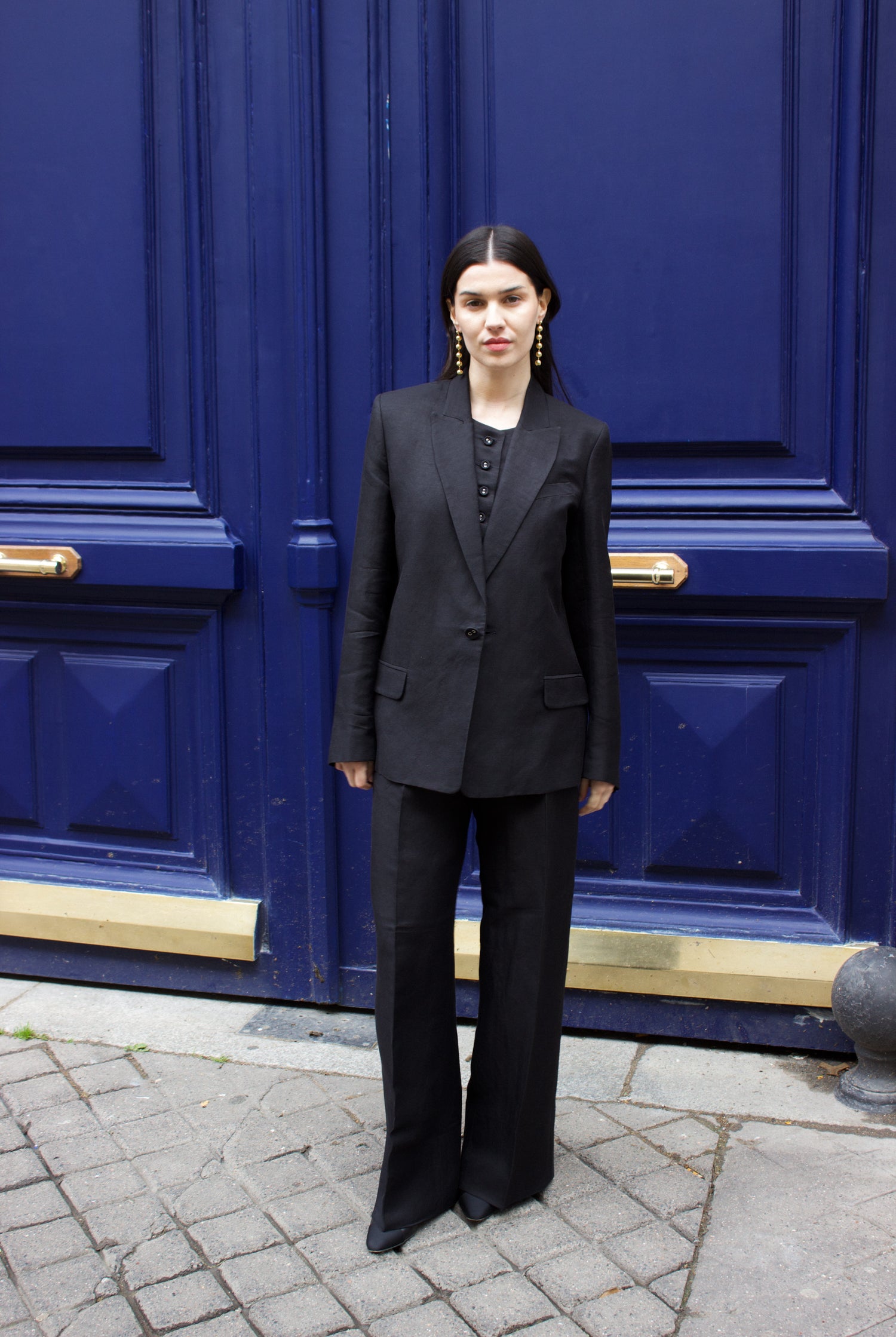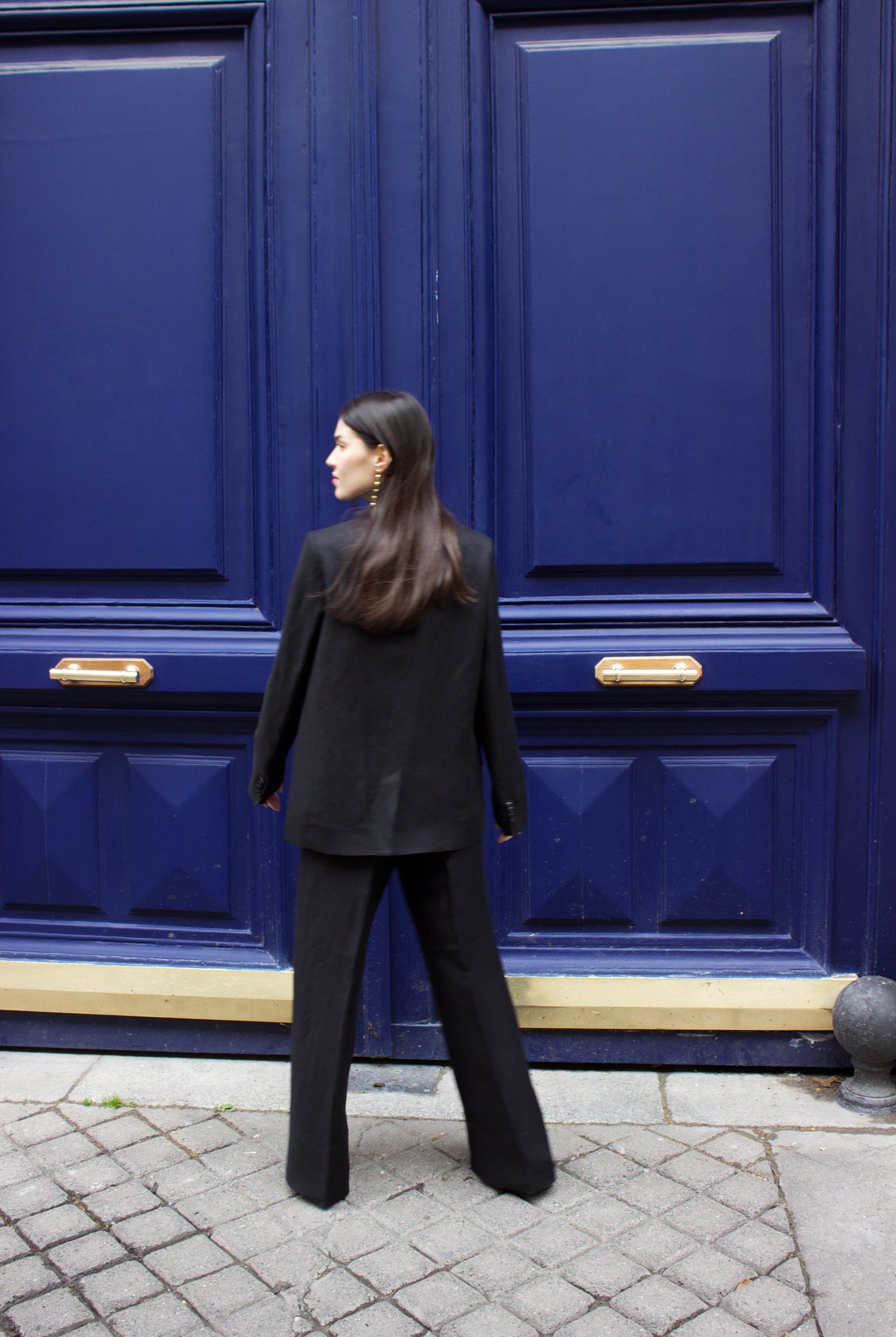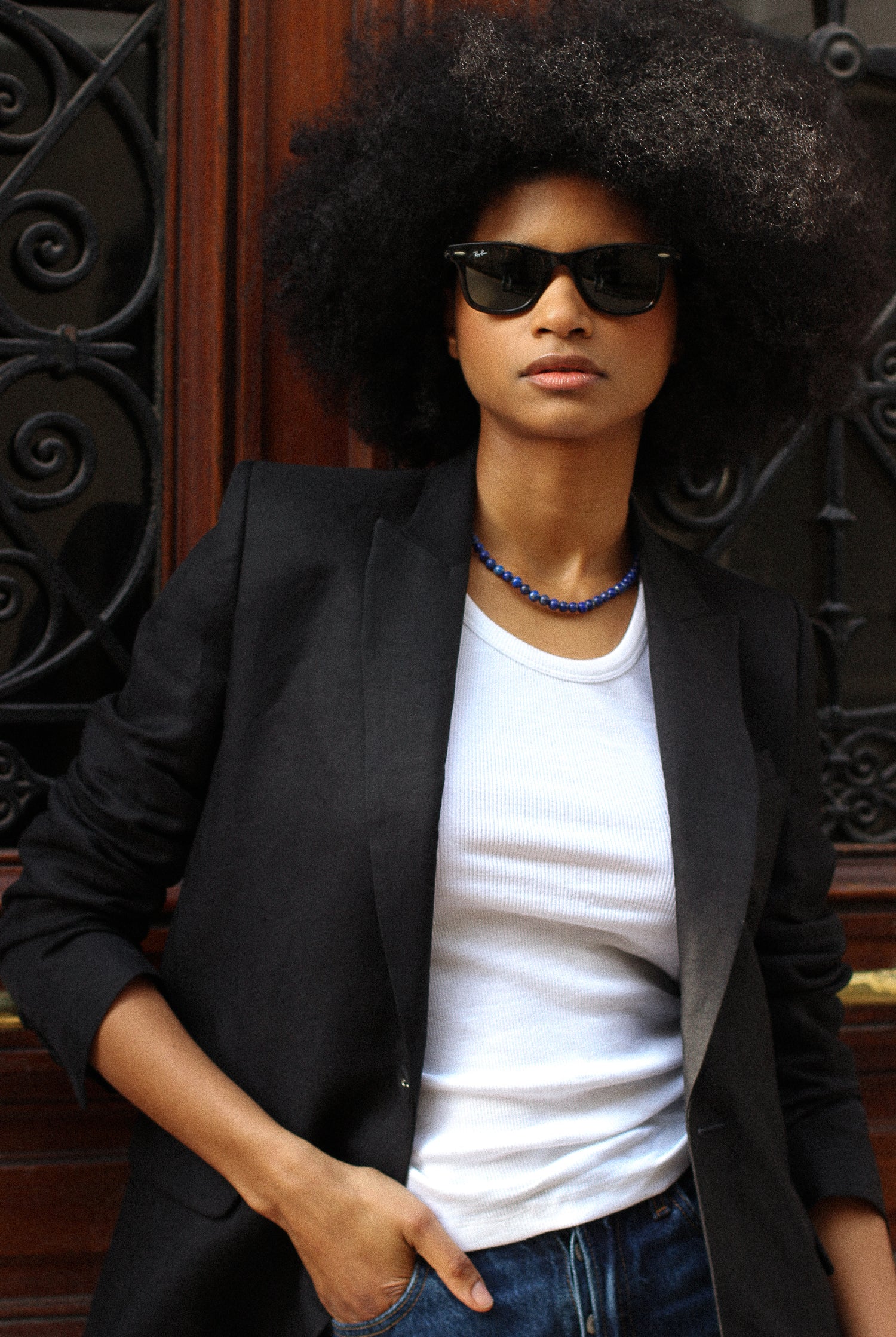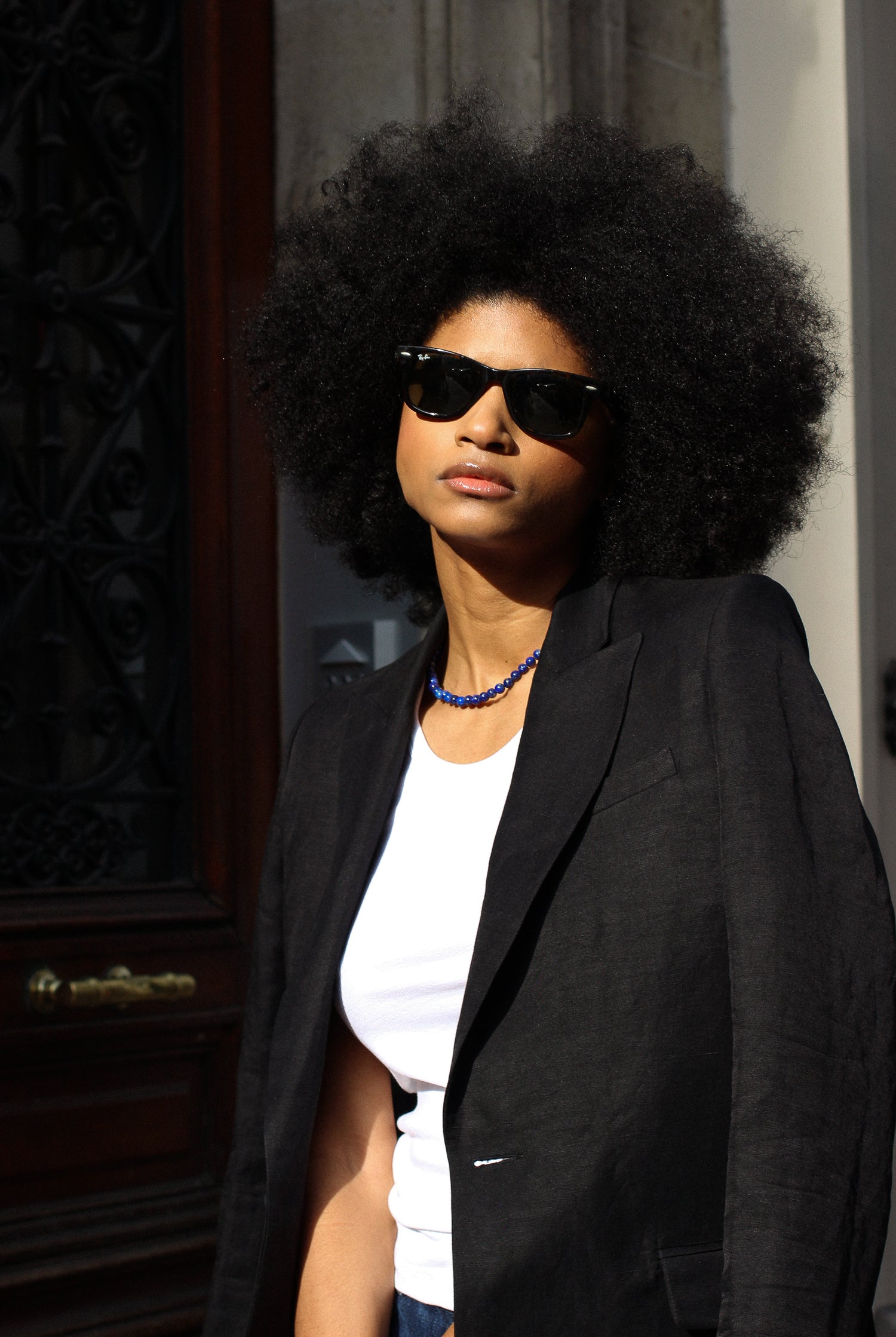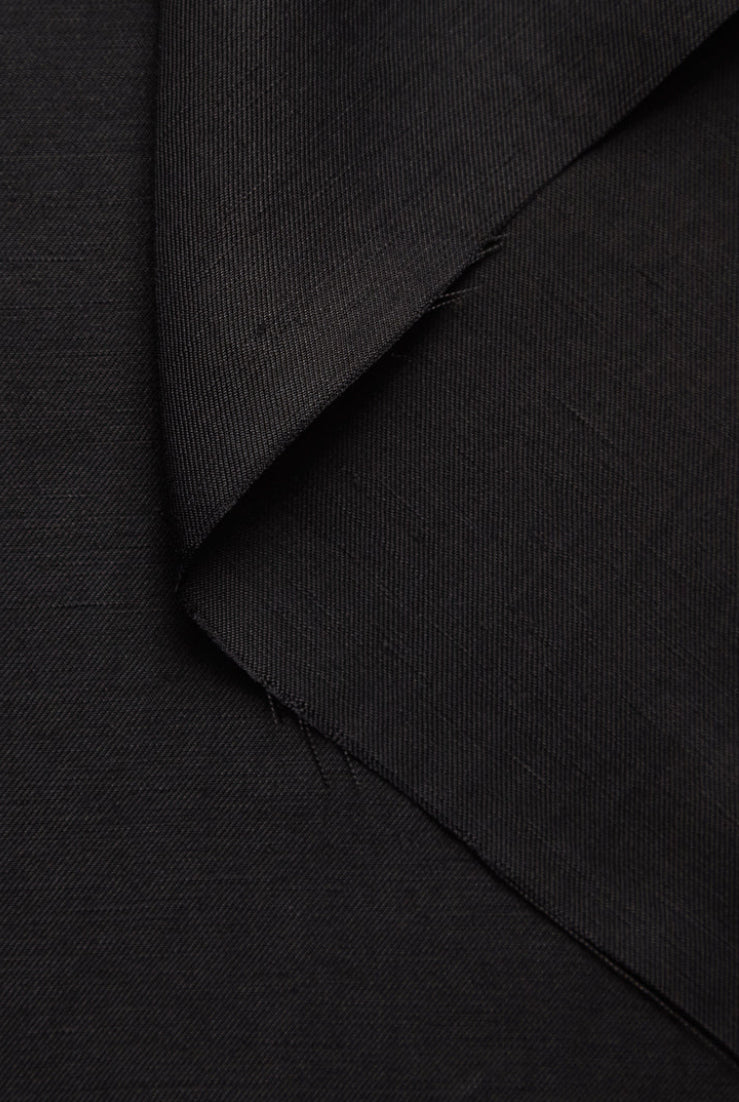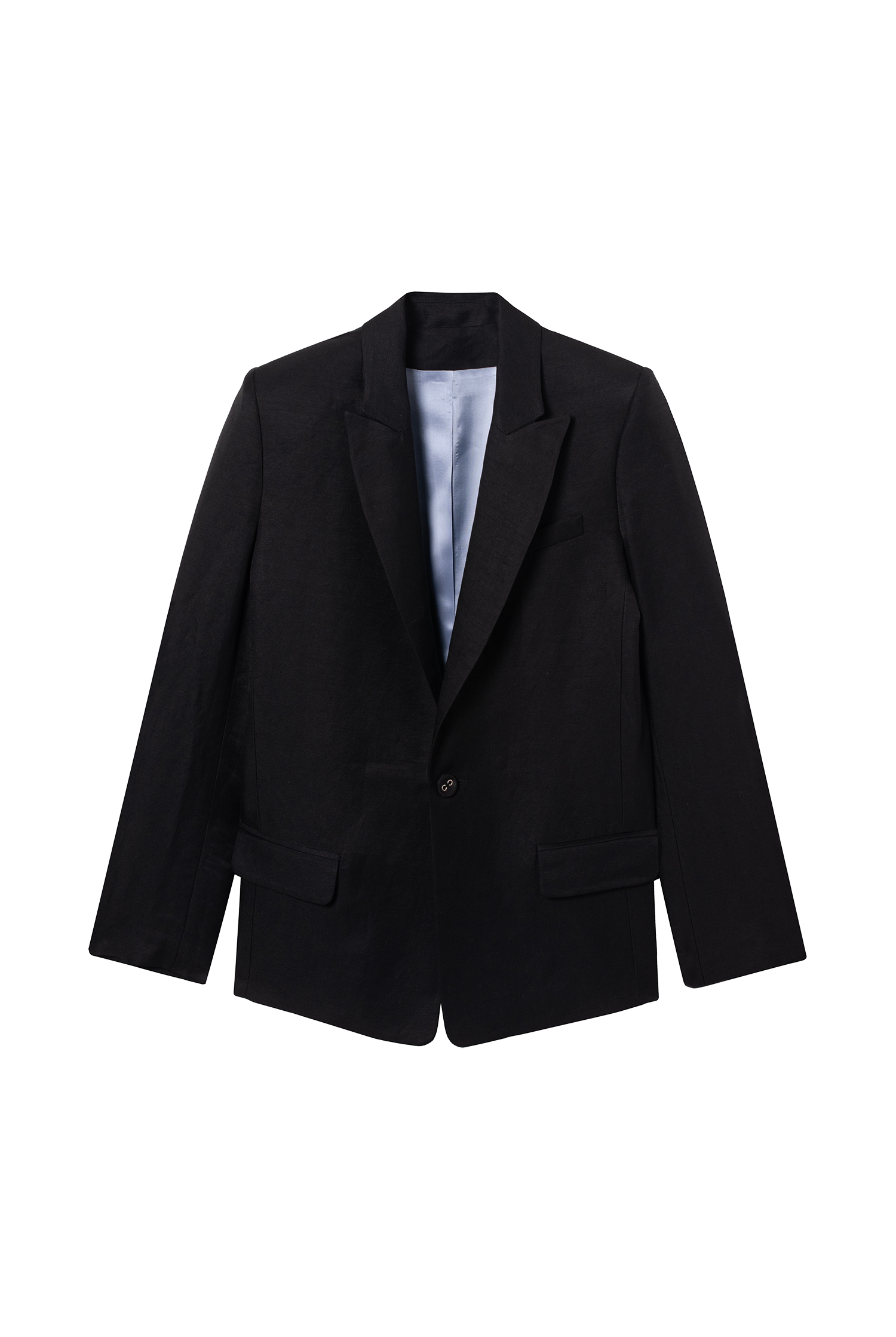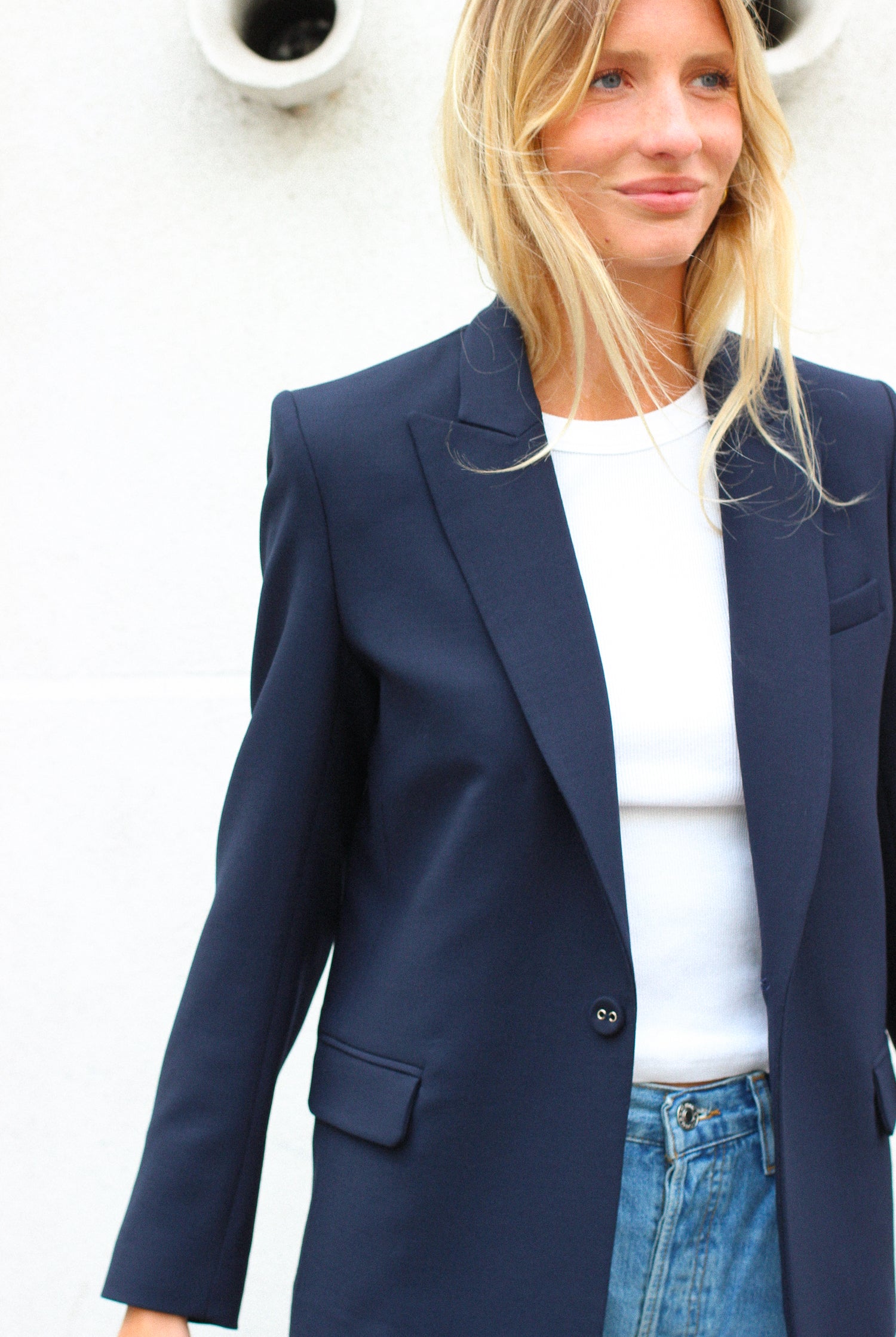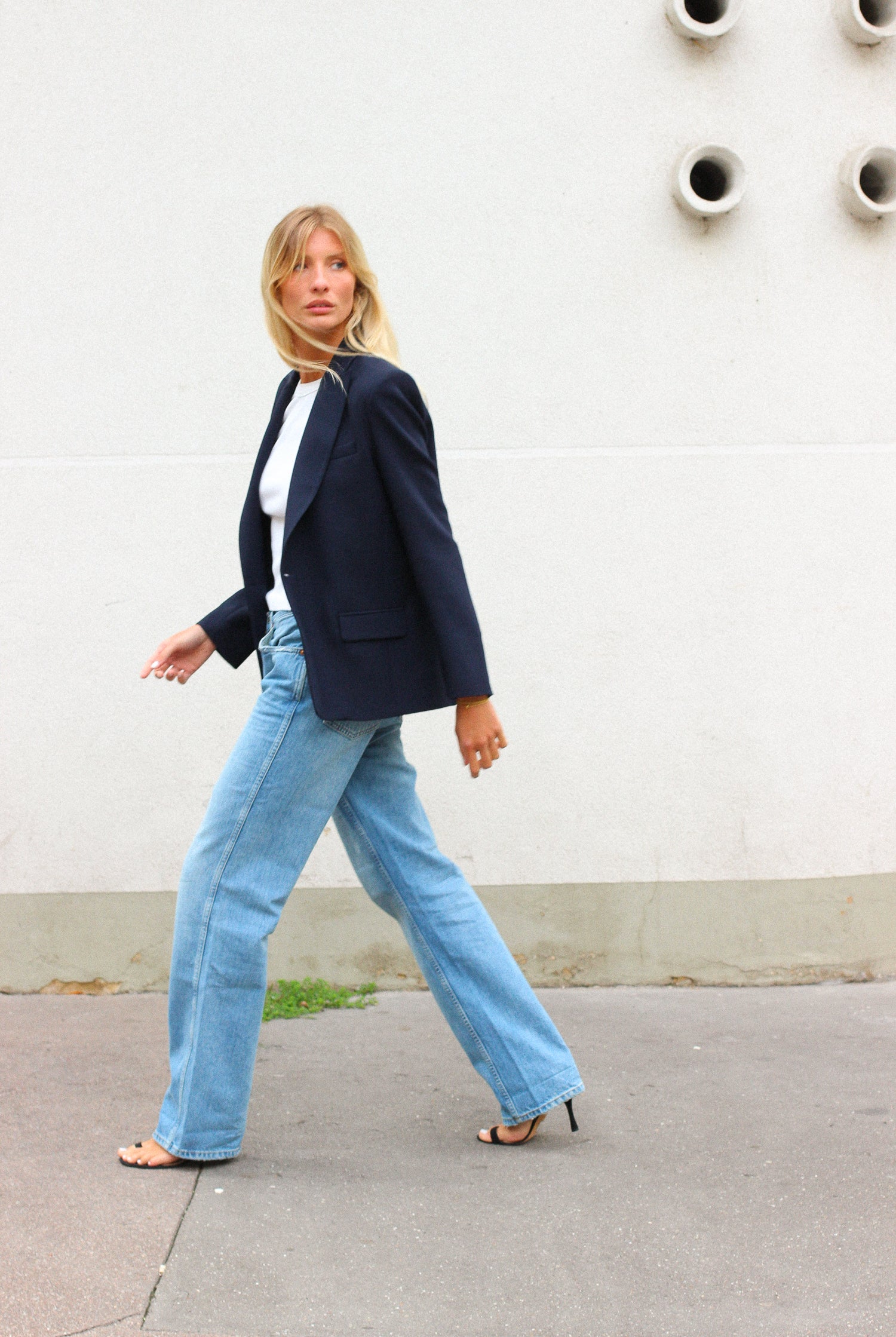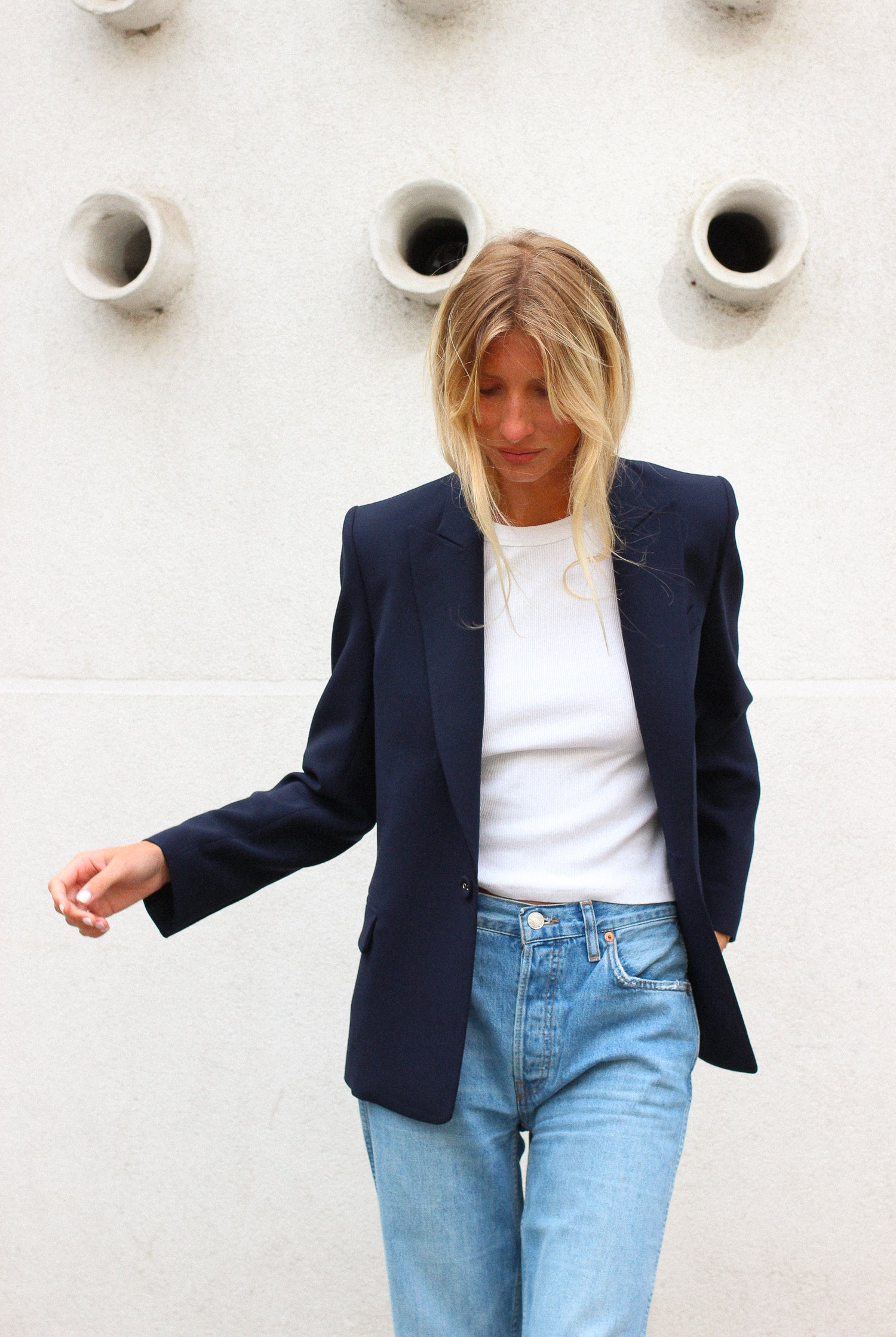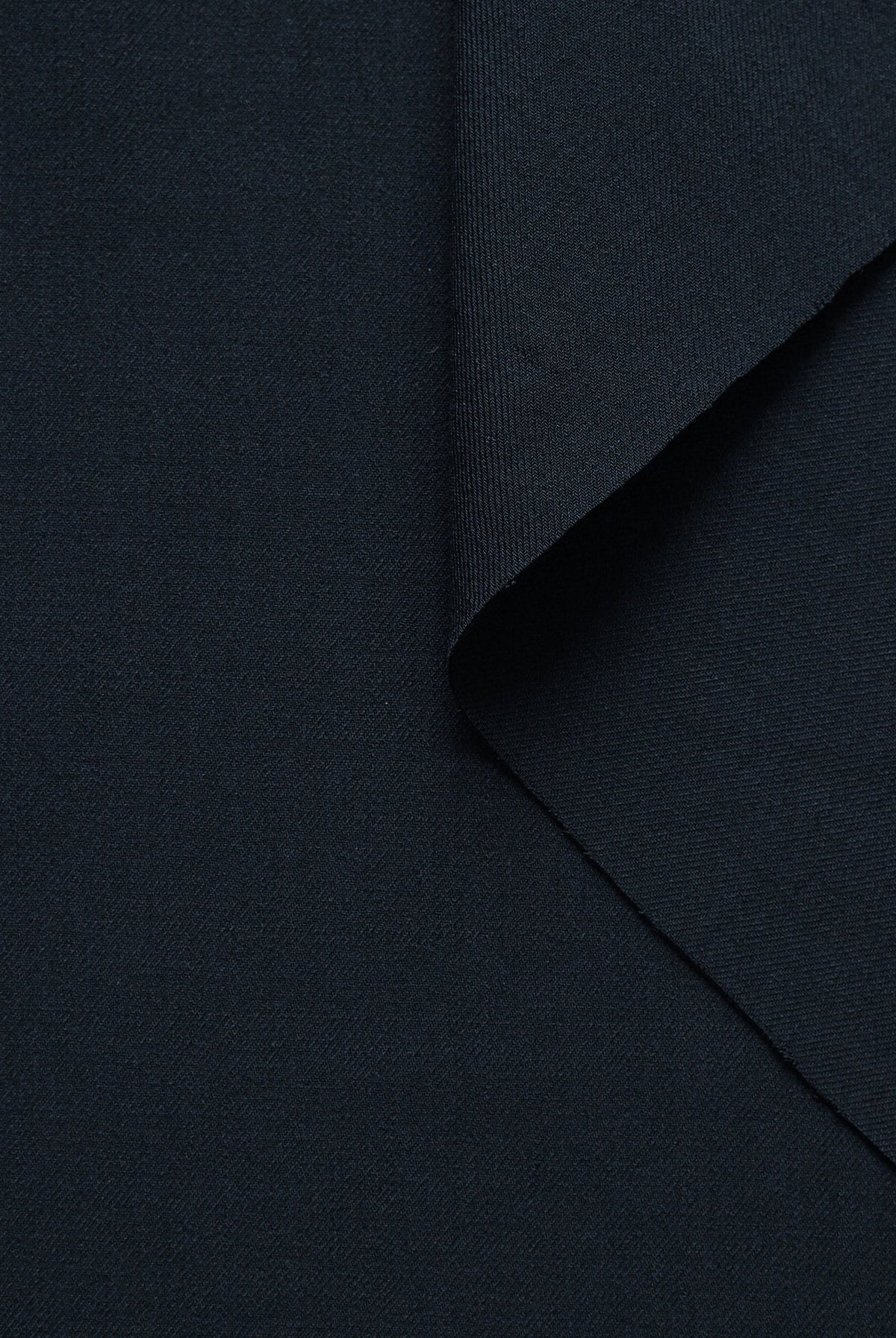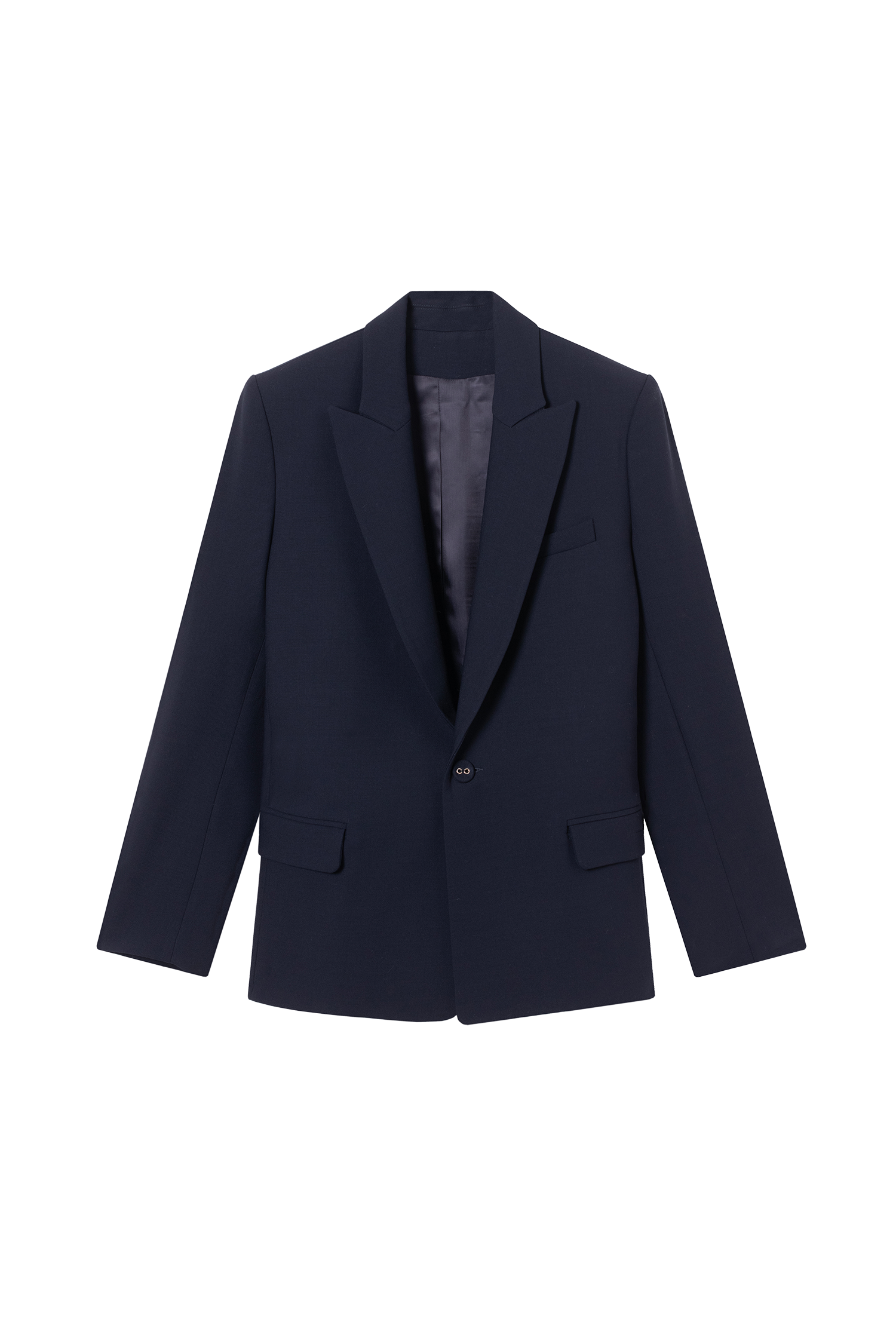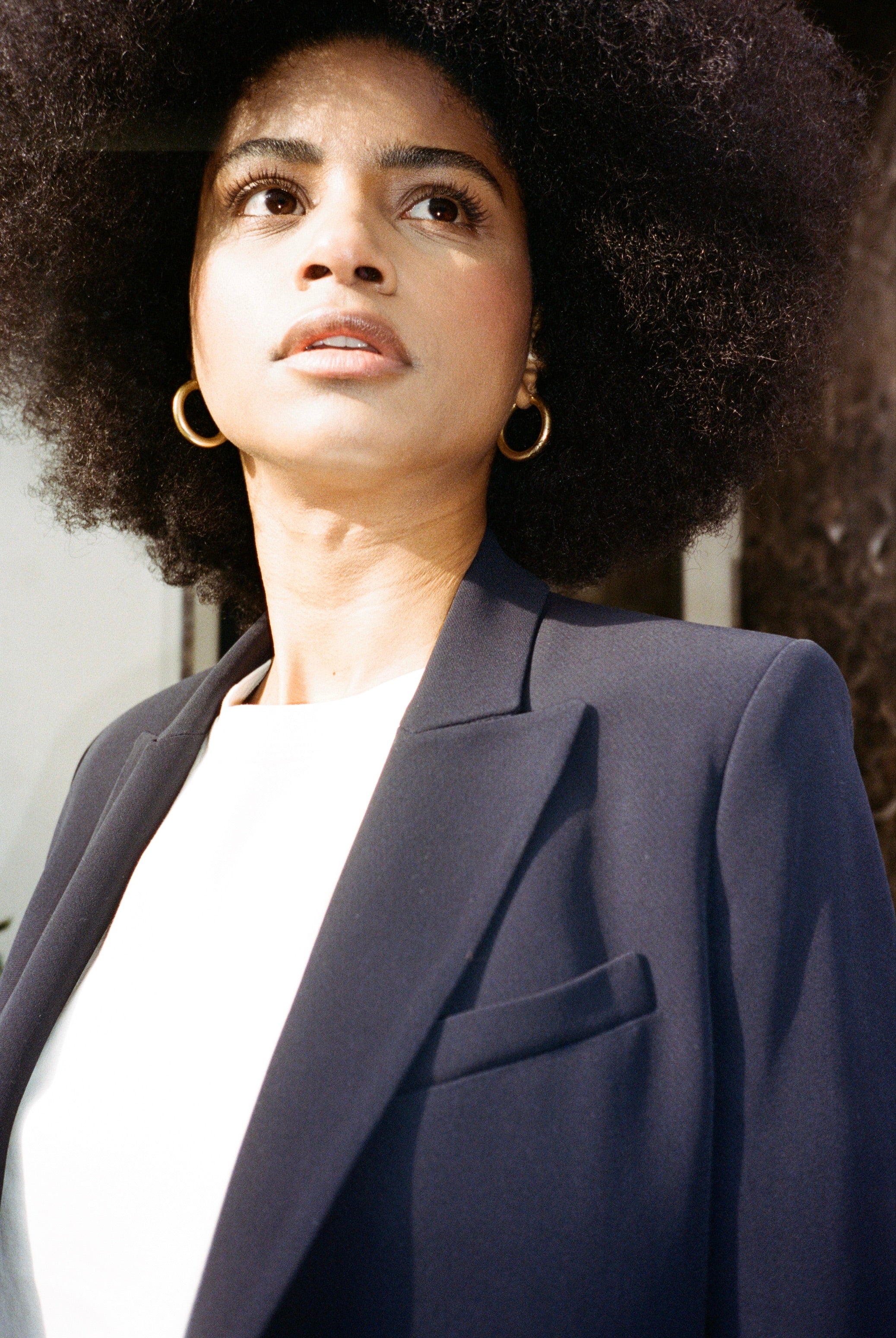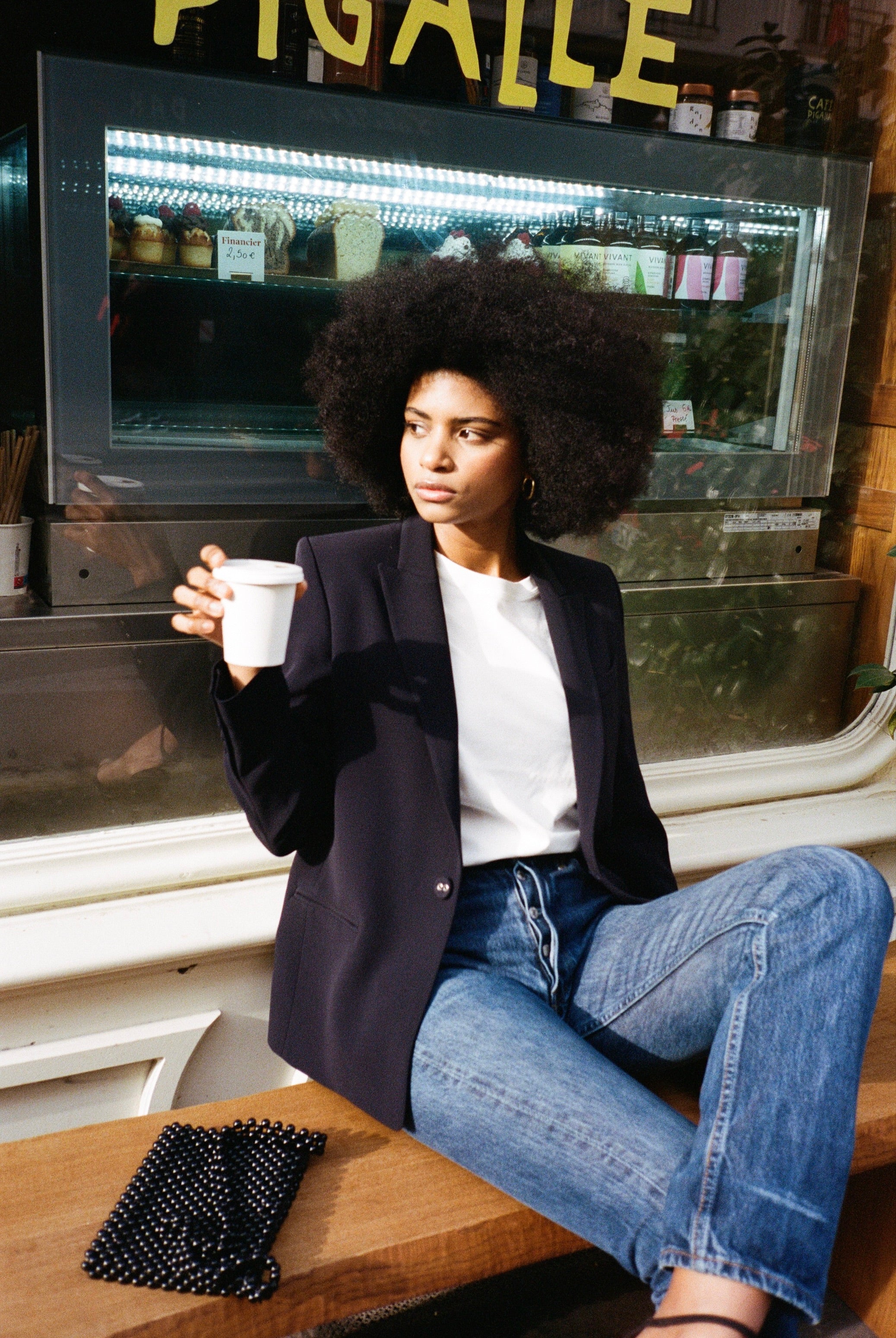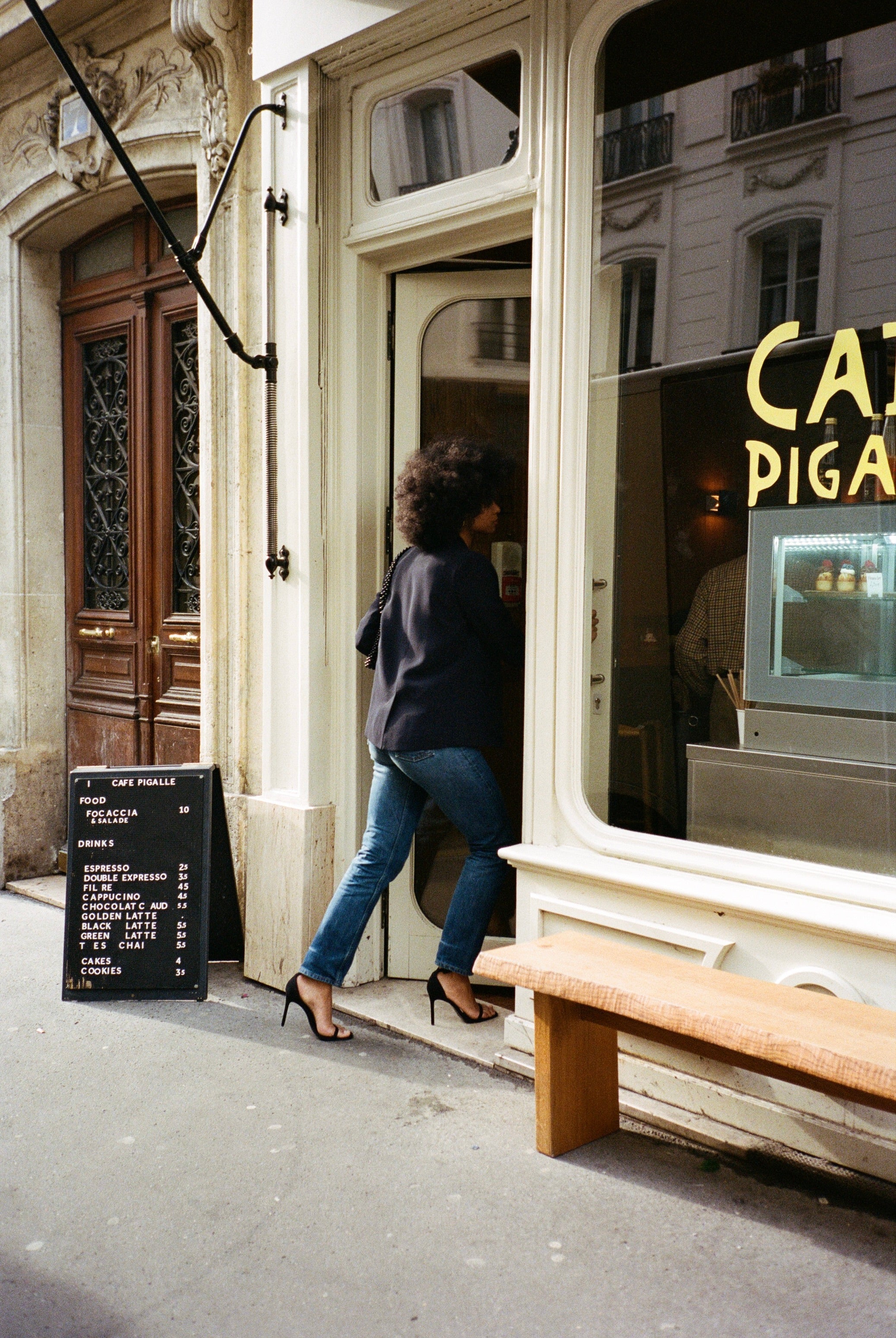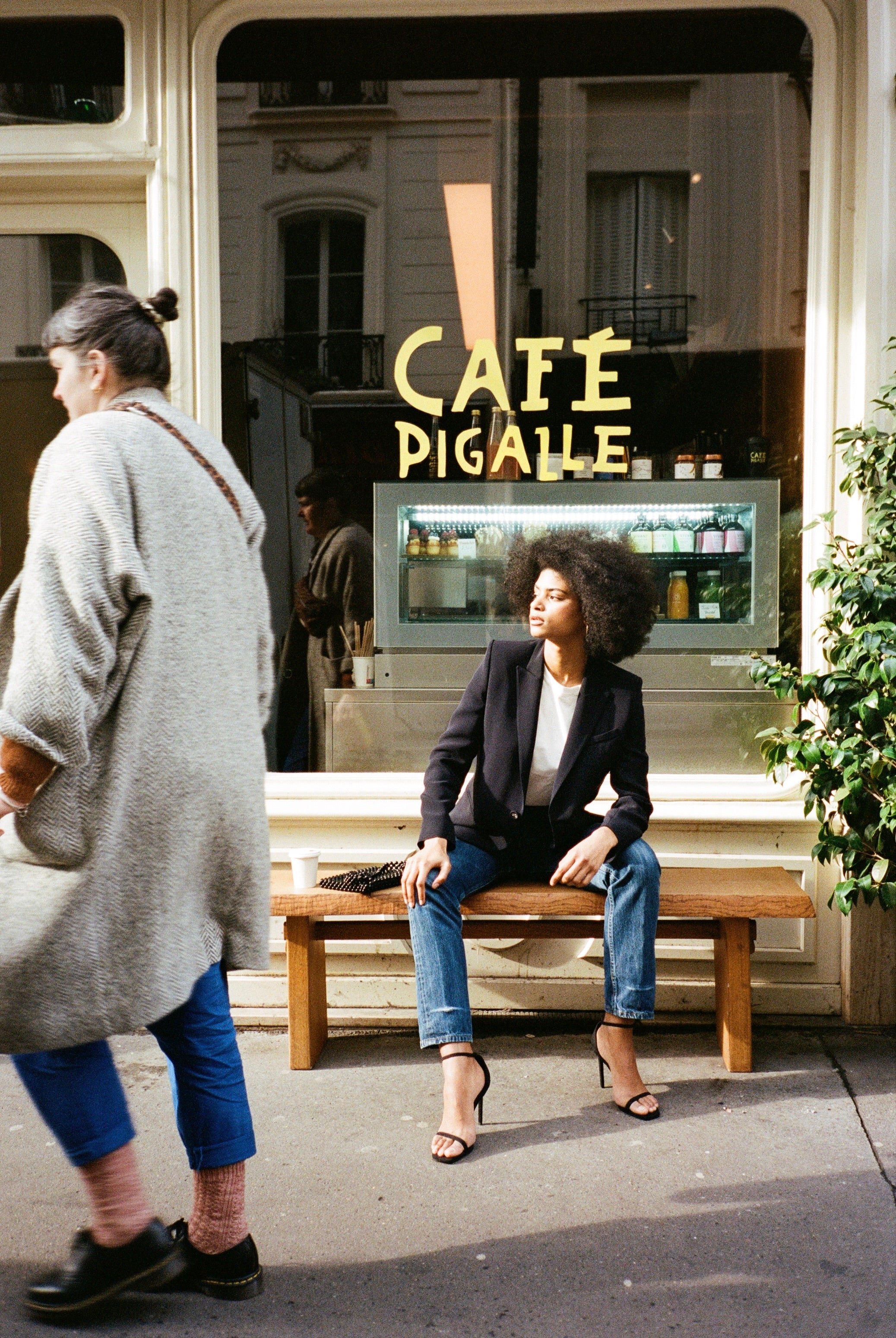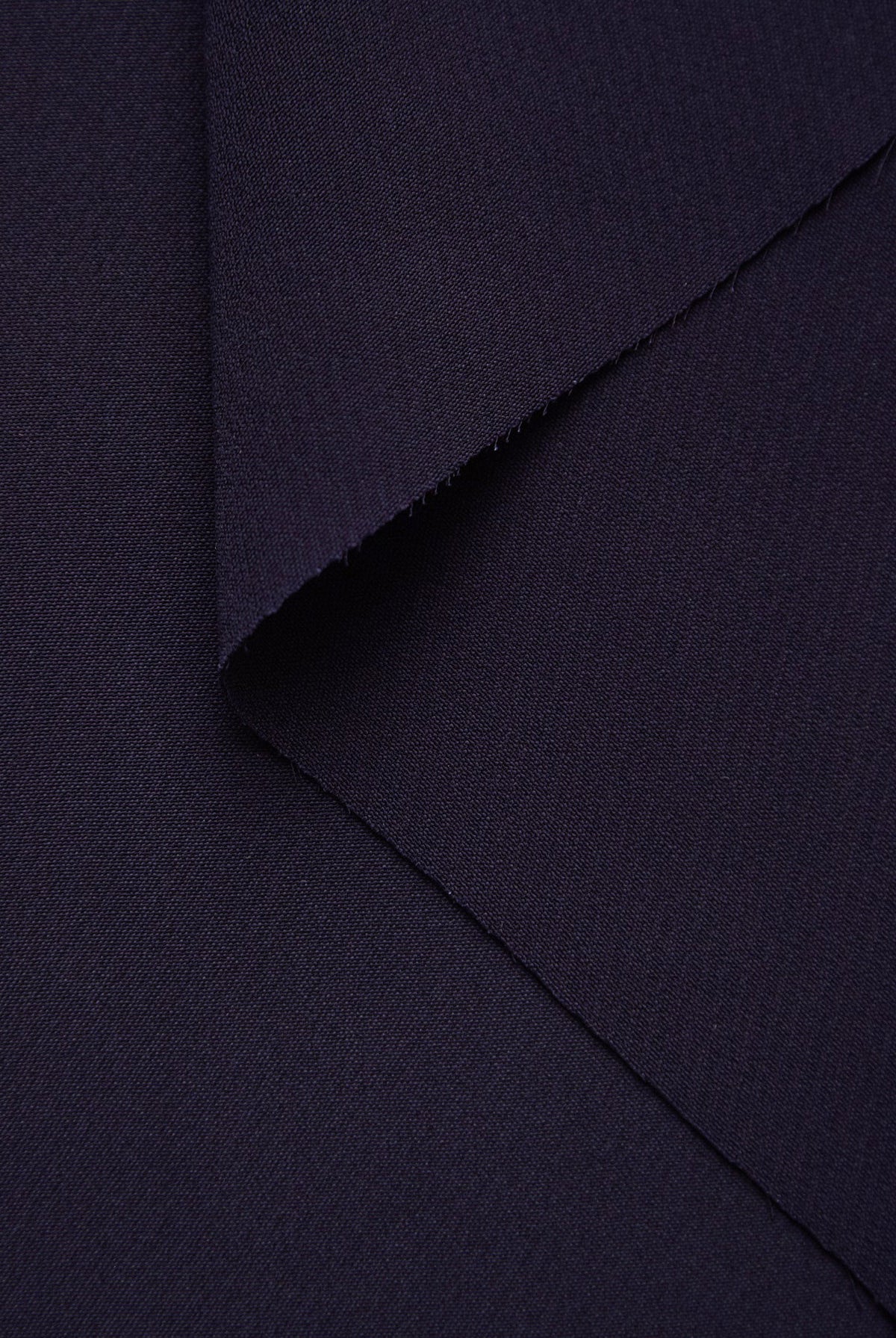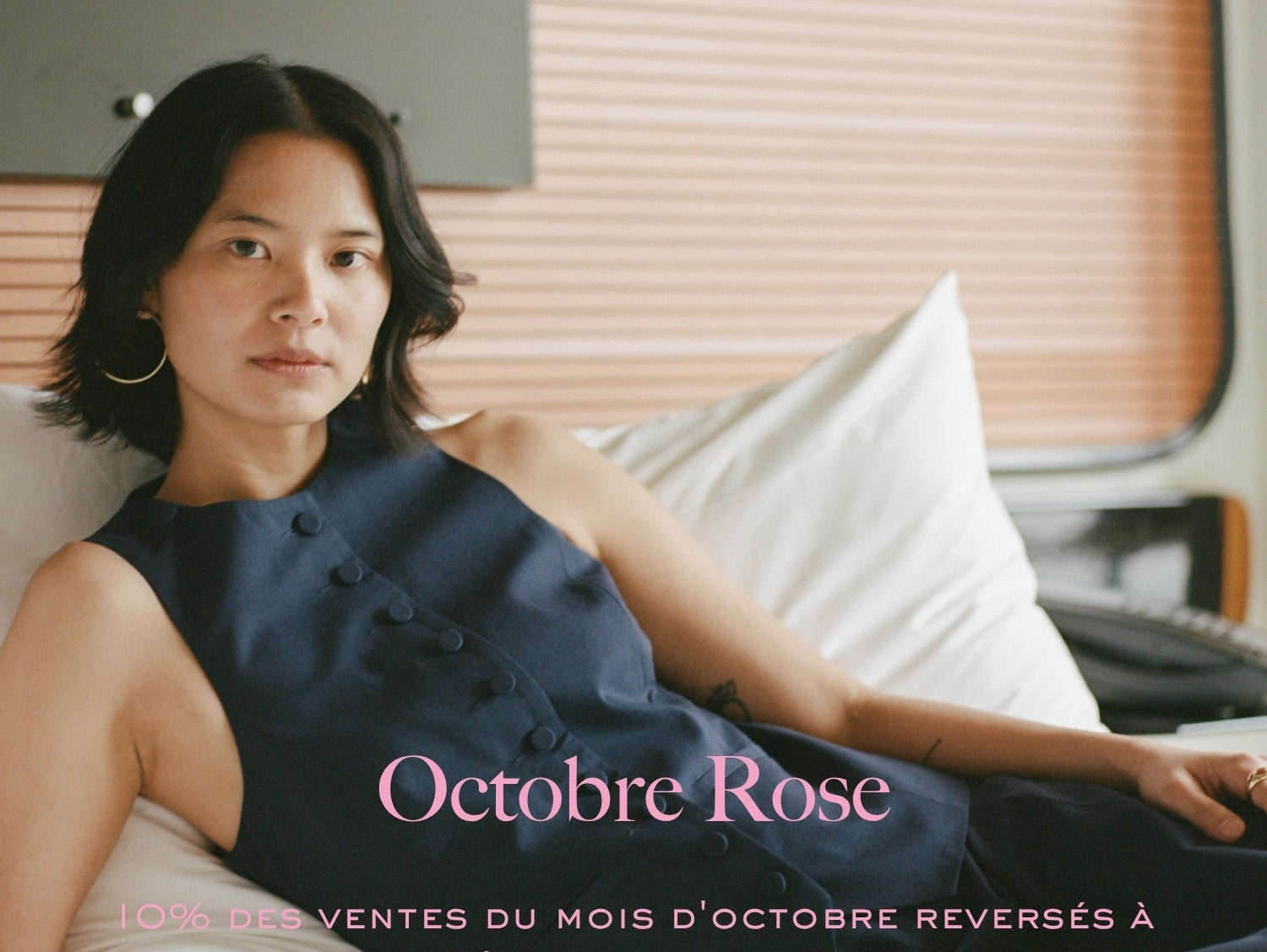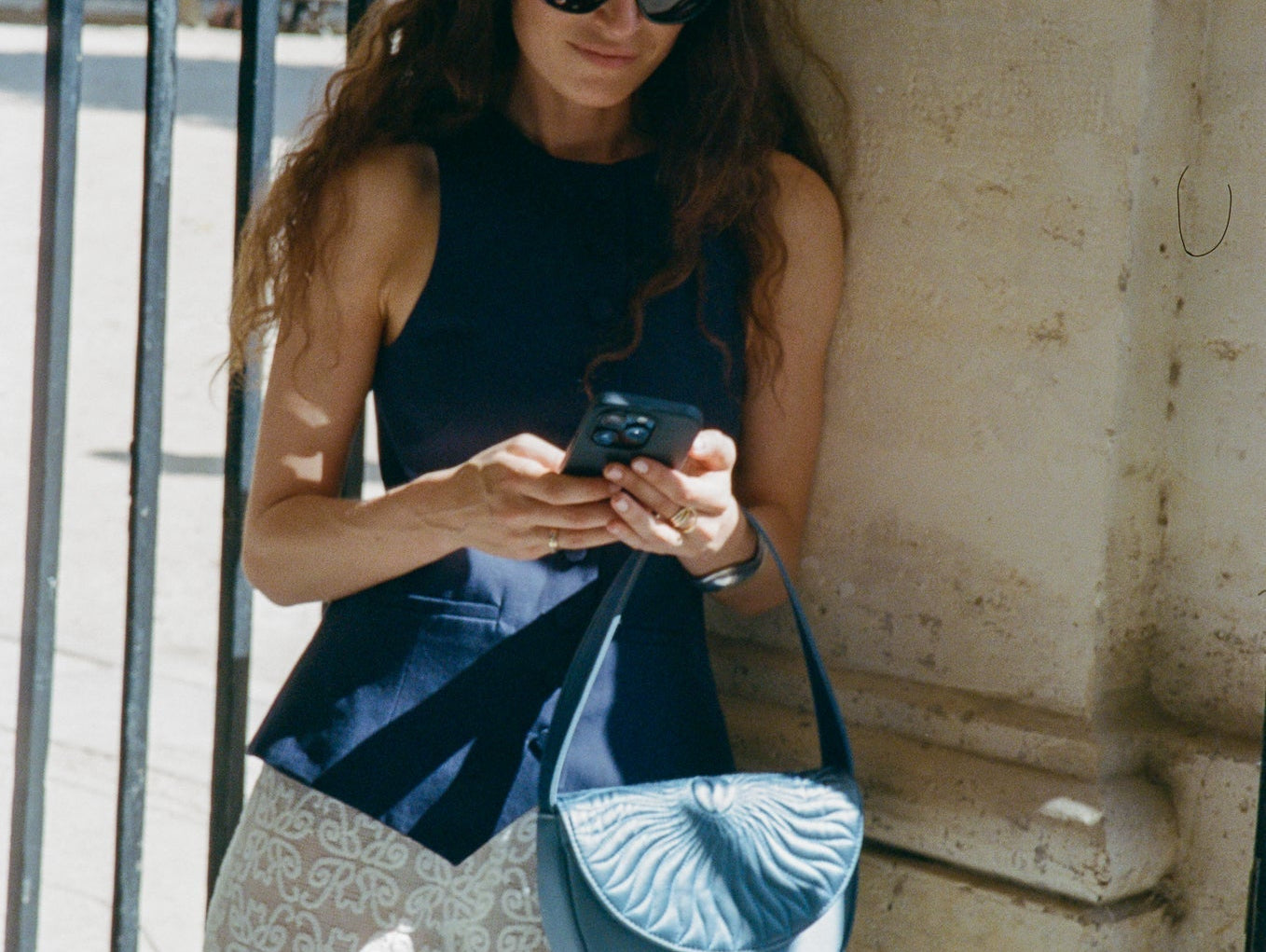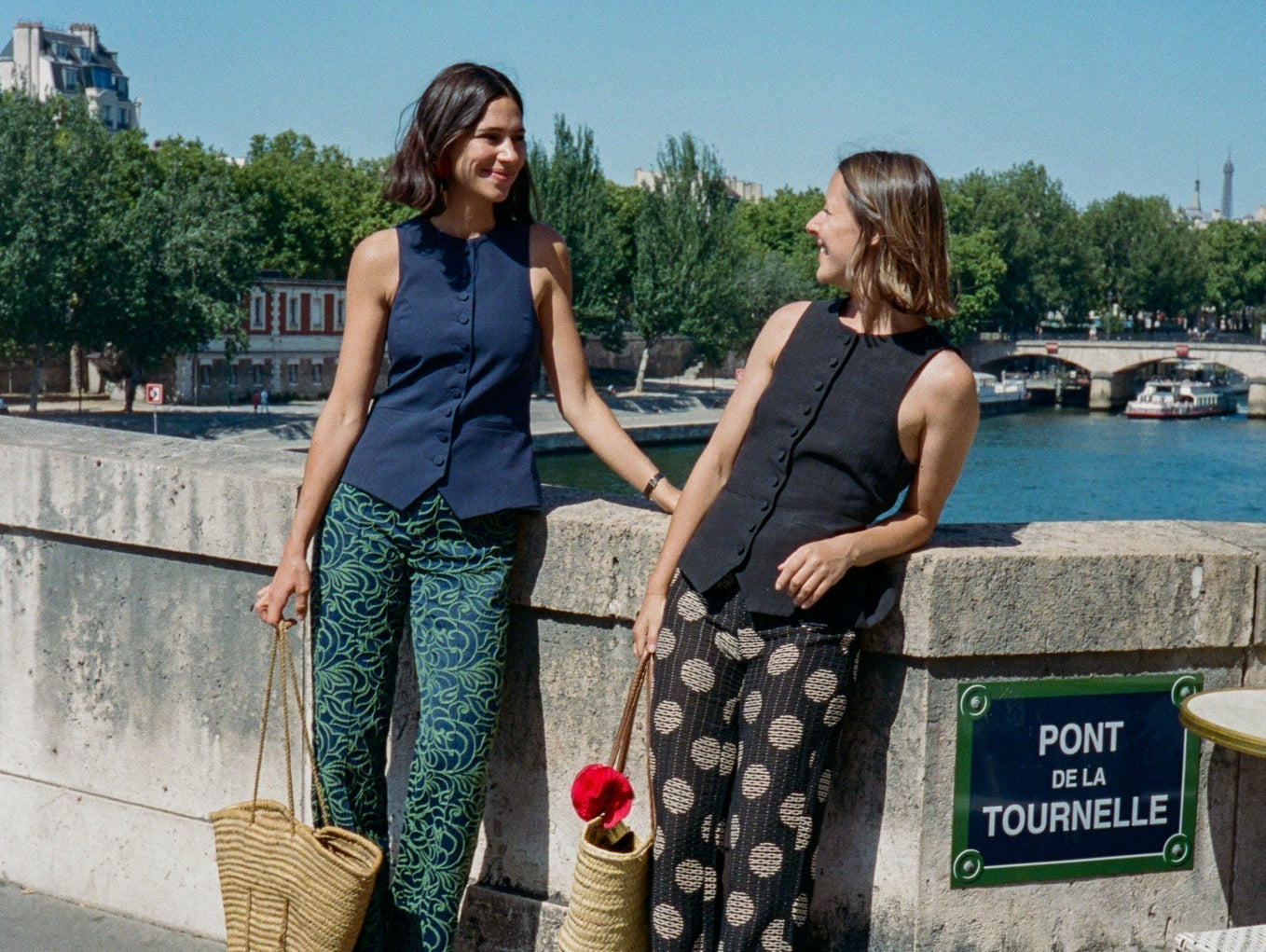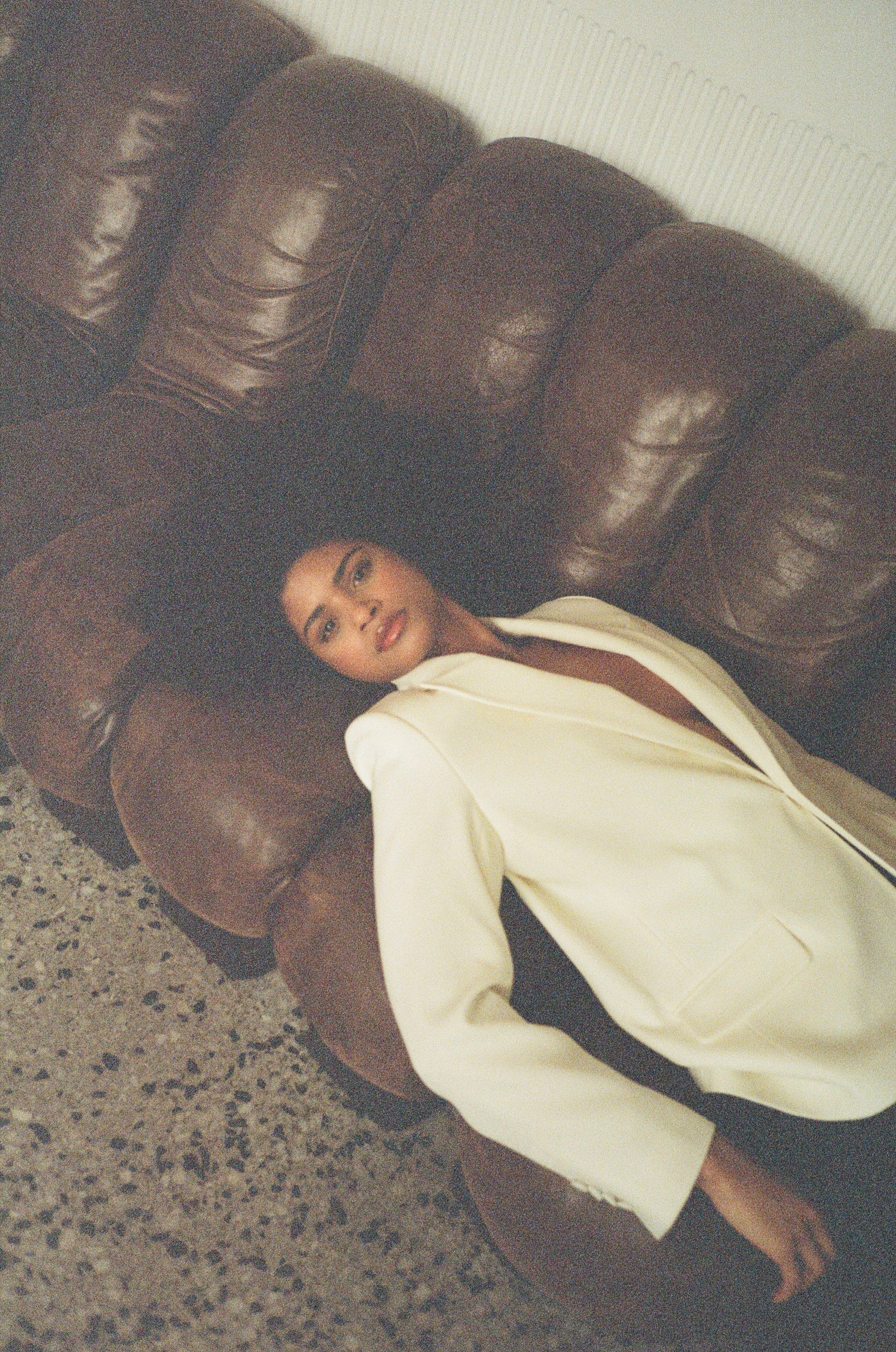
How to choose your tailored jacket?
The tailored jacket is an essential piece in any woman’s wardrobe, now considered a must-have not only for the office but also for evening outings or special occasions. Blazers come in endless styles, and every detail matters when building a unique wardrobe that reflects who you are.
Discover our tips for choosing the perfect tailored jacket, one that truly suits your style and makes you feel good.
Choosing the fabric and material
People often confuse fabric and material: fabric refers to the way a material is woven, while material describes the composition of the fabric. Both play a crucial role in selecting your tailored jacket, as they determine not only the look but also the drape, quality, durability, and comfort of your blazer.
To find a beautiful blazer, it’s best to avoid synthetic materials. Derived from the petroleum industry, synthetics like polyester or polyamide not only shed microplastics into the environment and feel unpleasant to the touch, but they also make you sweat.
High-quality natural materials such as wool, linen, or silk are preferable. Wool gabardine or wool barathea are beautiful, traditionally used fabrics for making tailored jackets.
Wool is a naturally thermoregulating material, it keeps you warm in winter and cool in summer. Contrary to popular belief, wool can be worn year-round, including in summer. It’s the thickness of the wool fabric that should vary with the seasons: choose lighter wool gabardines or wool cloths in summer, and thicker ones for winter.
At Facettes Studio, we guarantee top-quality fabrics sourced from dormant stock held by the most prestigious French and Italian luxury fashion houses. We carefully select only natural or upcycled artificial materials, with no synthetics. Every material is chosen with care to ensure excellent drape, long-lasting wear, and maximum comfort.
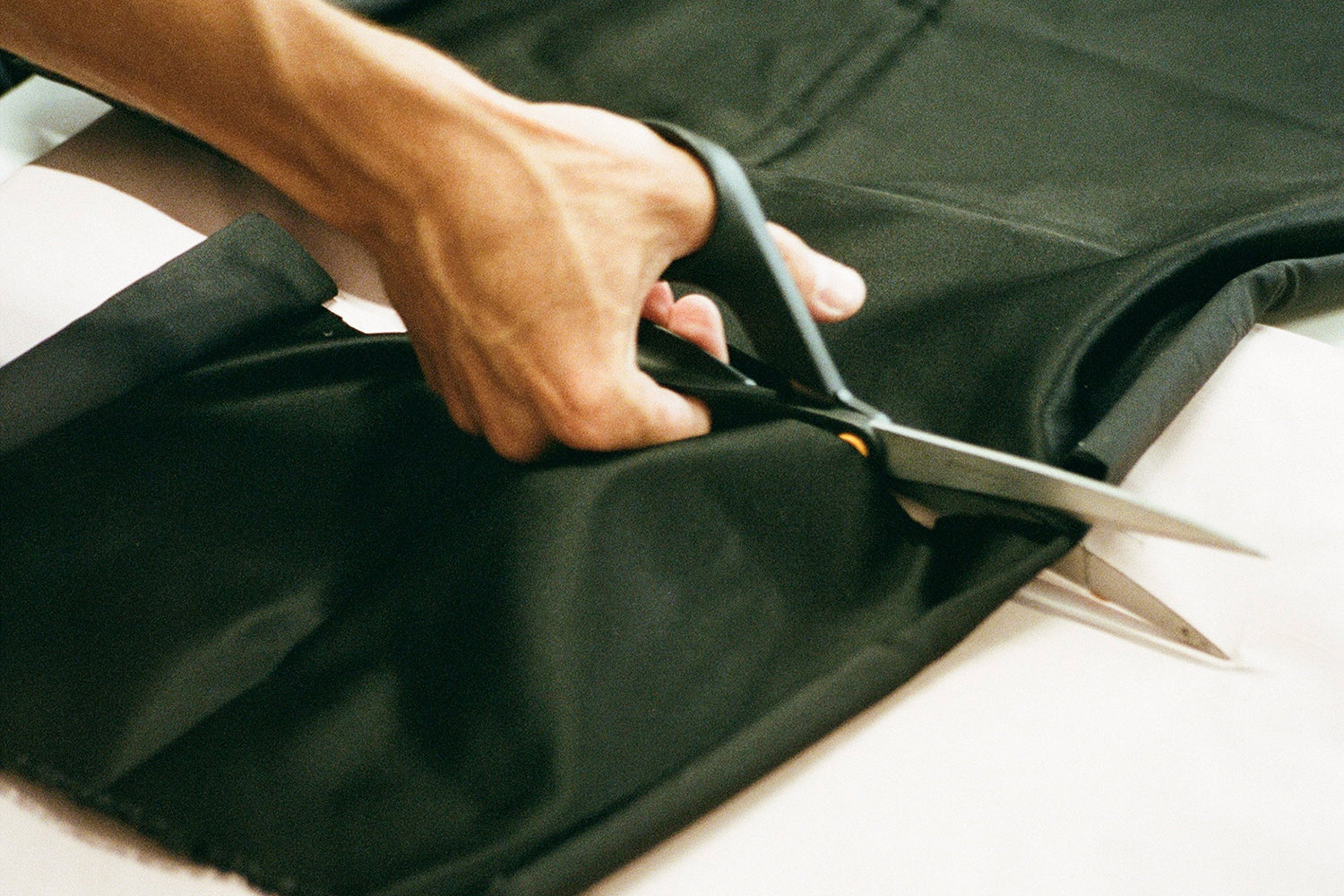
Lining details
Although less visible, the lining is a key element in choosing your tailored jacket. The lining of a jacket (or coat) ensures a comfortable fit and allows for freedom of movement. It should be made from a smooth, flowing material to allow for layering.
For greater comfort, prioritize natural or artificial linings rather than synthetic ones, which tend to make you sweat.
At Facettes Studio, we source linings made from viscose twill or cupro, artificial materials derived from natural fibers, with thermoregulating properties for extra comfort.
You'll find tone-on-tone linings or more colorful linings at Facettes, adding a touch of personality to our blazers while maintaining timeless elegance.
Choosing the collar
The shape of a blazer’s collar, including the lapels and their proportions, can completely transform the harmony of a tailored jacket.
There are three main types of lapels: notch lapels, peak lapels, and shawl collars.
We have chosen peak lapels, a style traditionally more formal, perfect for dressier jackets such as tuxedos, and considered one of the most elegant lapel types.
We’ve opted for balanced proportions, not too narrow, not too wide, for a timeless look.
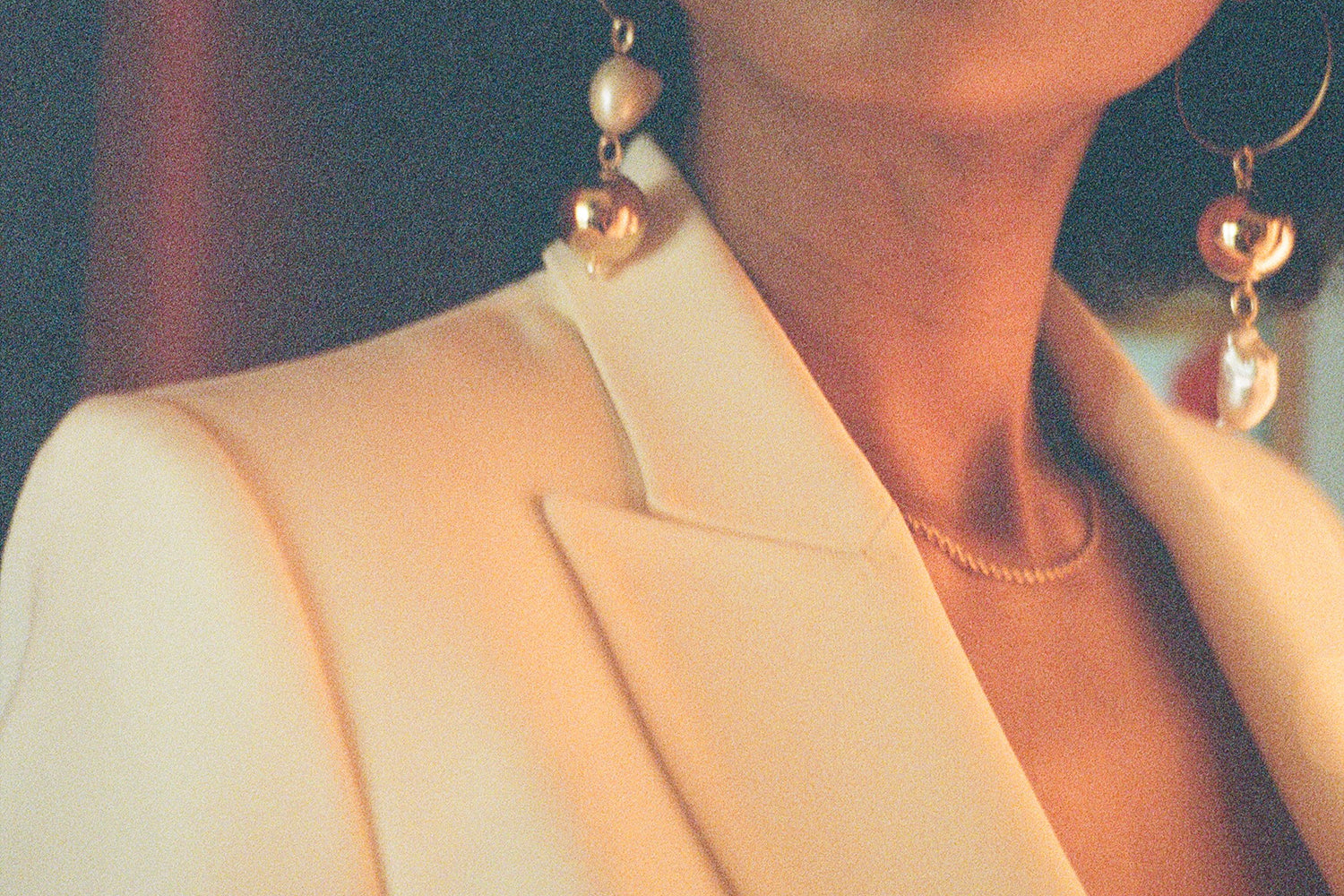
Choosing the pockets
Pockets play an important role in choosing your tailored jacket. Beyond their utility, they also have aesthetic significance.
Typically, blazers have two side pockets and one chest pocket, plus one or two interior pockets on the lining.
According to sartorial tradition, pockets are sewn shut to prevent damage during transport, and should be carefully unstitched after purchase.
In recent years, many brands have started producing jackets with fake, non-functional pockets to maintain aesthetic quality while reducing manufacturing costs.
At Facettes Studio, we’ve chosen to create real, usable pockets. However, be careful not to overfill them with bulky or heavy items, as this could affect the drape of your jacket.
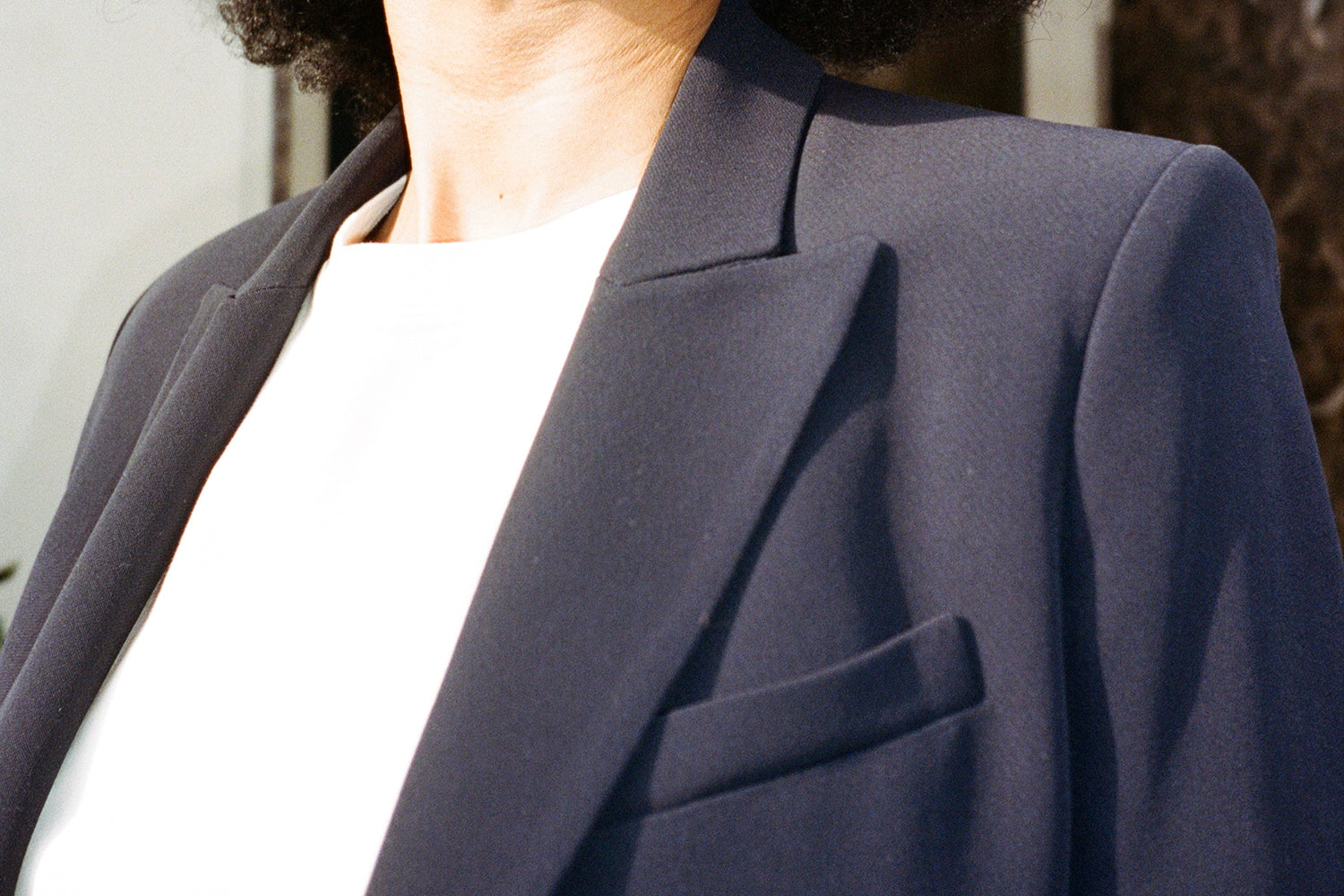
Choosing the buttons and closure
Buttons and closures are far from trivial, they play both a functional and aesthetic role in a jacket’s overall appearance.
There are two main jacket closure styles:
- Single-breasted
- Double-breasted
Single-breasted jackets typically have one or two front buttons, while double-breasted versions feature multiple buttons (usually four or six).
Sleeve buttons are also worth considering, as they add both practicality and elegance.
If you pay close attention, you’ll notice that many brands no longer include working buttonholes on sleeves, or they reduce the number of buttons, often using fake buttonholes as a cost-saving measure. At Facettes Studio, we only use real buttonholes, because every detail matters.
The type of button can completely change a jacket’s style, making it more or less formal: gold, silver, mother-of-pearl, wood, or fabric-covered... the aesthetic finishes vary widely.
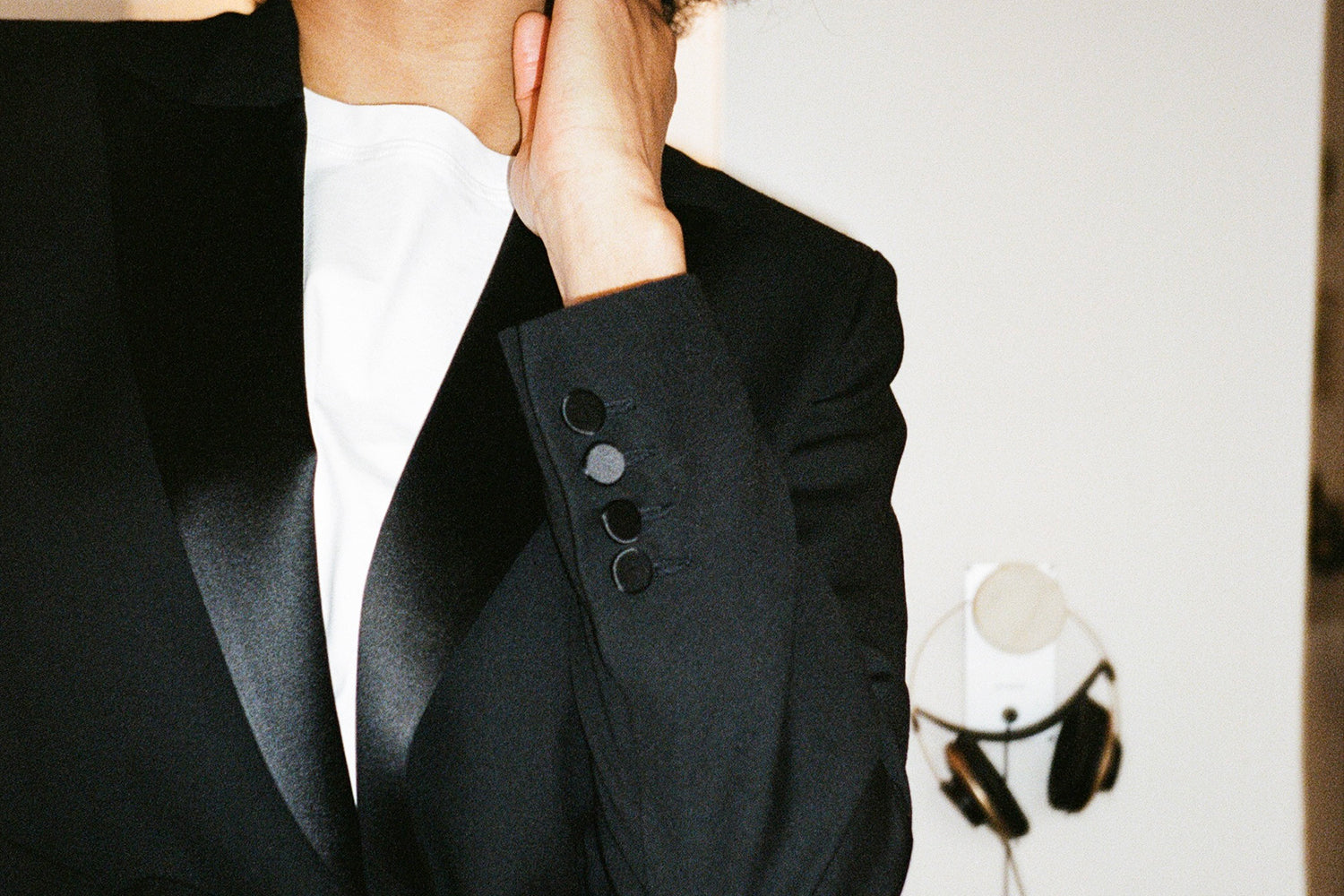
We’ve chosen to use only fabric-covered buttons, each handcrafted in Paris, an intentional choice to support local craftsmanship and create a minimalist, elegant finish that showcases the fabric itself.
You now have all the key elements to help you choose a high-quality tailored jacket that truly suits you, so you can buy less, but better, and enjoy clothing you’ll wear often and for a long time.

